Artist Research
David Nash
David Nash is a well known successful sculpture/artist/tree surgeon. During our trip to Yorkshire Sculpture Park I came across the piece 'Black Mould' which was installed in 2013. This stood out to me more than other pieces in the park because I like the use of material, unseasoned wood. Because he chooses to use unseasoned wood for his work this means that it warps and changes shape/cracks over time. As this was installed 10 years ago it intrigued me to think how it would have changed over the last decade. I also like that he has burnt the wood in a controlled manner to charr it and turn it black rather than painting it because this means the burning becomes a part of the wood throughout rather than sitting on top.


'Black Mould' being burnt in a controlled manner
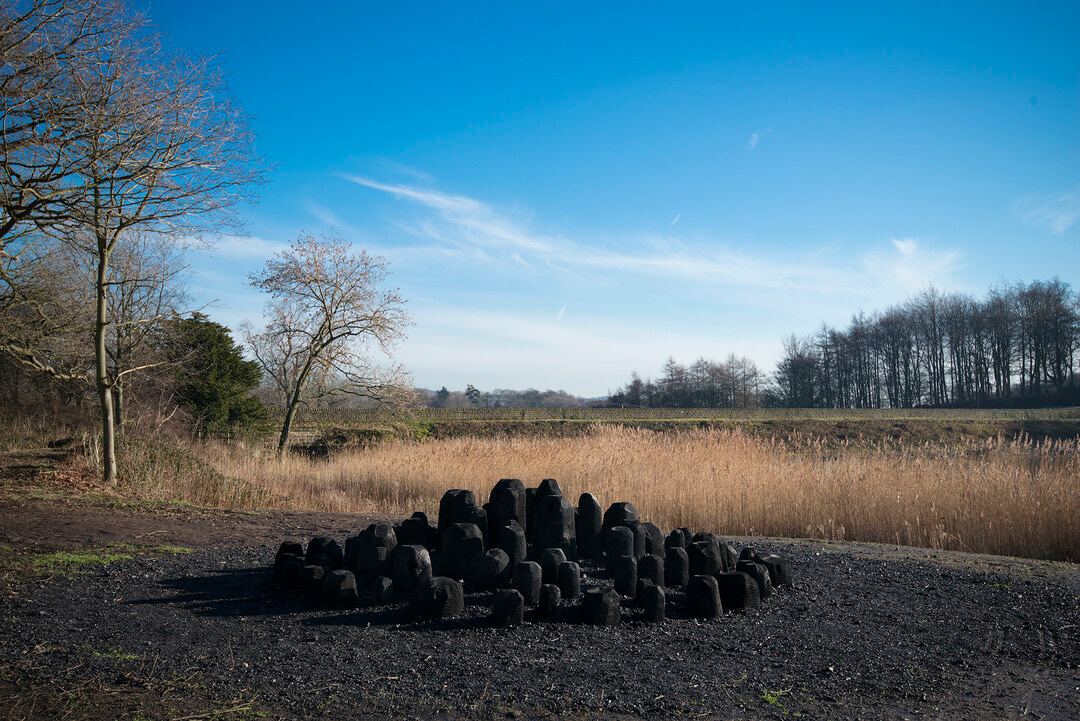
'Black Mould' at Yorkshire Sculpture Park
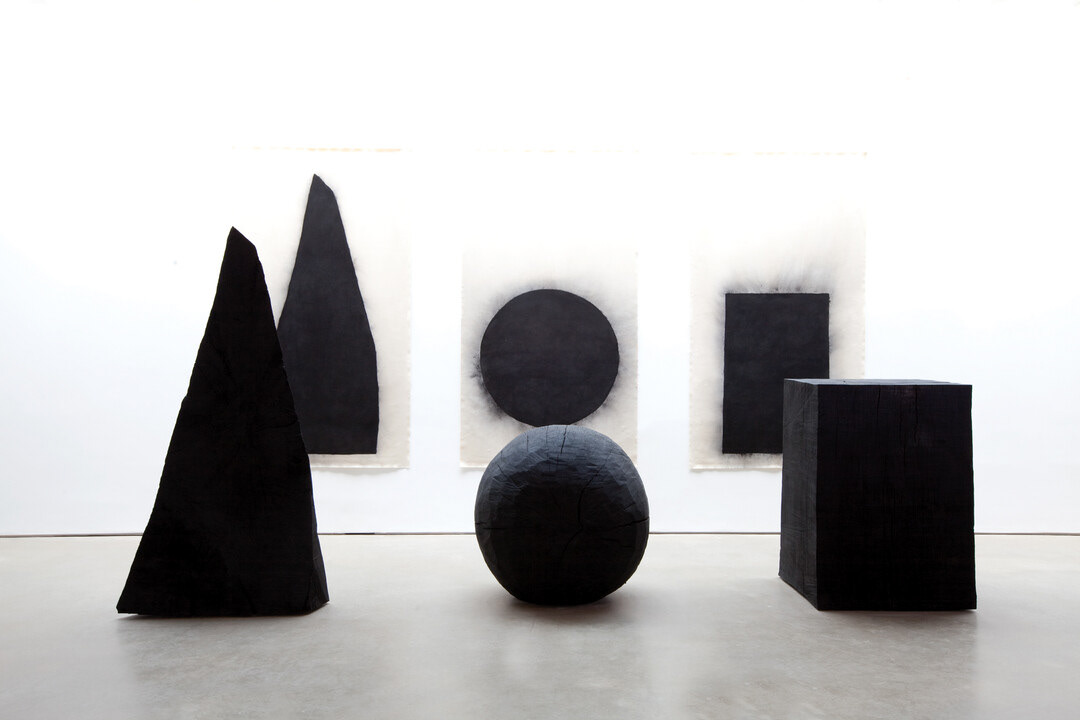
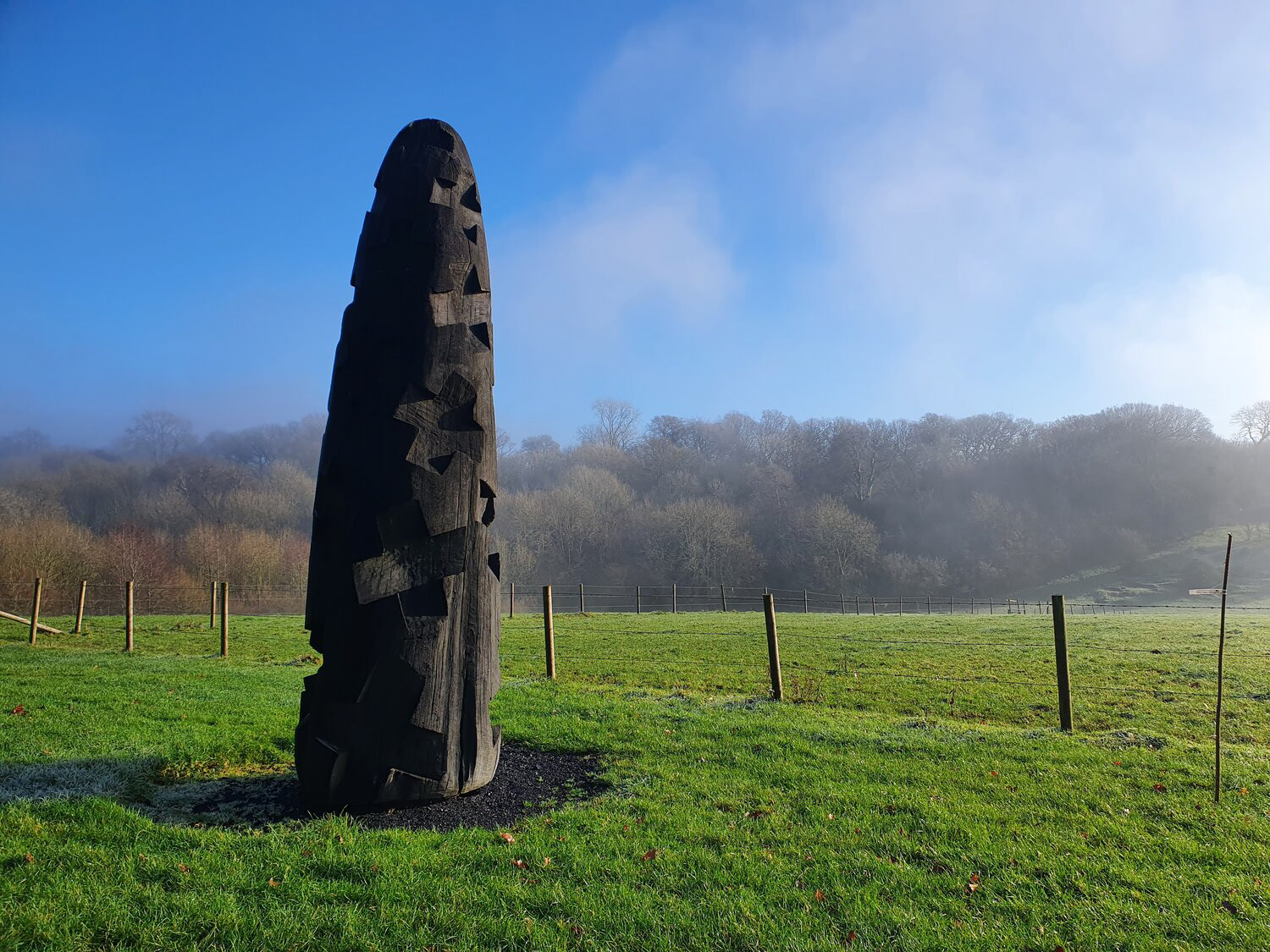
As my first ideas for this unit I wanted to create something taking inspiration from this work. I wanted to incorporate charred wood into my work and burn it using molten glass to leave the impression from the shape of the glass onto the wood. However I also liked the idea of burning it first and adding the glass later.
Lynden Over
Lynden Over is a glass artist from New Zealand who focusses on working with hot blown glass. The inspiration for his work comes from the landscapes, geology and light within New Zealand. He makes the most out of the properties of glass using them to create pieces thats change depending on the light, similar to how landscapes look different depending on the natural light. A method he uses is to trail coloured glass in layer to create a brushed/paint look.
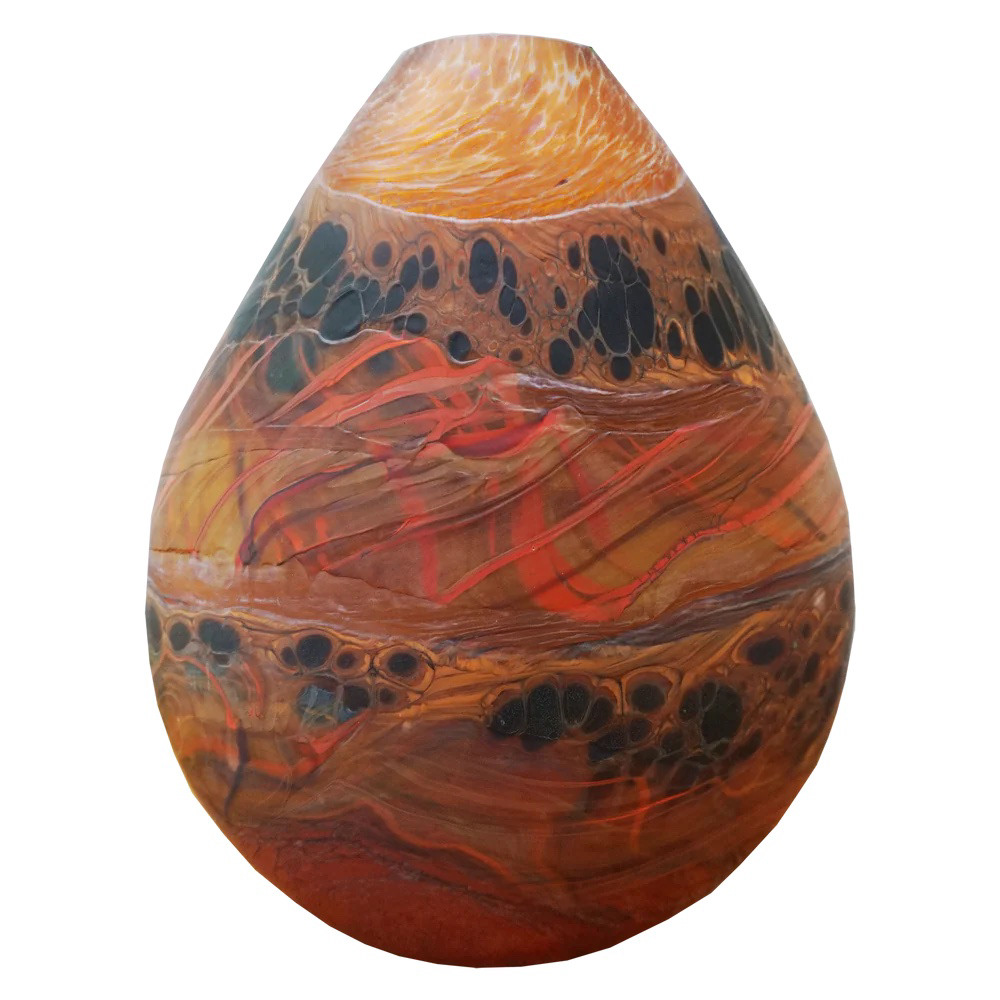
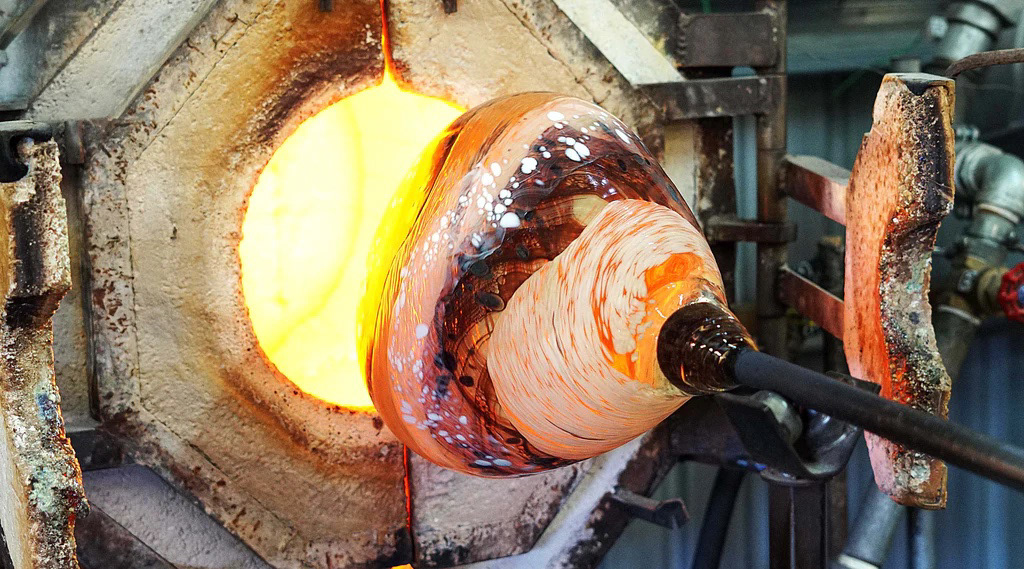
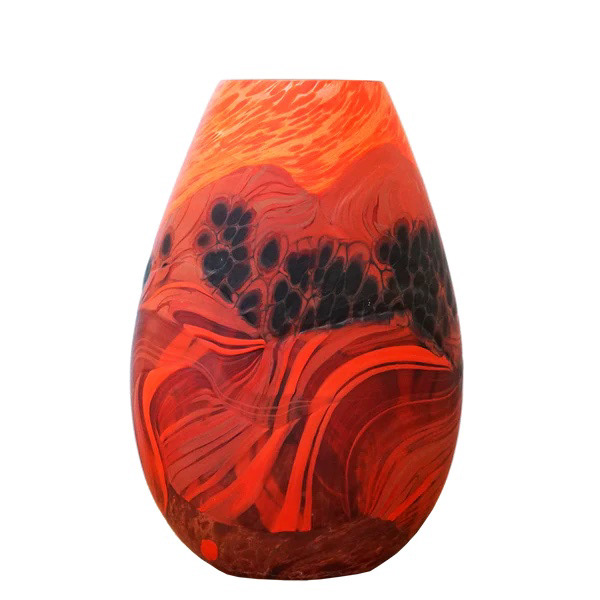

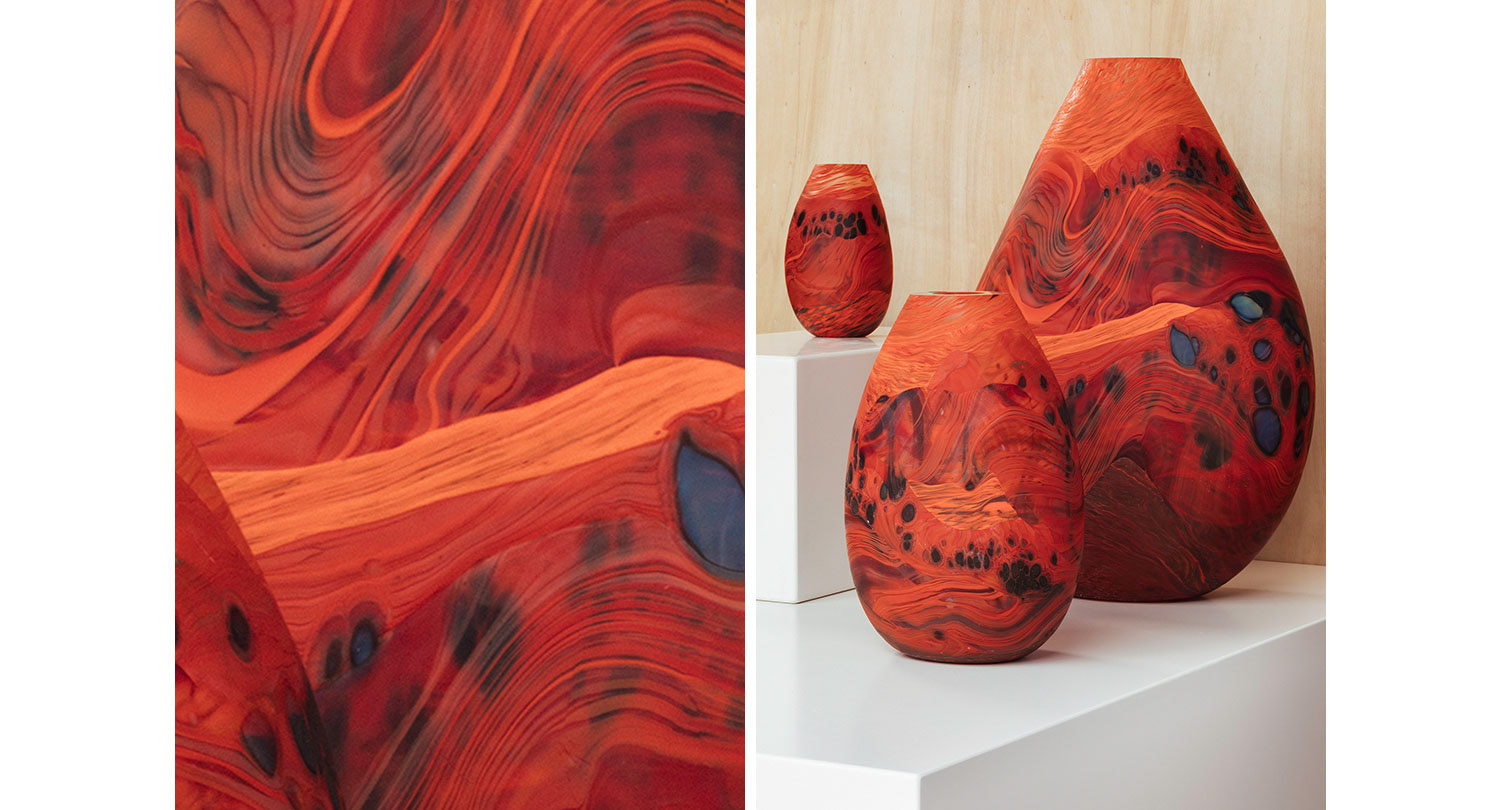
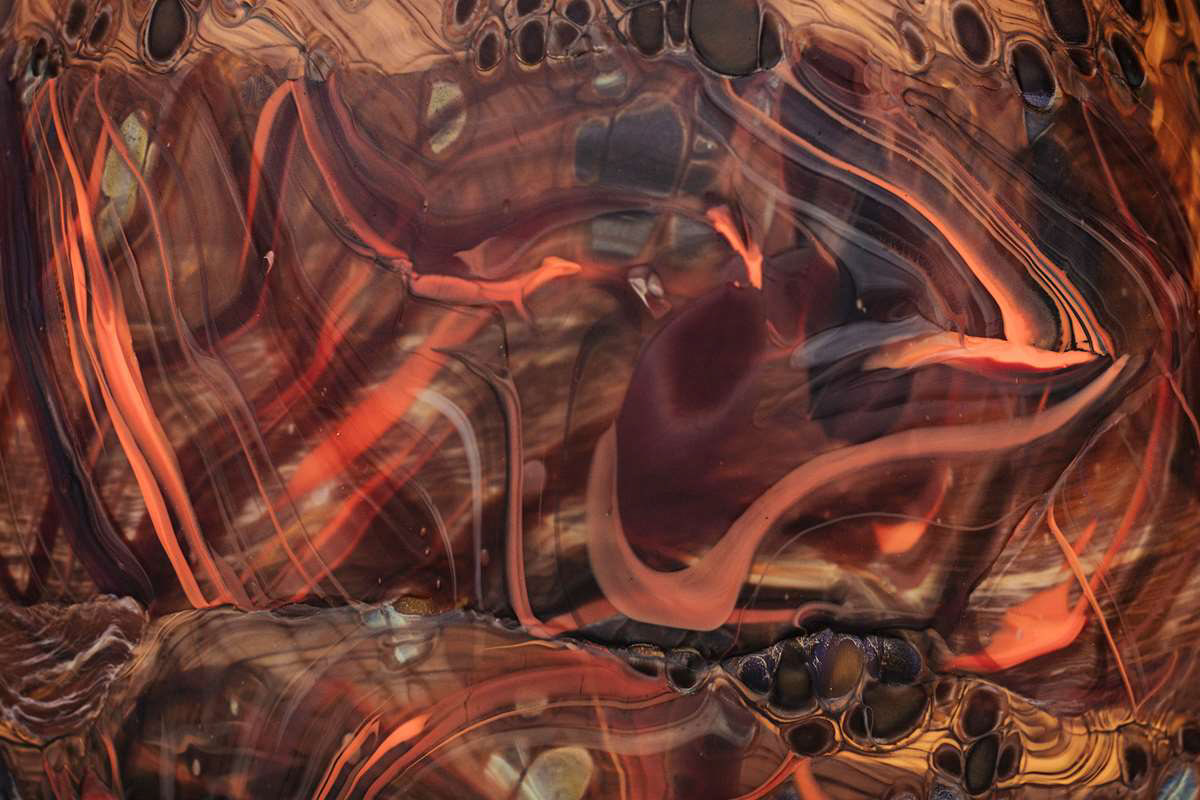
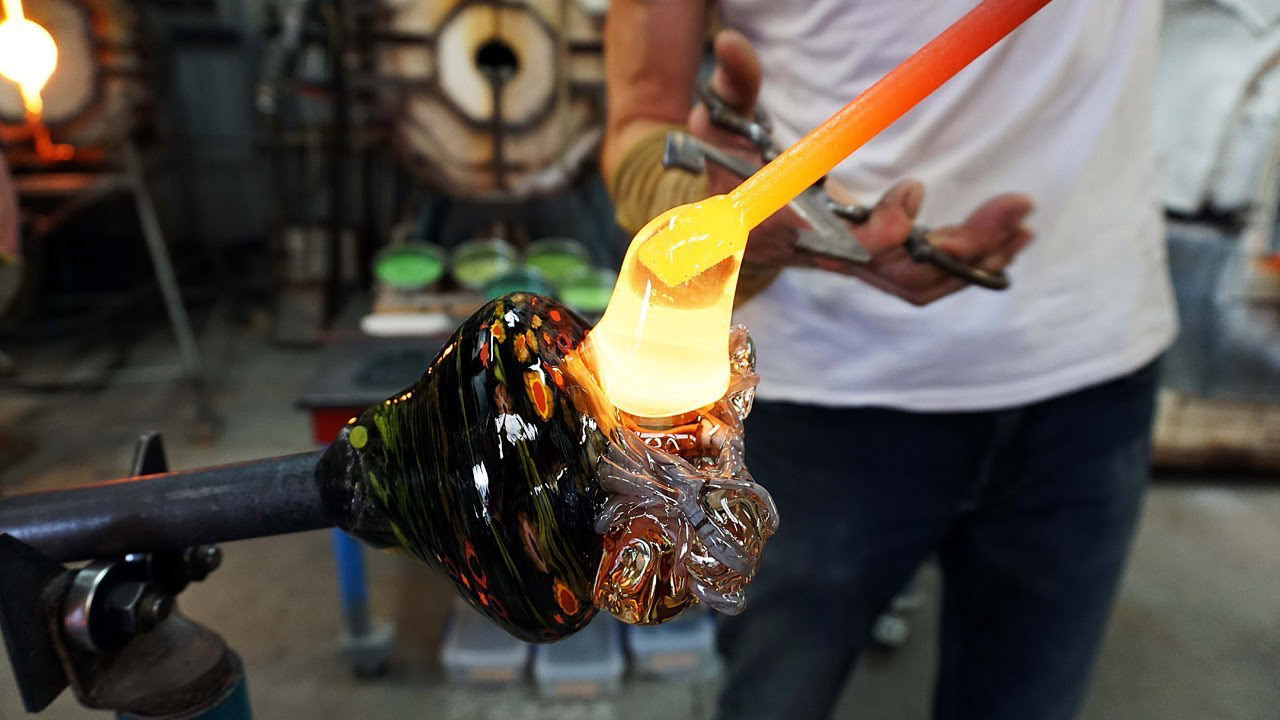
Along with work from David Nash, in the early stages of my first ideas I wanted to use influences from Lynden's work. I wanted to combine charred wood and red blown glass and develop off that initial idea. I like the bold colours of Lynden's work with the contrast of smaller details in black. I reminded me of lava which also have similarities to glass when it is at its hottest state straight out of the furnace.
Philip Baldwin & Monica Guggisberg
Phillip Baldwin and Monica Guggisberg are a glass duo who work with hot glass along with very difficult cold techniques. Over 40 years they have mastered techniques such as Battuto, Incalmo and sandblasting amongst others to create the pieces they do. The work created by Phillip and Monica particularly stand out to be because of their striking colours and textures. The level of skill to achieve the results of there work is inspiring as well the extensive amount of detail.

Sketches by Philip & Monica
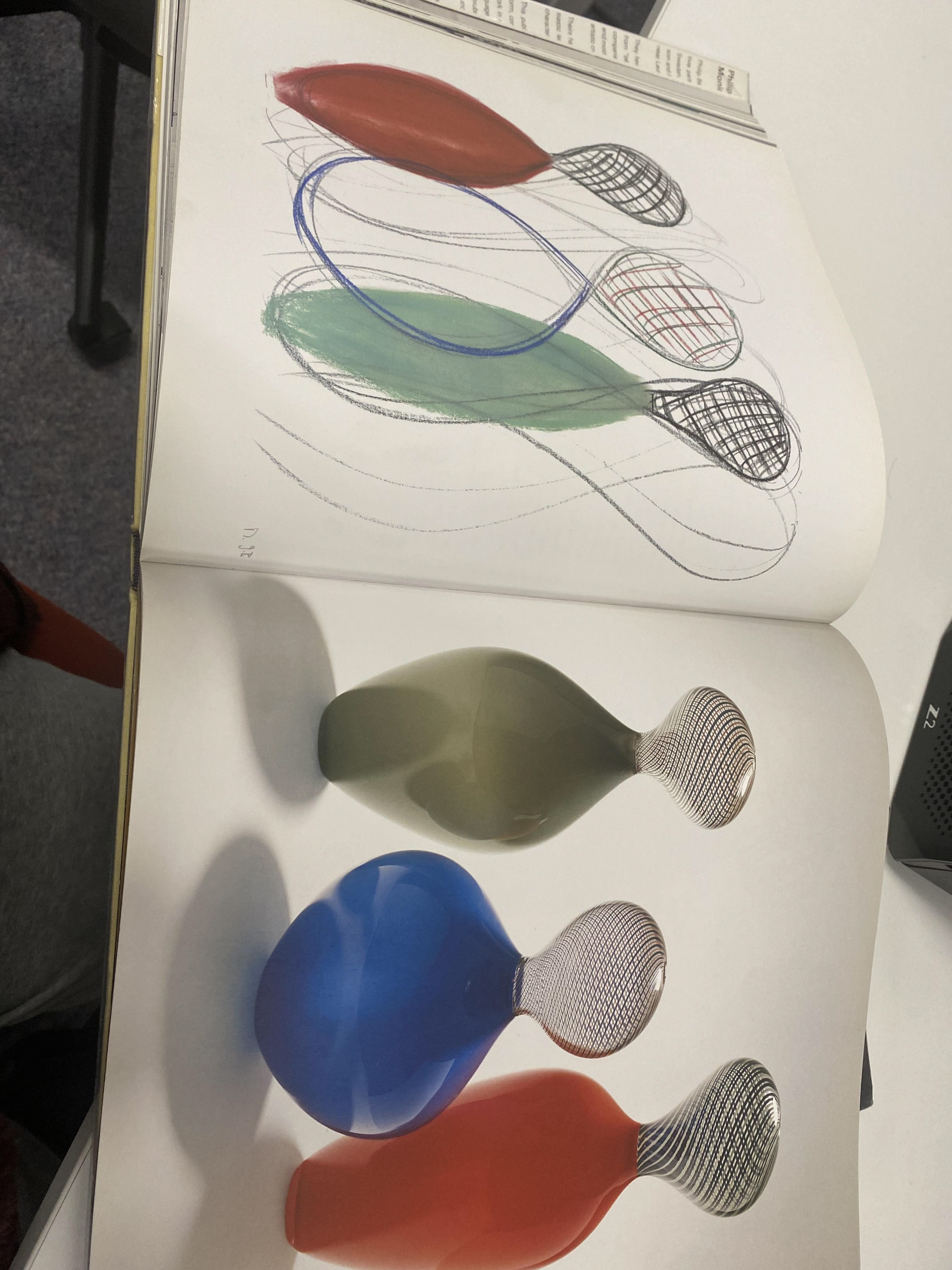
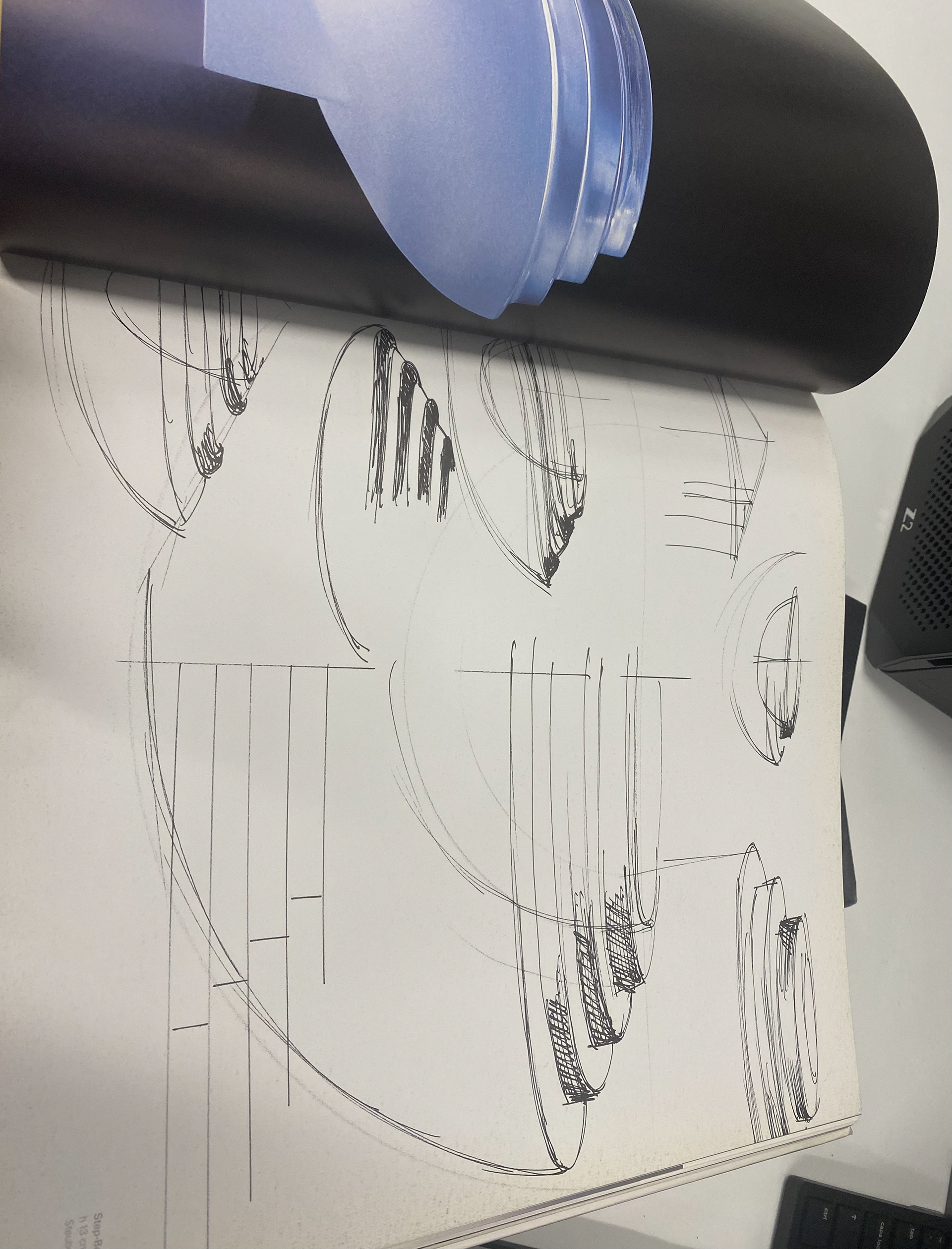
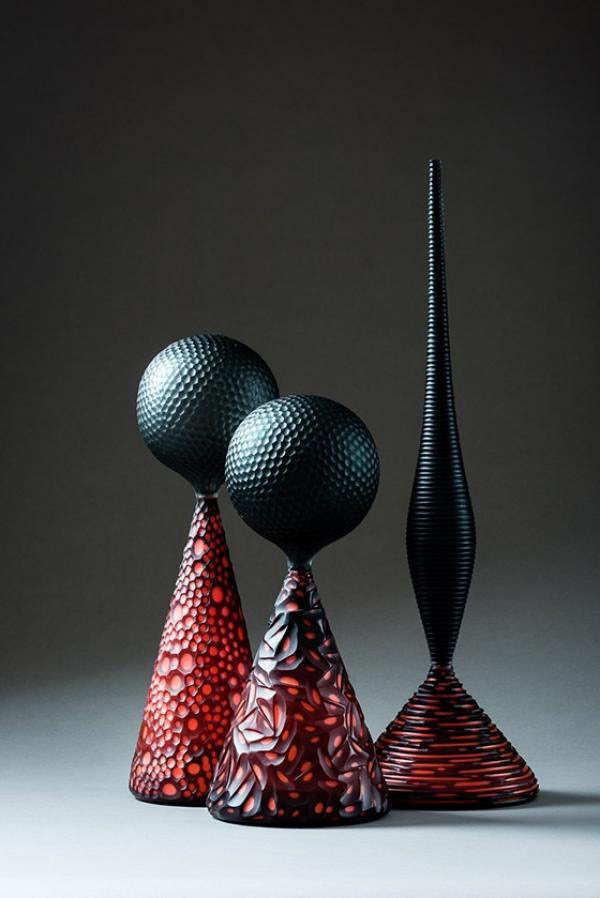
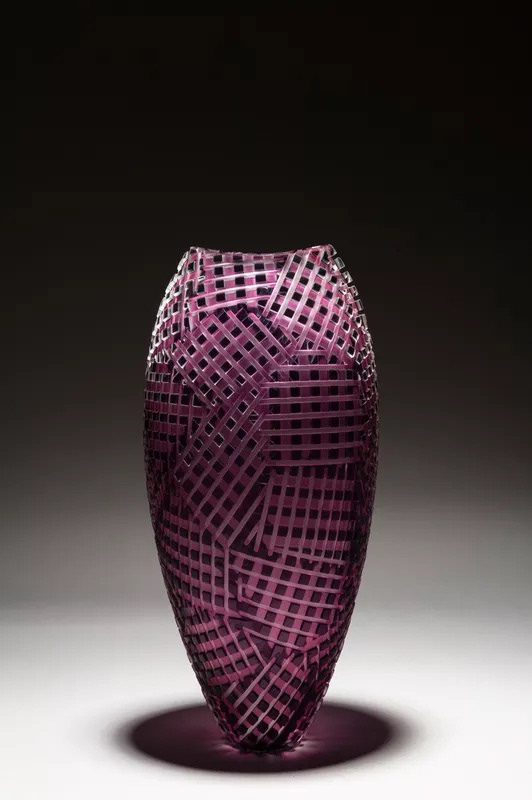

Throughout my research when looking through their book 'In search of clear lines' I come across some sketches/paintings that they have drawn. I like how they have used a mix of pencil and water colour within there sketches to show colour choices within the design. I also like there use of bold bright colours. I decided I wanted to use these influences in my body of work going forward.
Michelle Keeling
Michelle Keeling is a kiln glass artist based in Manchester having her studio at the Manchester Craft and Design Centre. She creates a range of pieces including sculptures, wall art, interior accessories, jewellery, commissioned pieces as well as freelance work. Her influences are based from the icier parts of the world as well as landscapes. She uses irregular shaped glass to make inclusions as well as metals and oxides followed by fusing them in a kiln, as well as techniques such as slumping, edge polishing, etching, sand blasting and casting to create textures, colours and patterns.

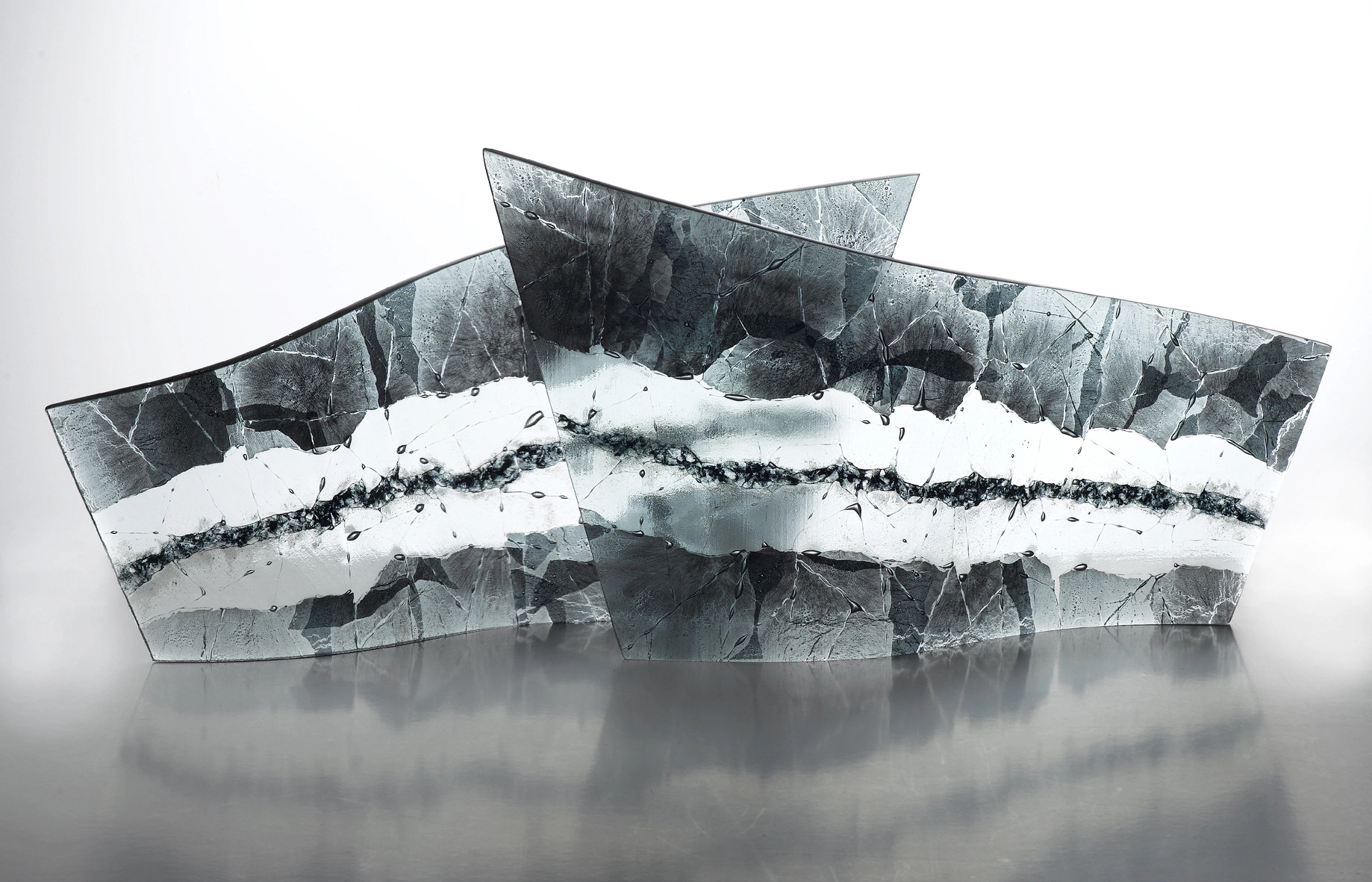

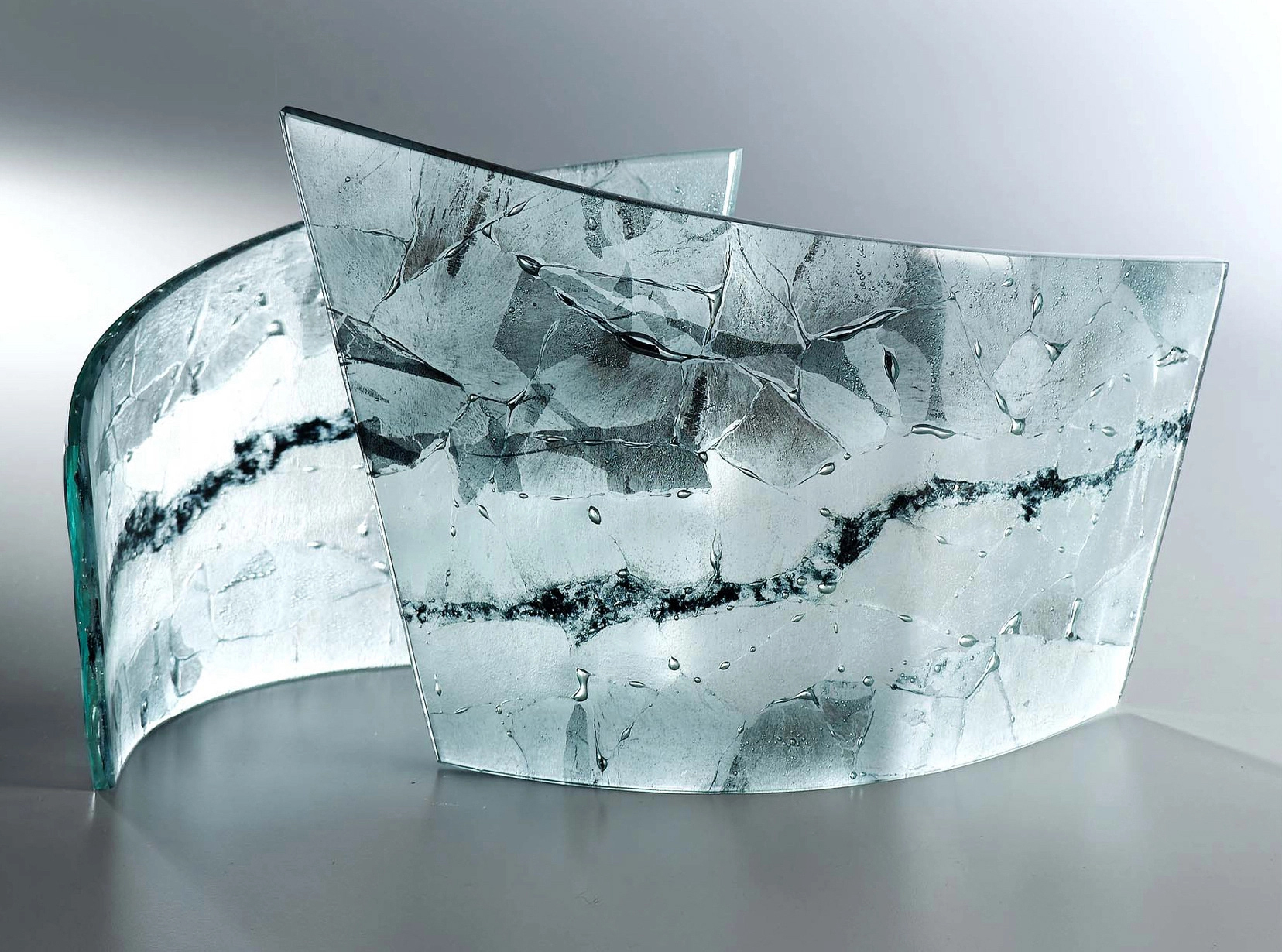
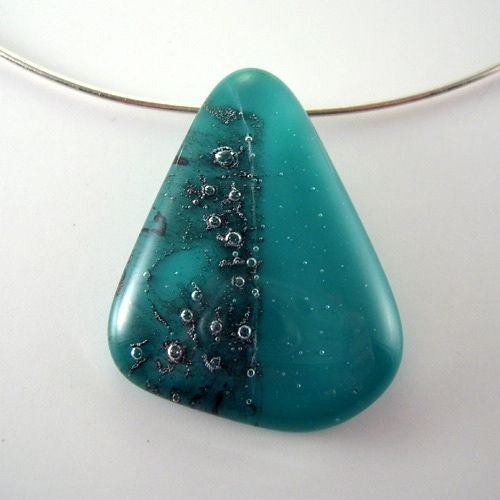
I took inspiration from Michelles work due to the patterns and colours formed by some simple techniques which create a big impact. I particularly like the blue and green tones created from using metals with the glass. I wanted to expand my knowledge and gain some inspiration after attending one of the technical workshops which we fused copper with glass. After coming across Michelles work, I then took this into my own practice.
Ian Chadwick
Another kiln artist is Ian Chadwick also based in Manchester. His work is influenced by pattern forming, optical art, sacred geometry and mandalas. He uses small pieces of glass and full fuses them to create a single larger piece. I admire the level of detail and patience it would take to create a piece like his to ensure everything was in place before shutting the doors of the kiln.


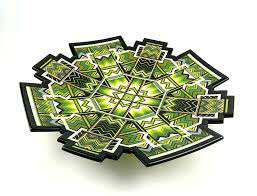

Photo I took from the Glass Biennale 2022.
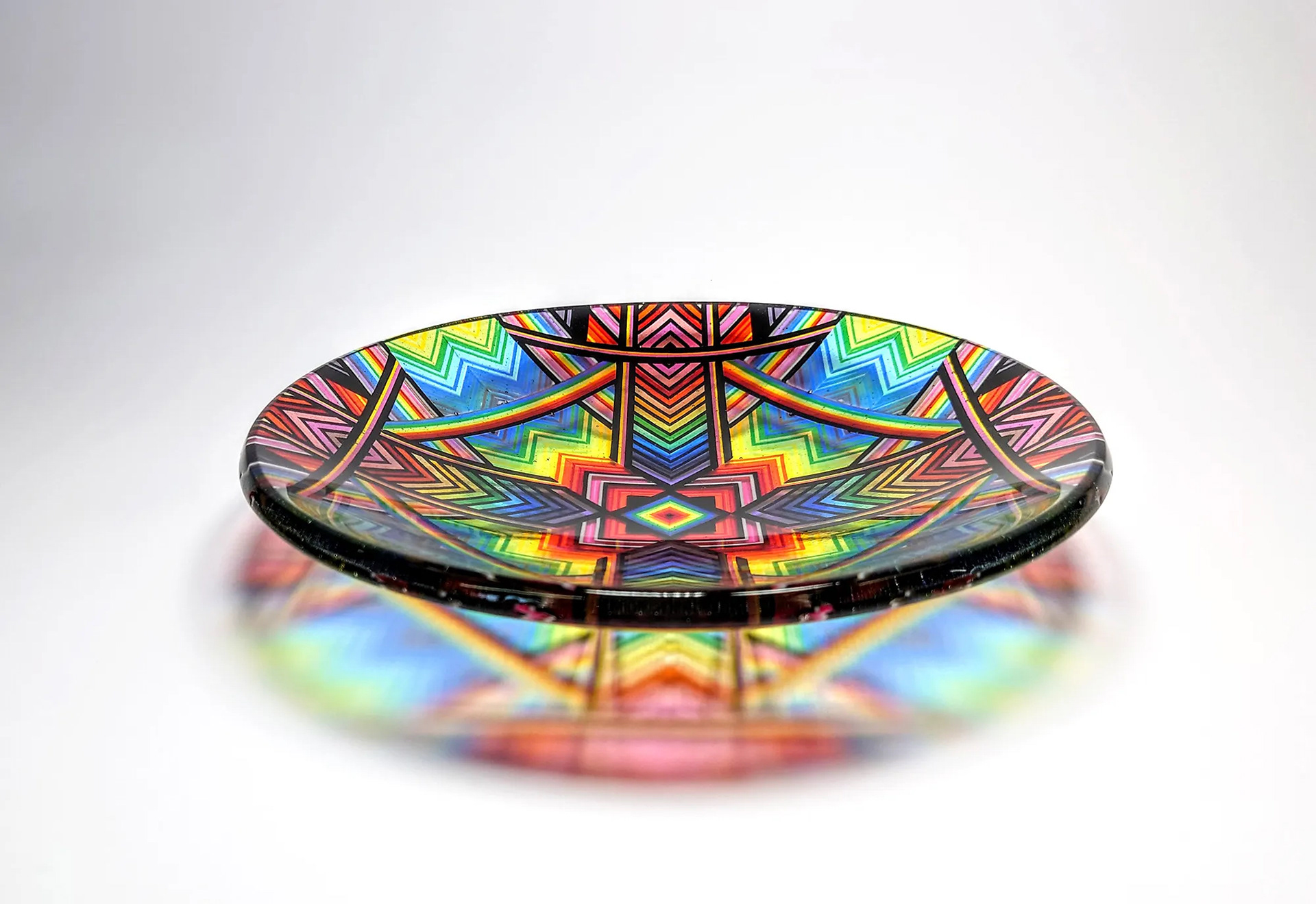
His work resonates with me because areas such as sacred geometry is something which I want to explore further in the future in work that I create. I particularly like the symmetric, kaleidoscopic nature within his work. As well as this I the bold, bright colours appeal to me and catch my eye. Upon visiting the Glass Biennale in Stourbridge last year, I remember seeing Ians work and being taken back by the striking colour choices and how they compliment the patterns very well. I decided to take influences from his choice of colours into my practice for this unit.
Induction Notes
Notes I took during the induction for cold work in Glass.
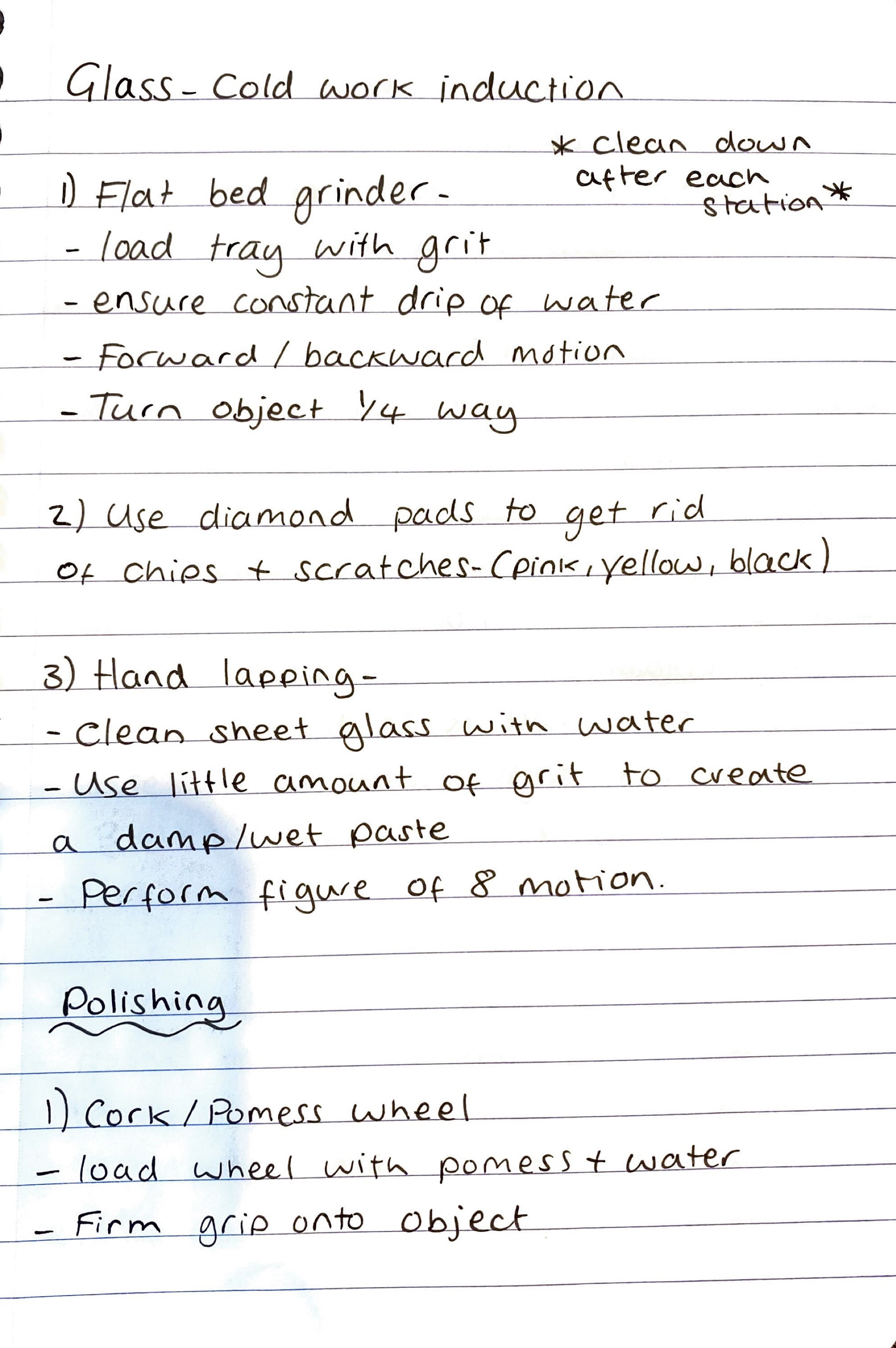

Notes I took during the induction for Kiln work in Glass.
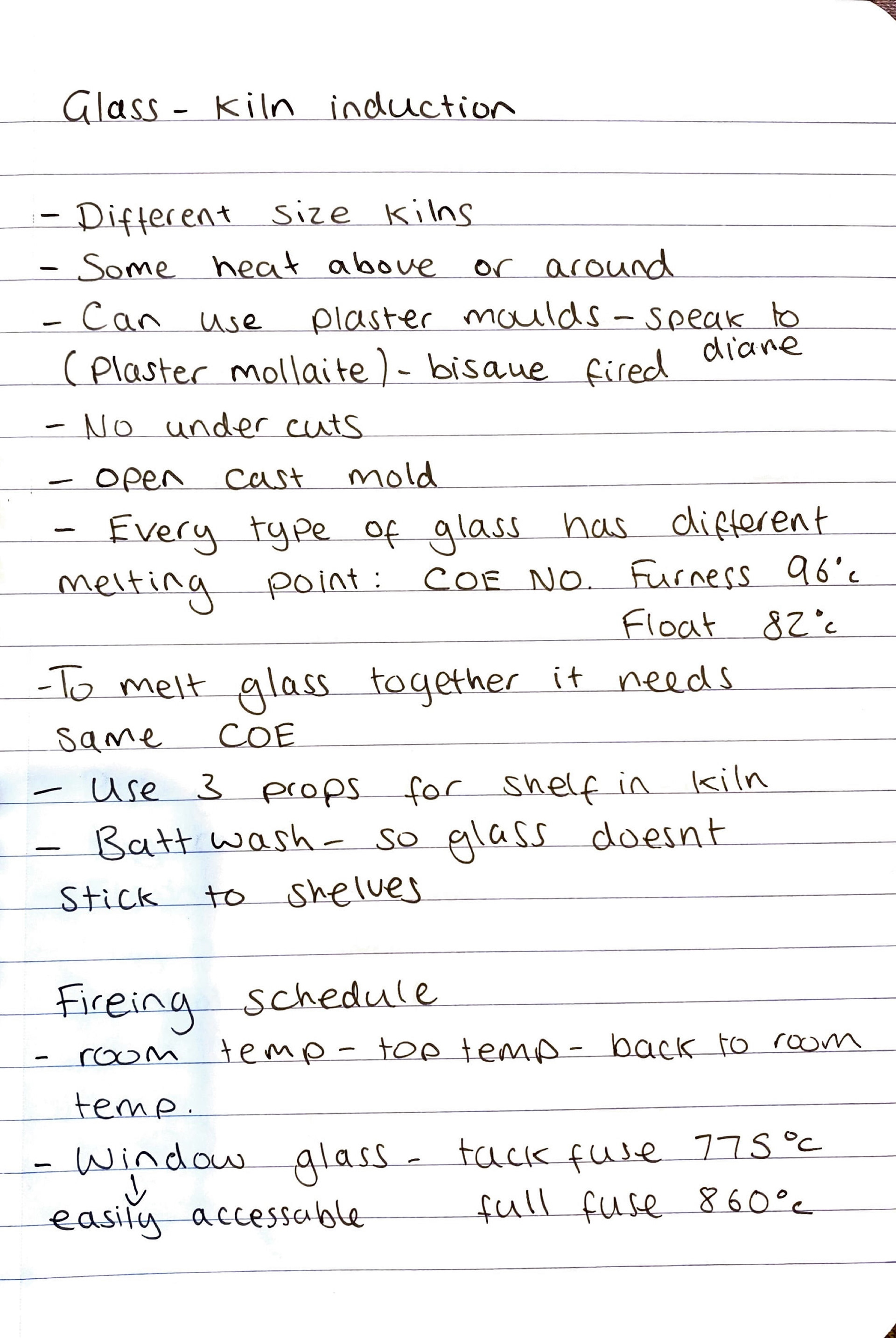

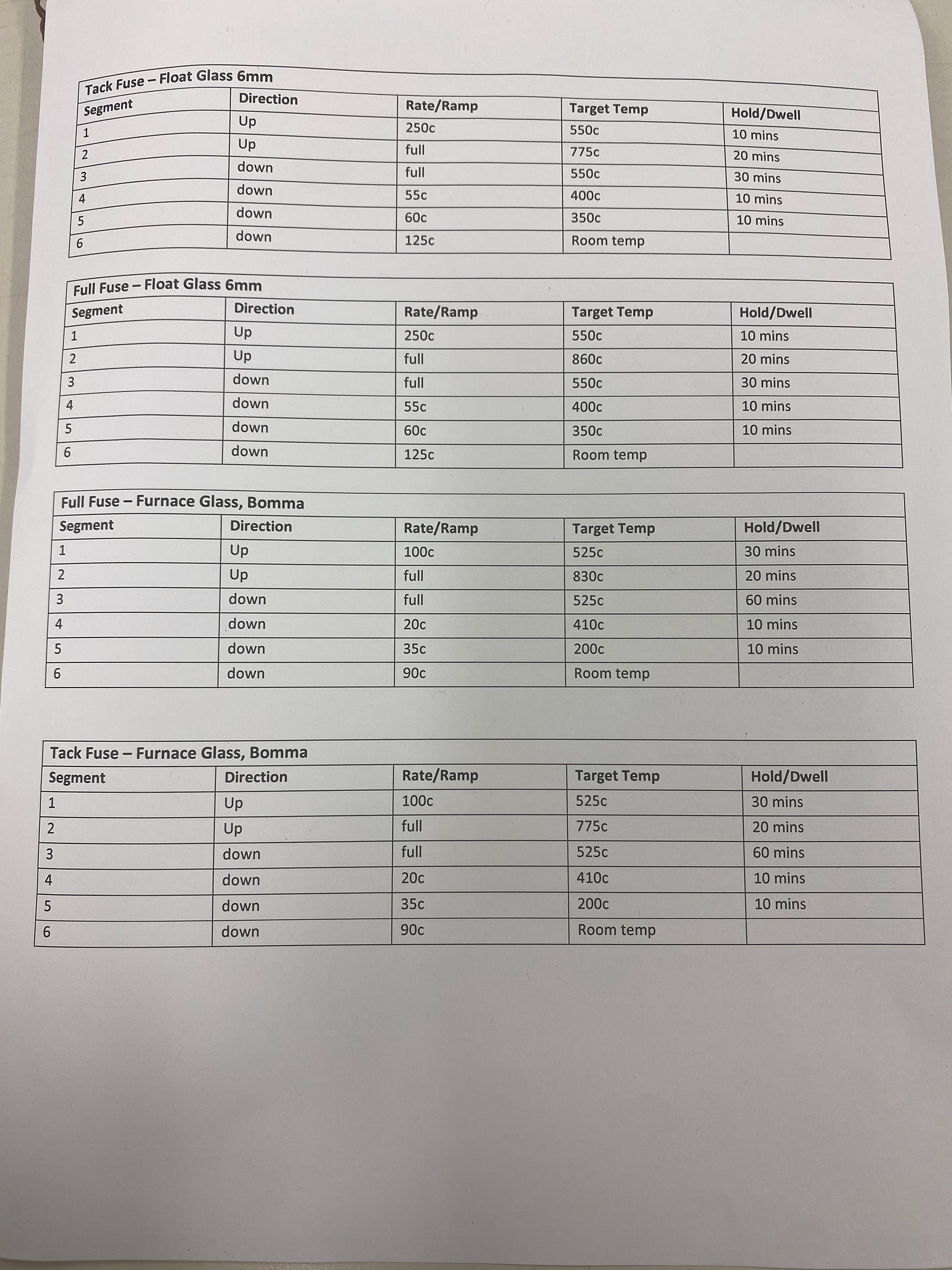
Notes I took during the induction for Glass blowing.
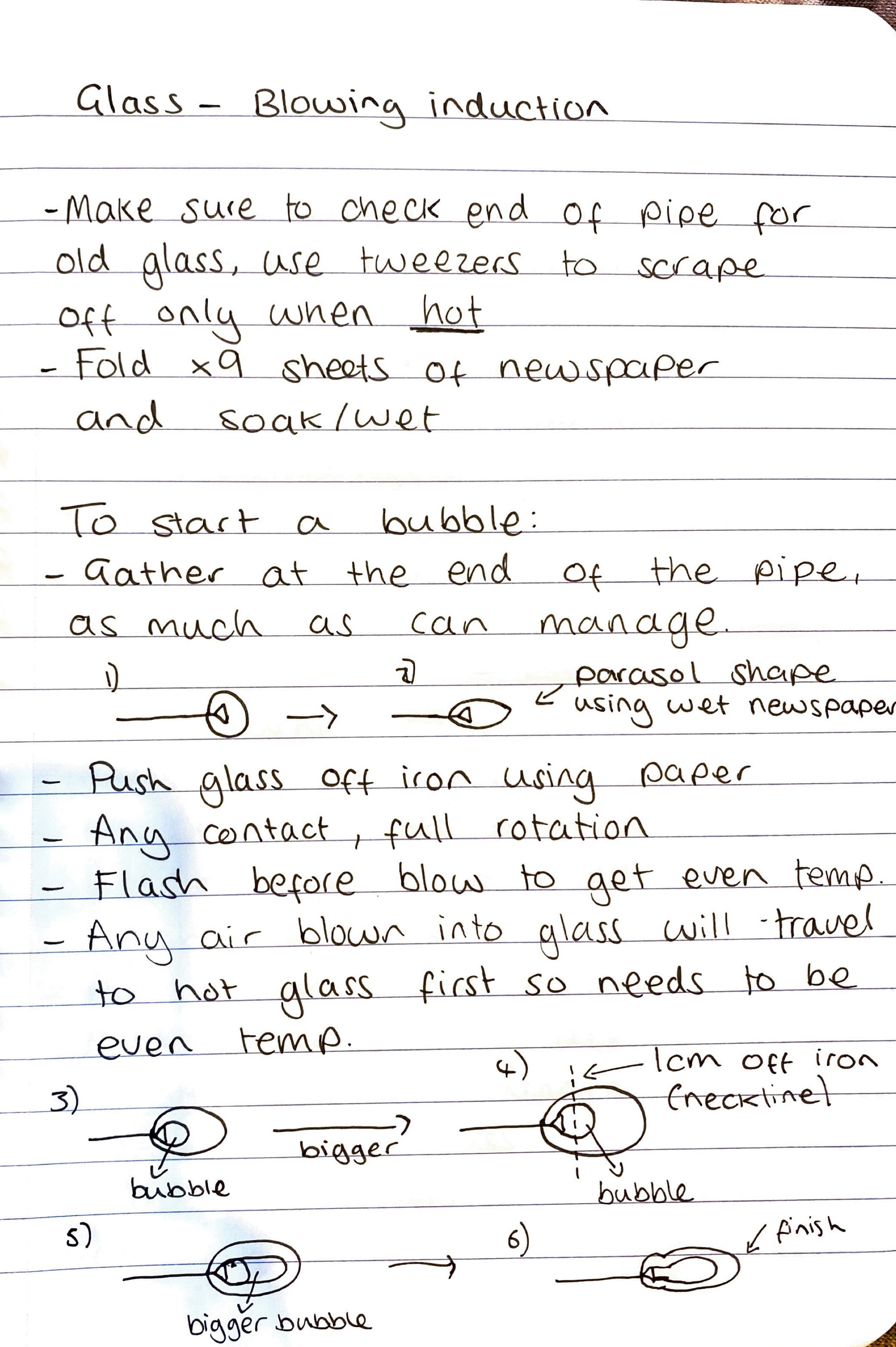
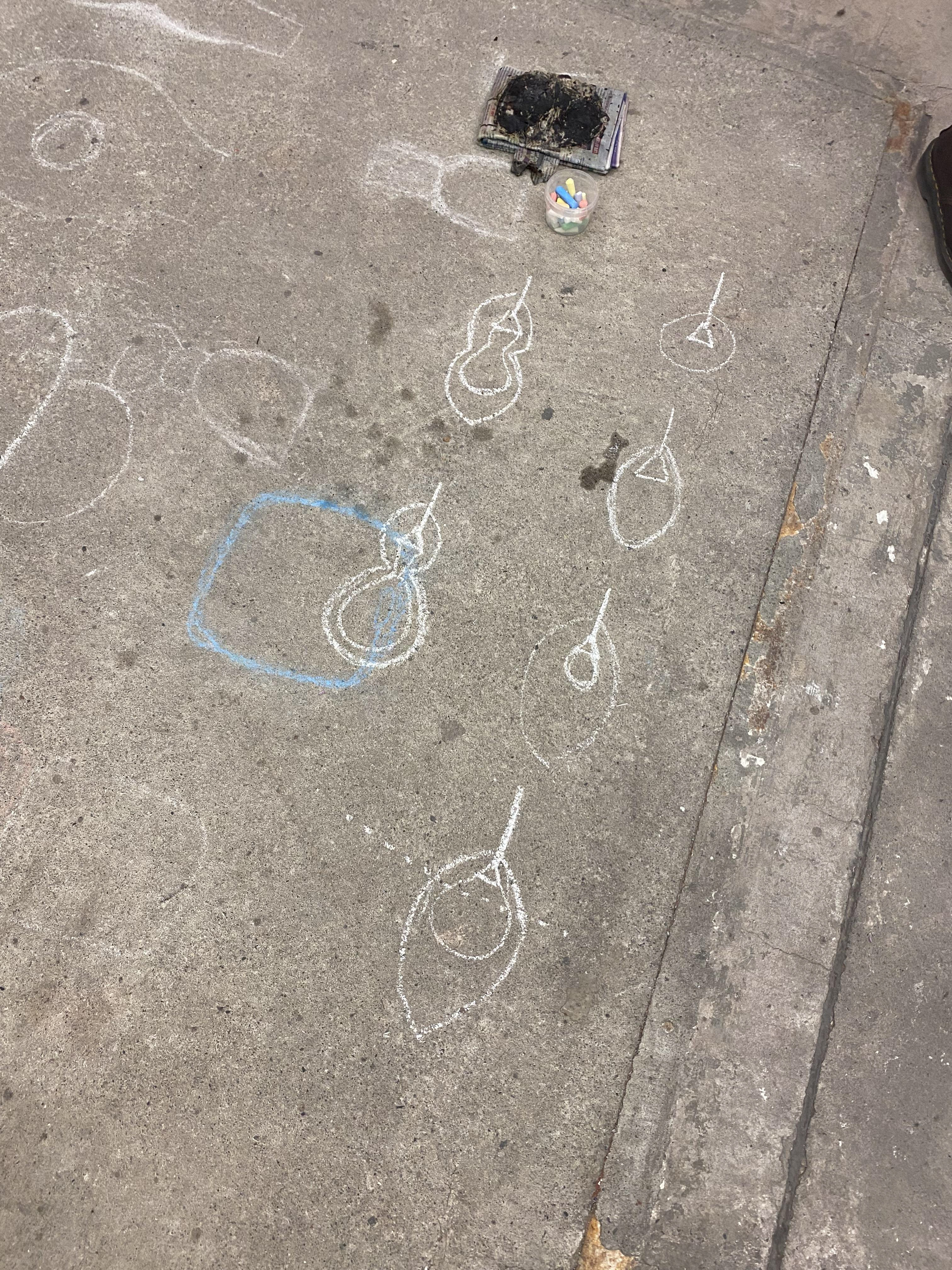
Drawings explaining steps of forming a bubble in the hotshop
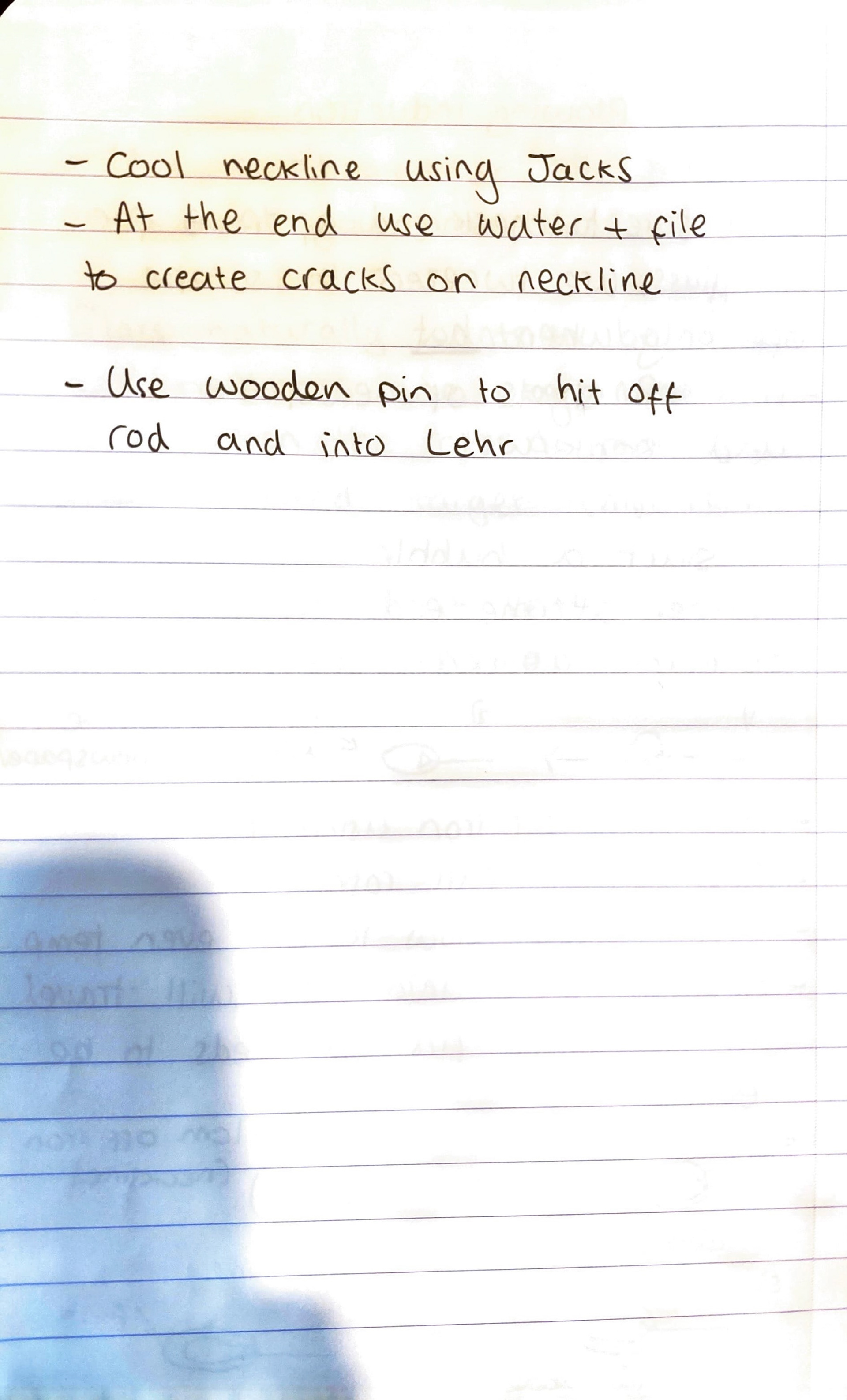
Technical Notes
Notes I took during the workshops in weeks 1, 3 & 4.



Yorkshire Sculpture Park
Photos I took during the trip to Yorkshire Sculpture Park.
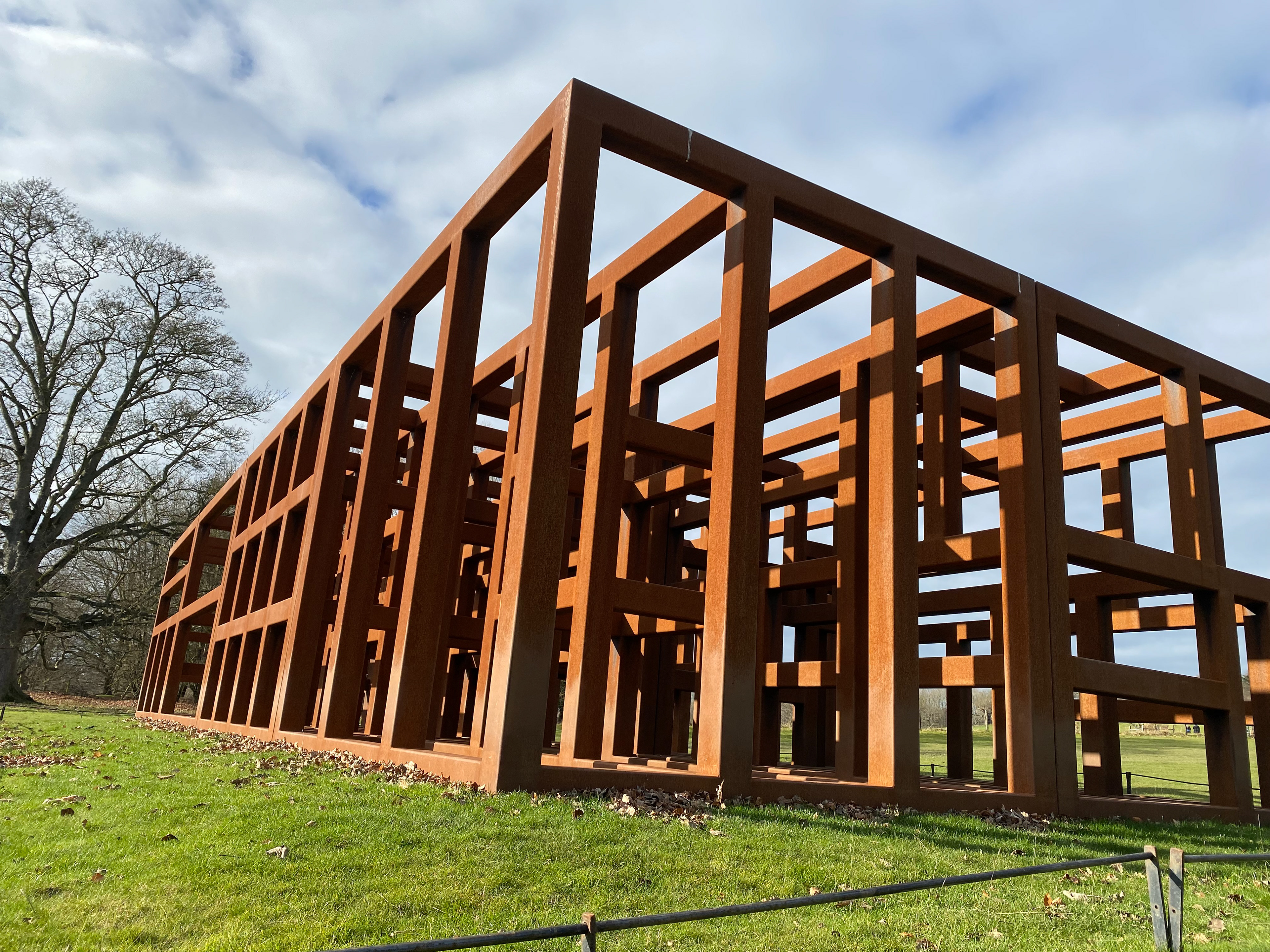

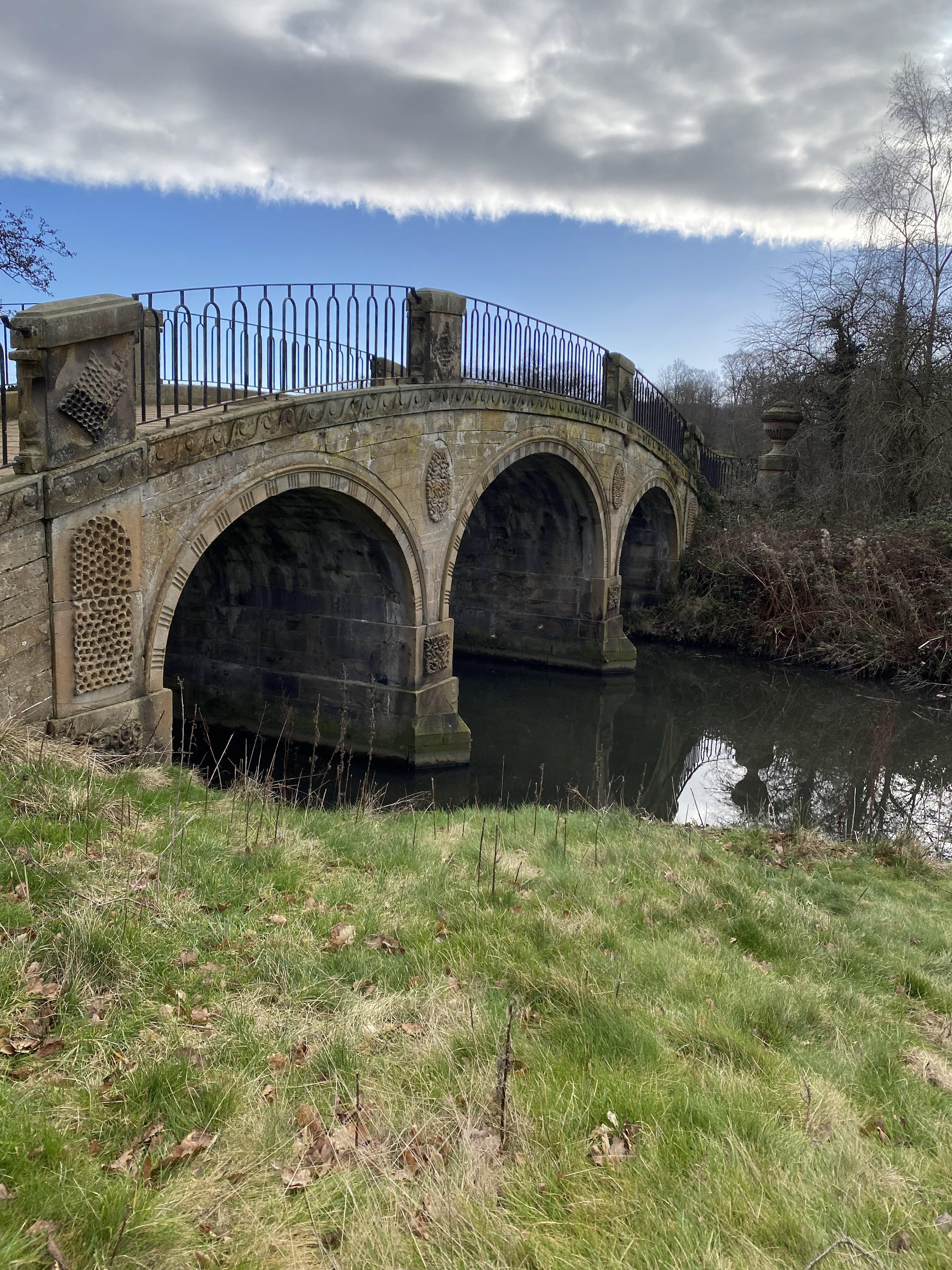
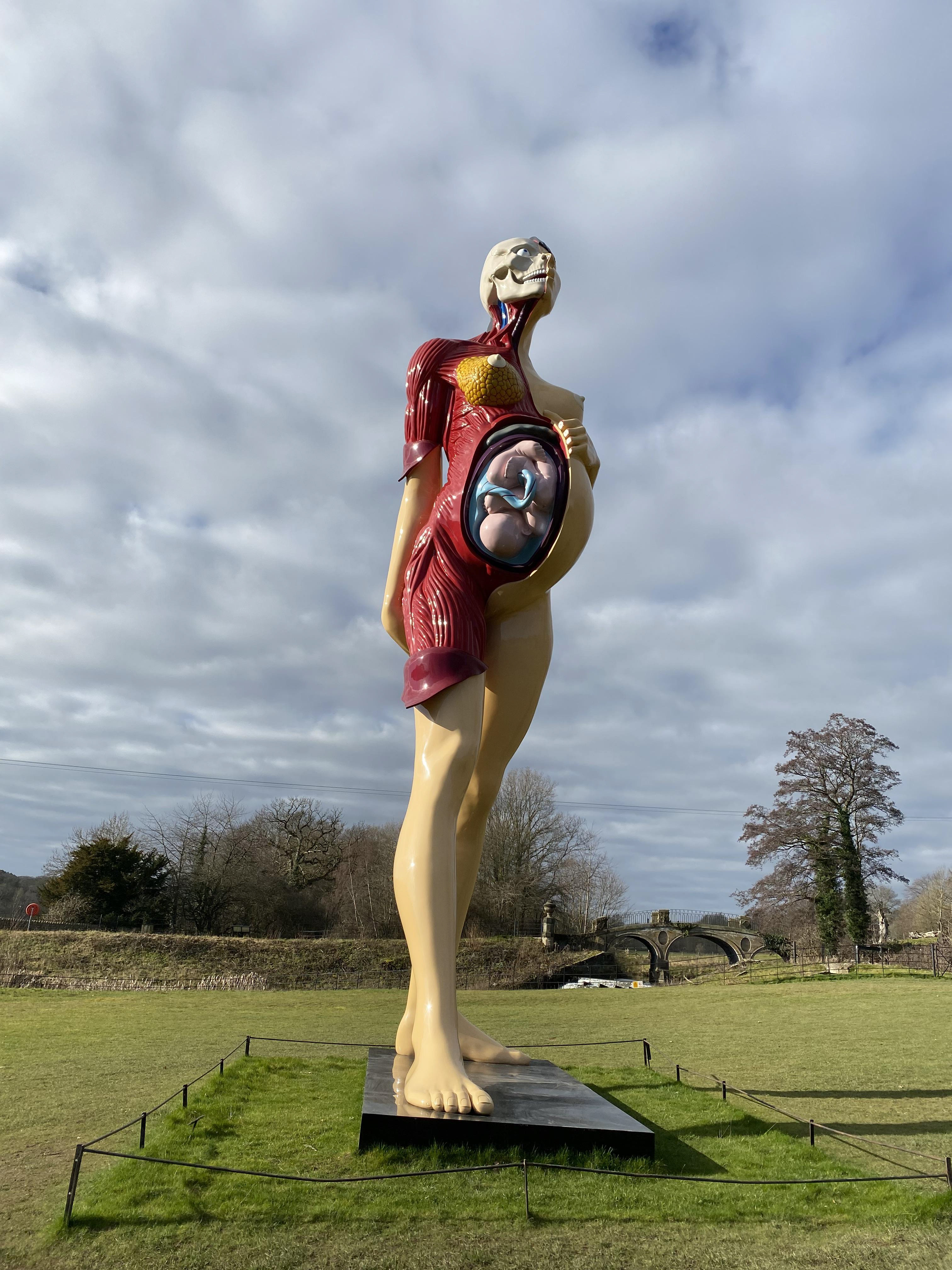
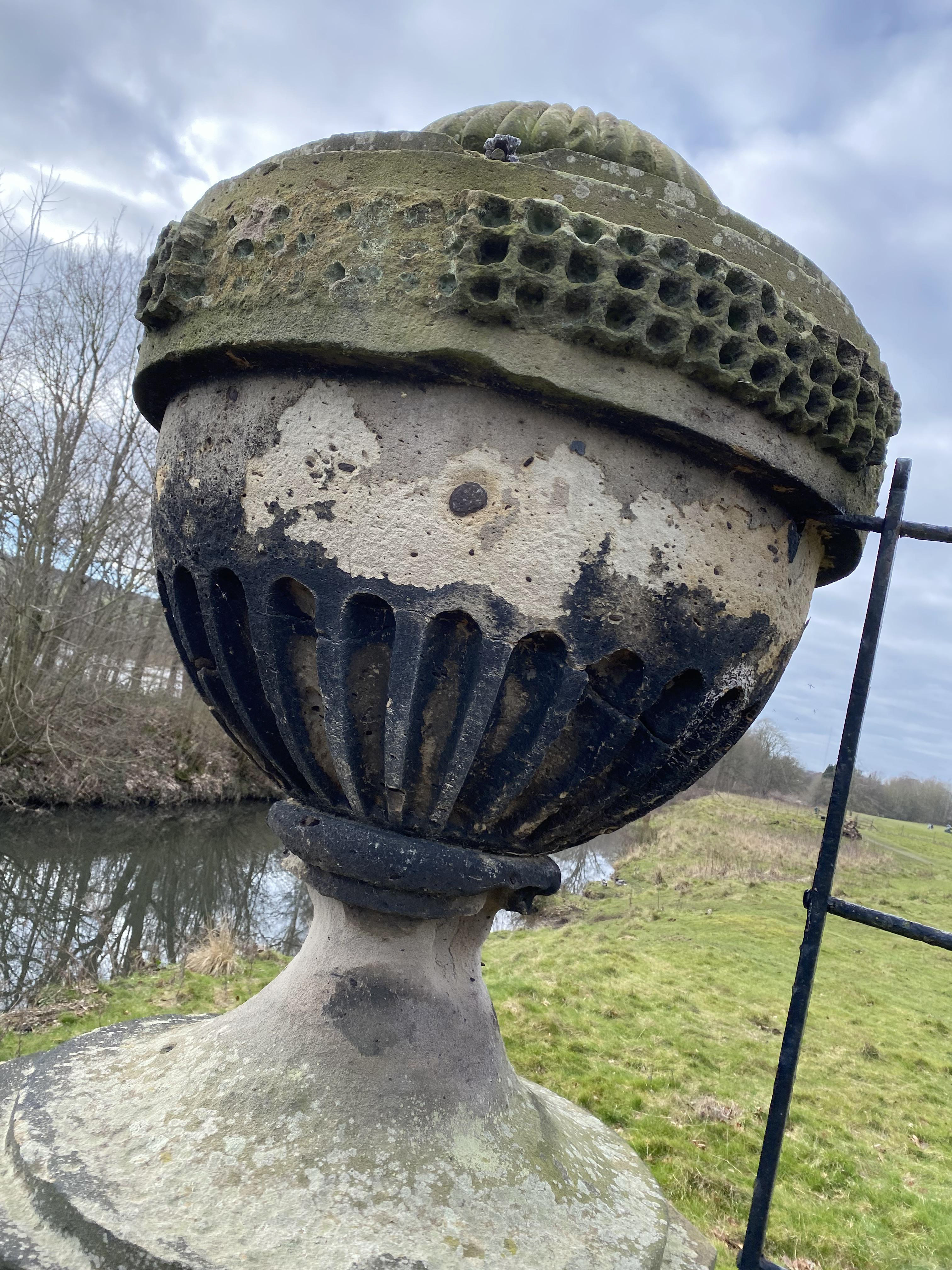
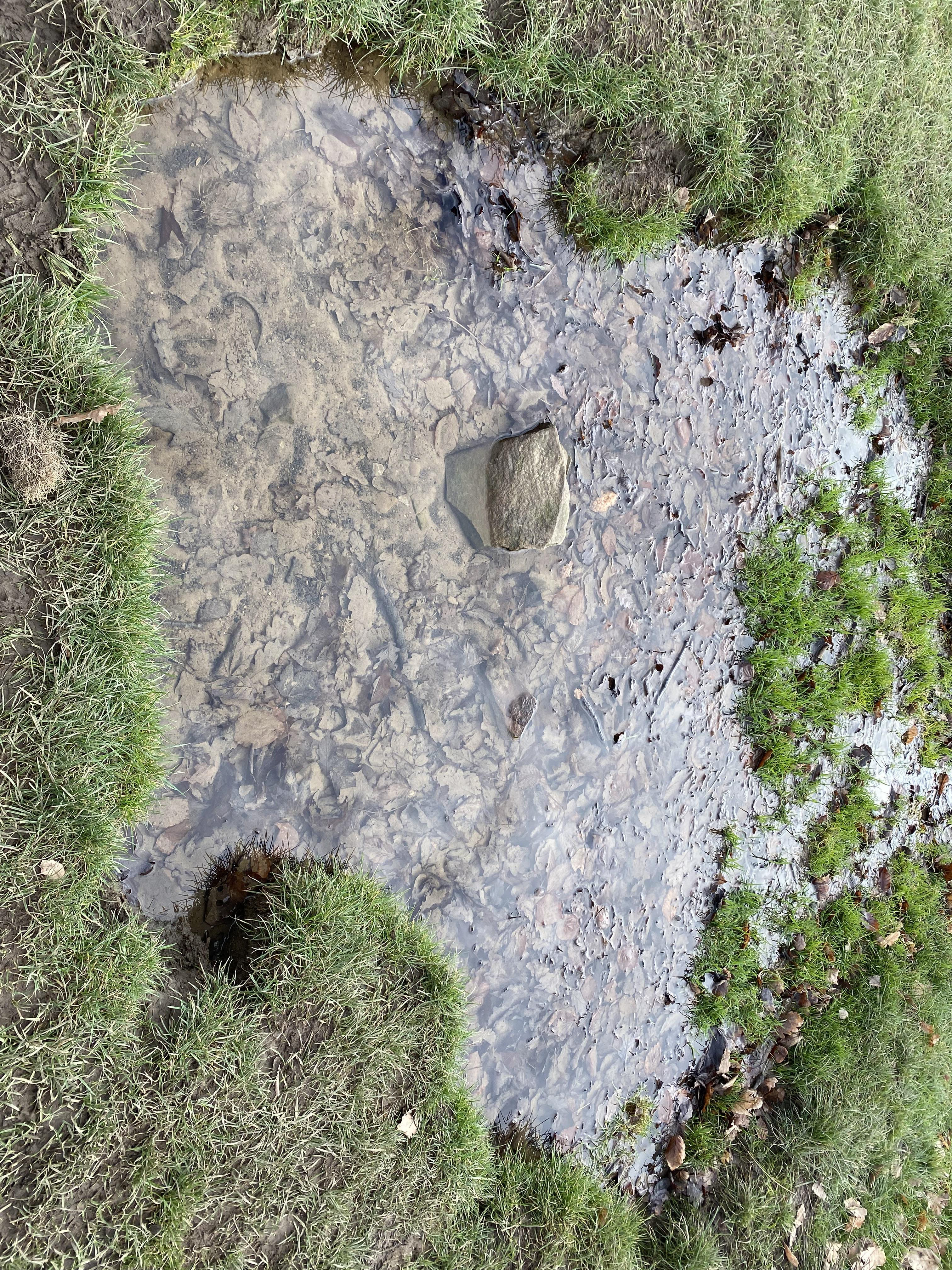
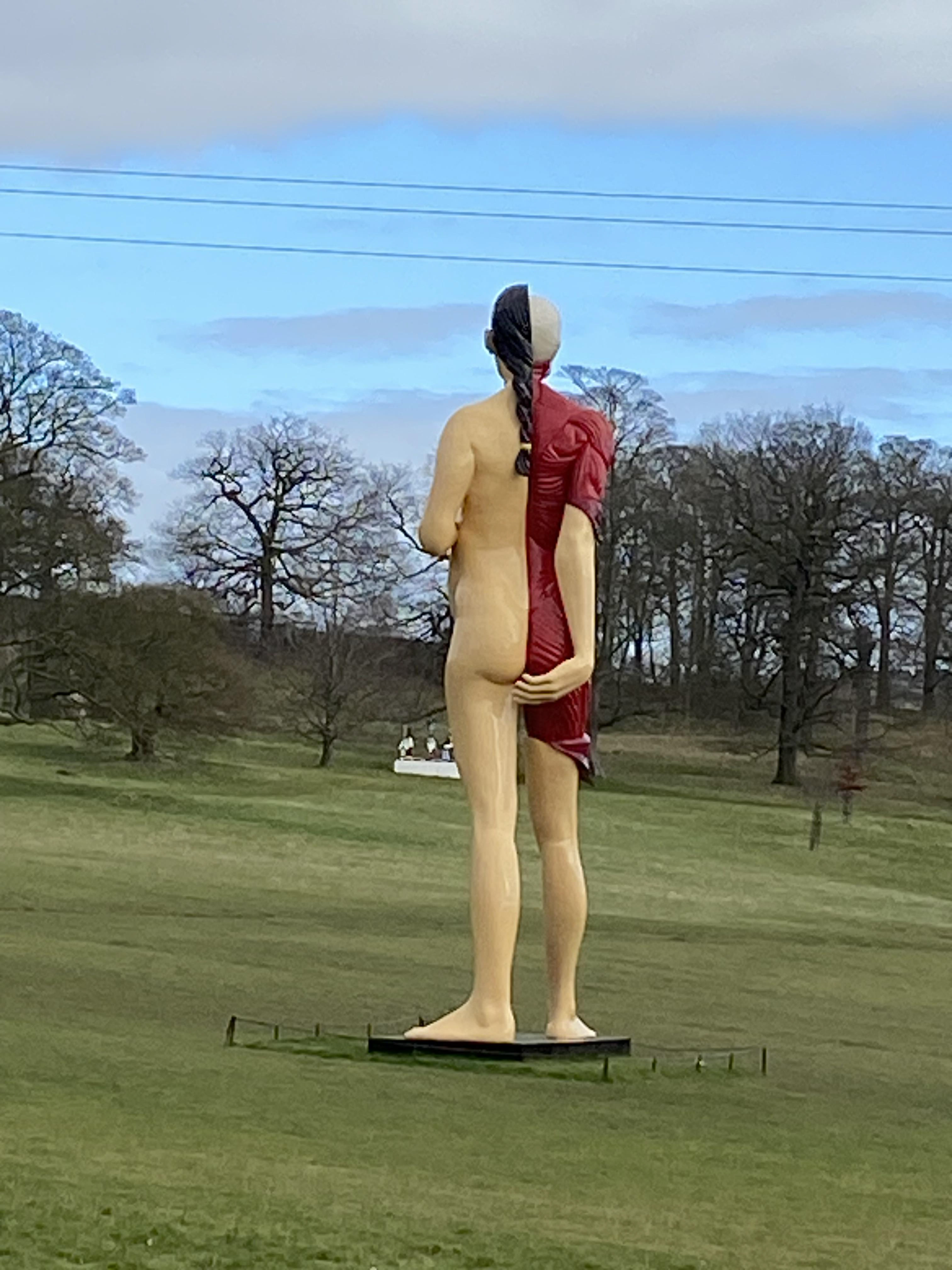

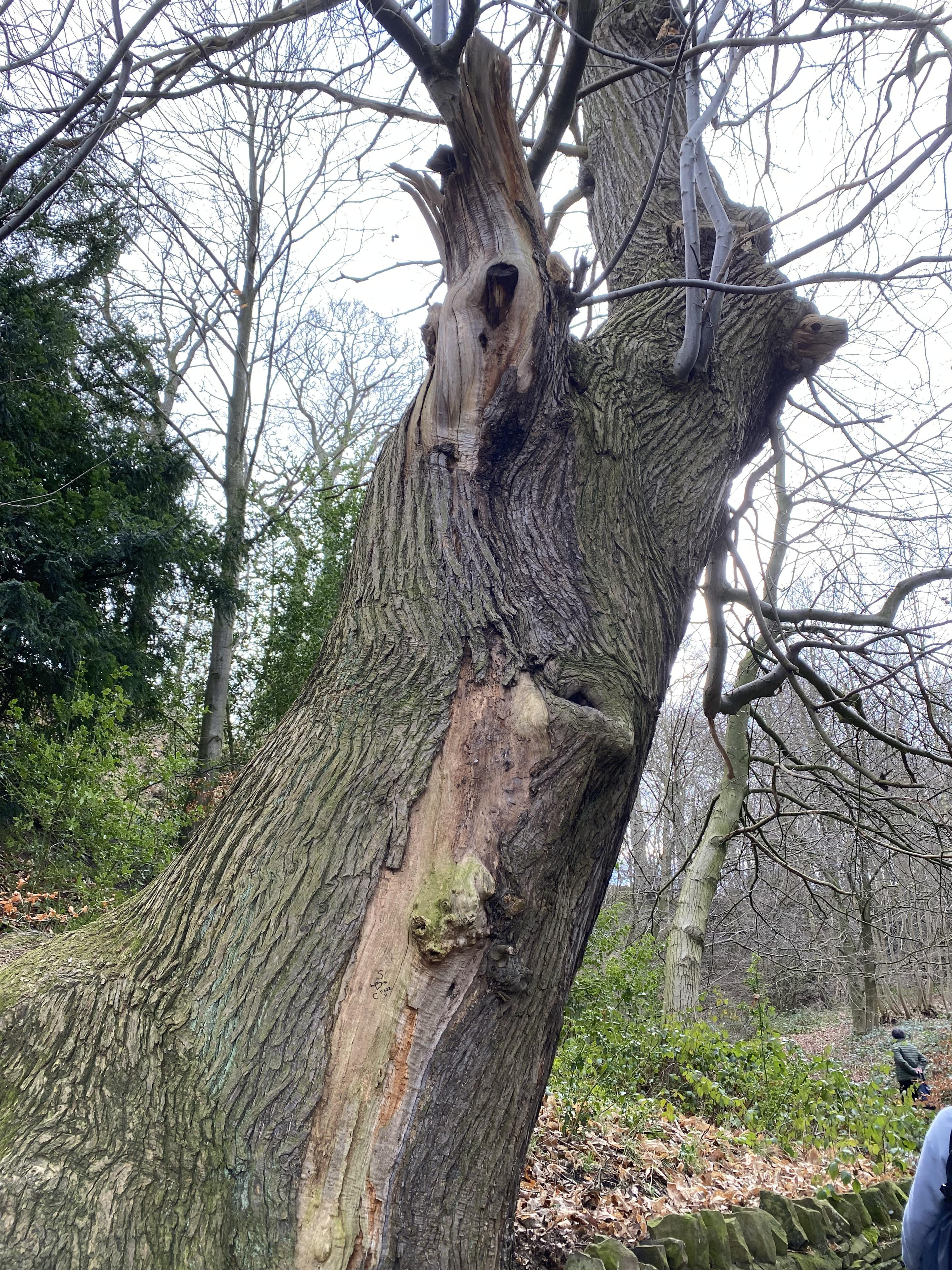
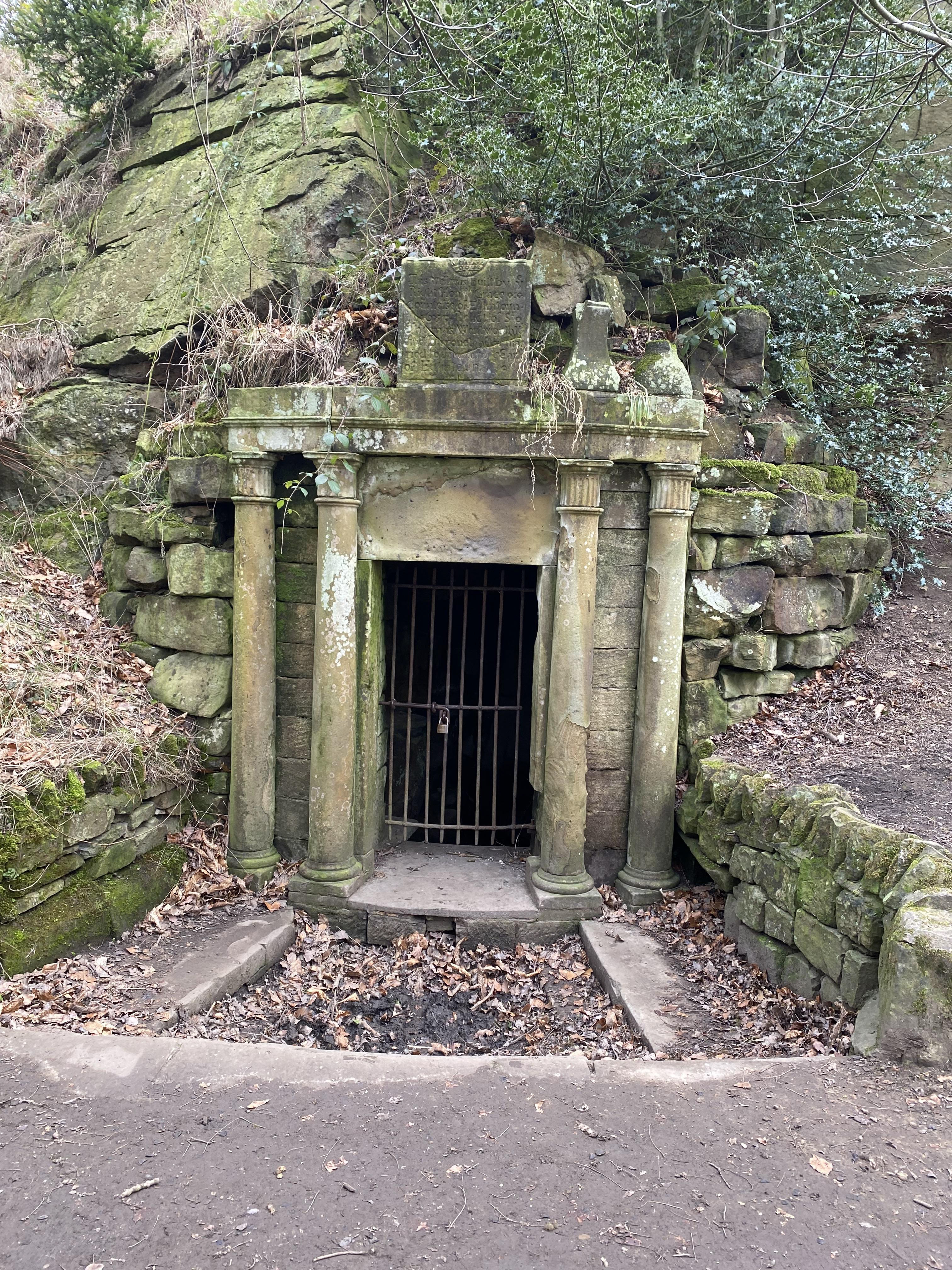


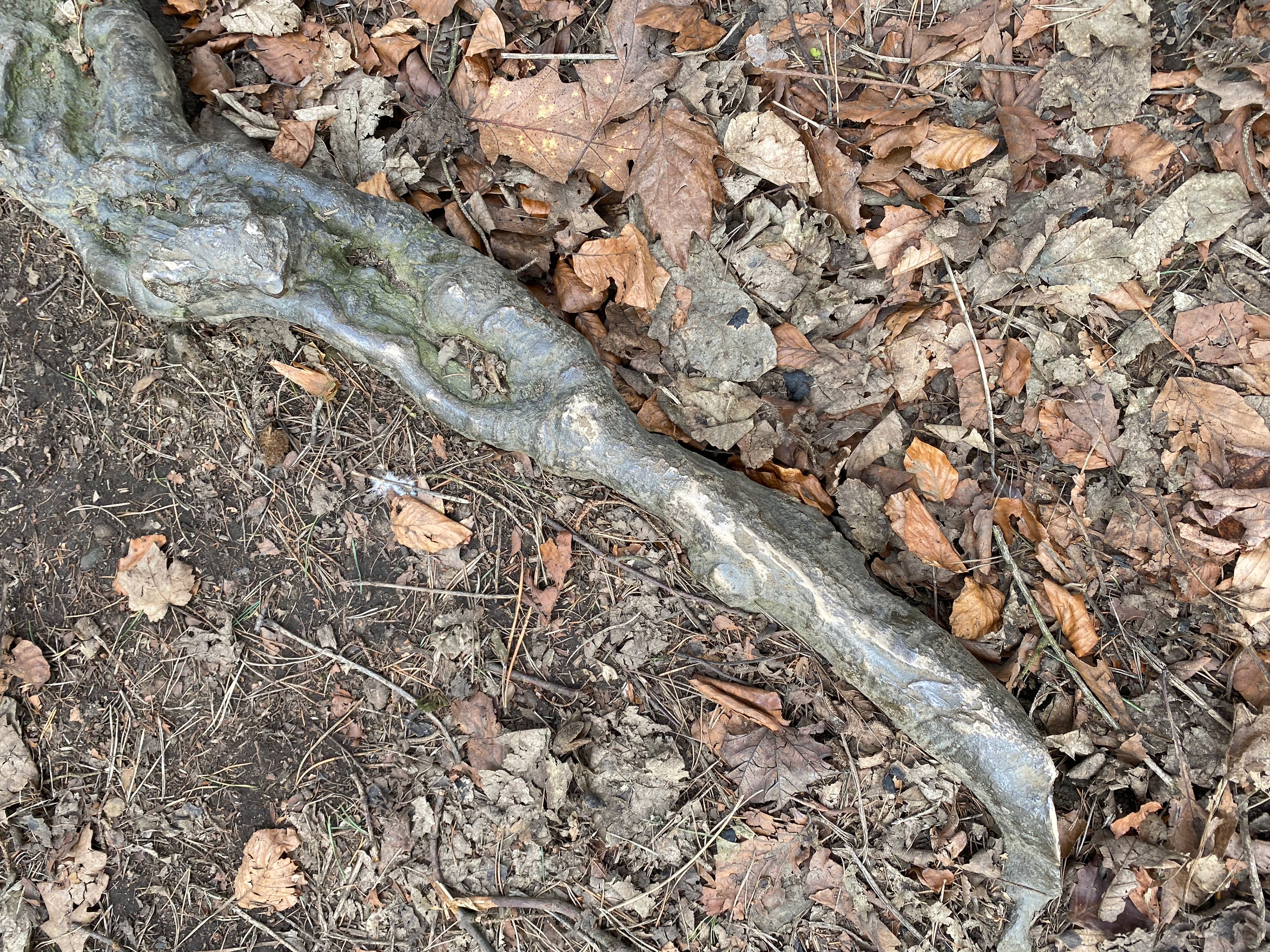

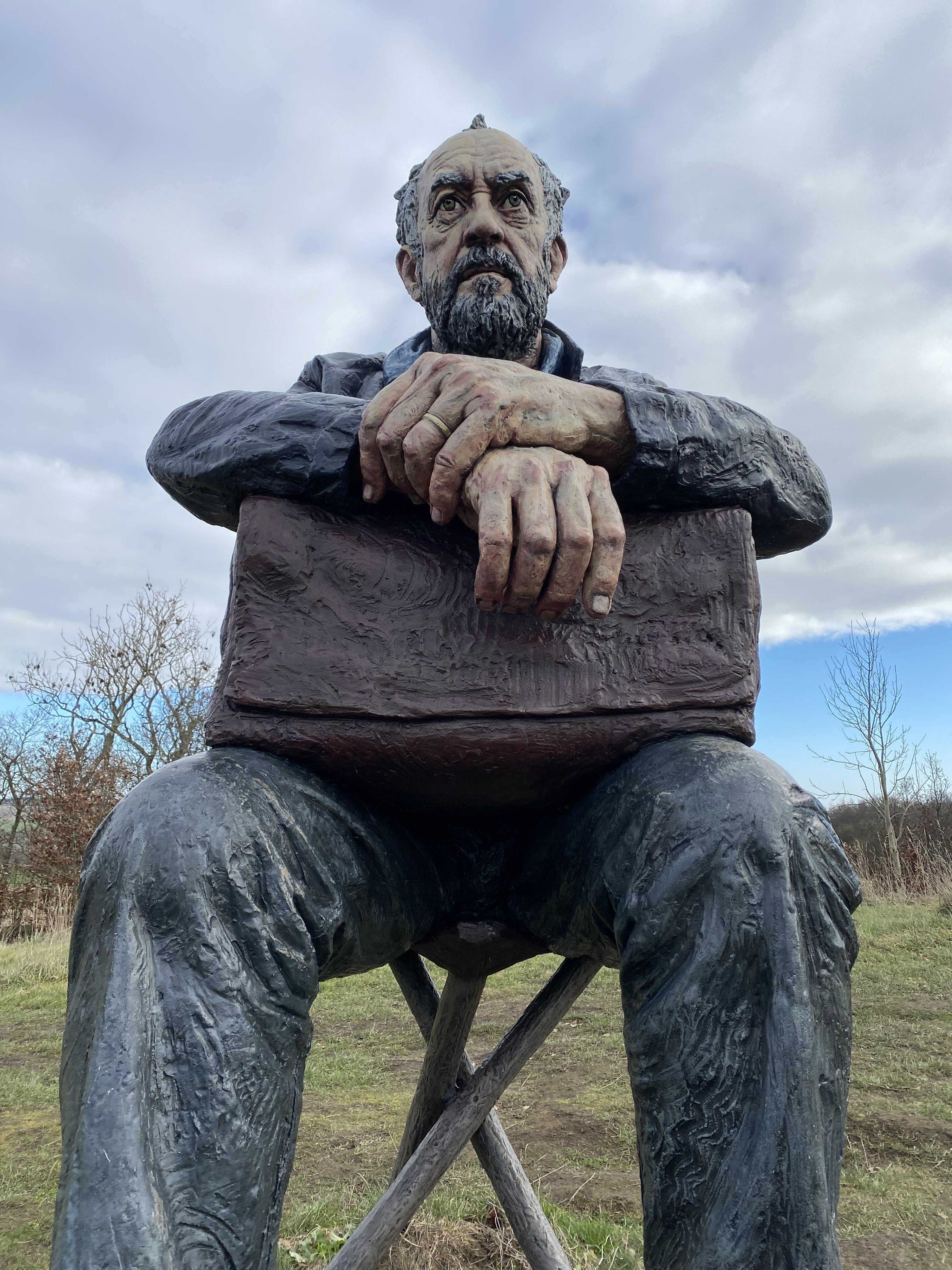

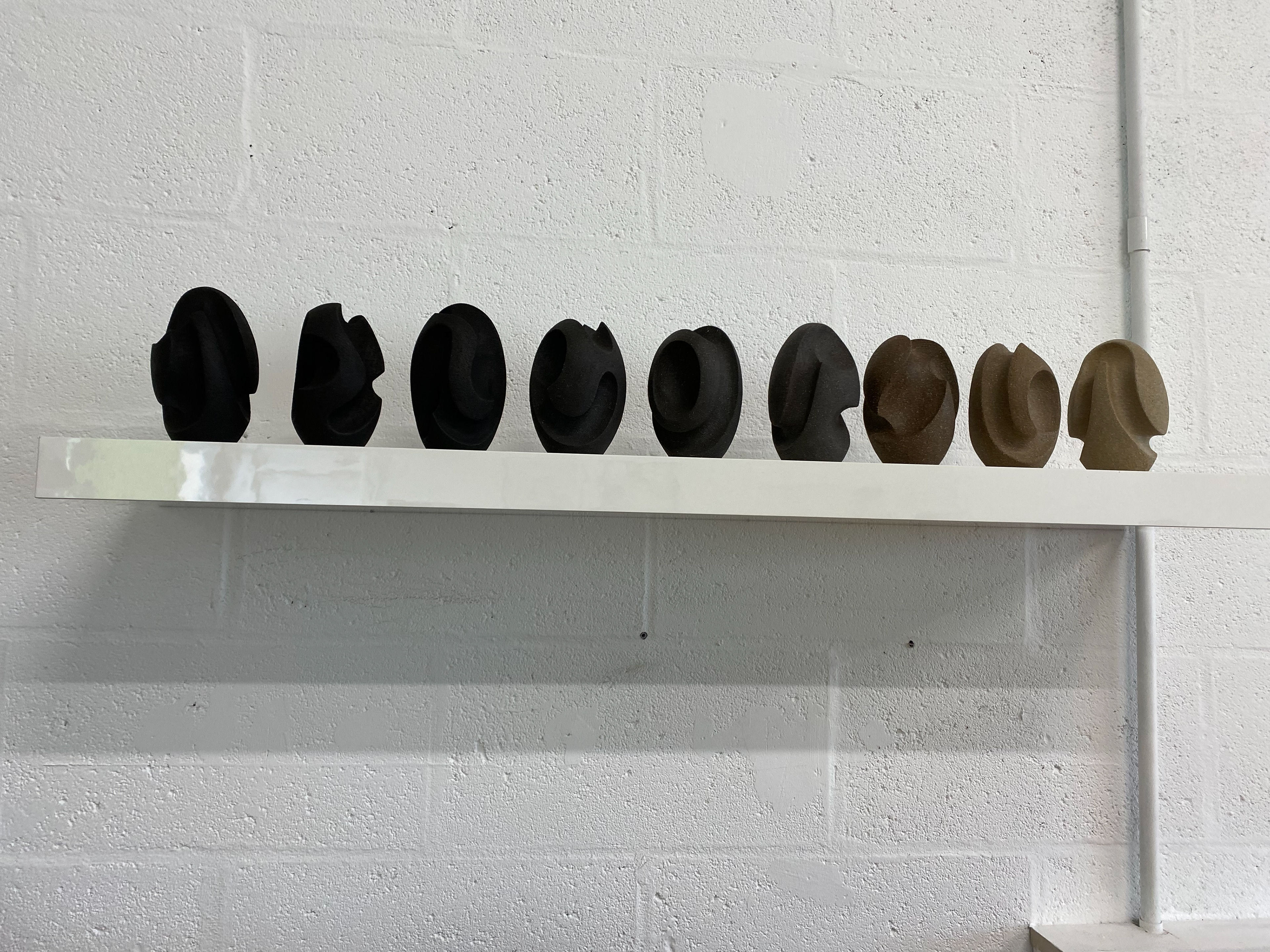
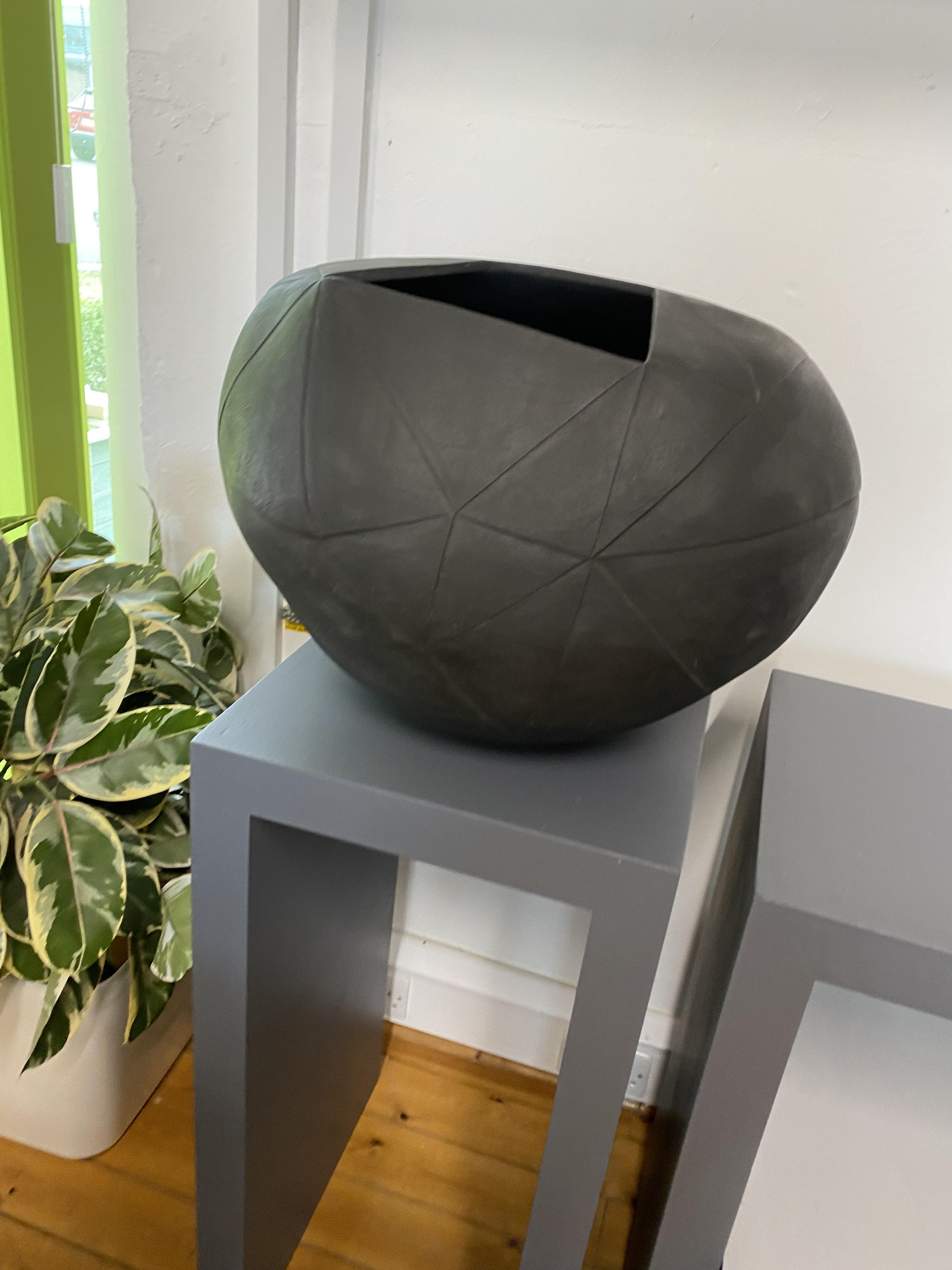

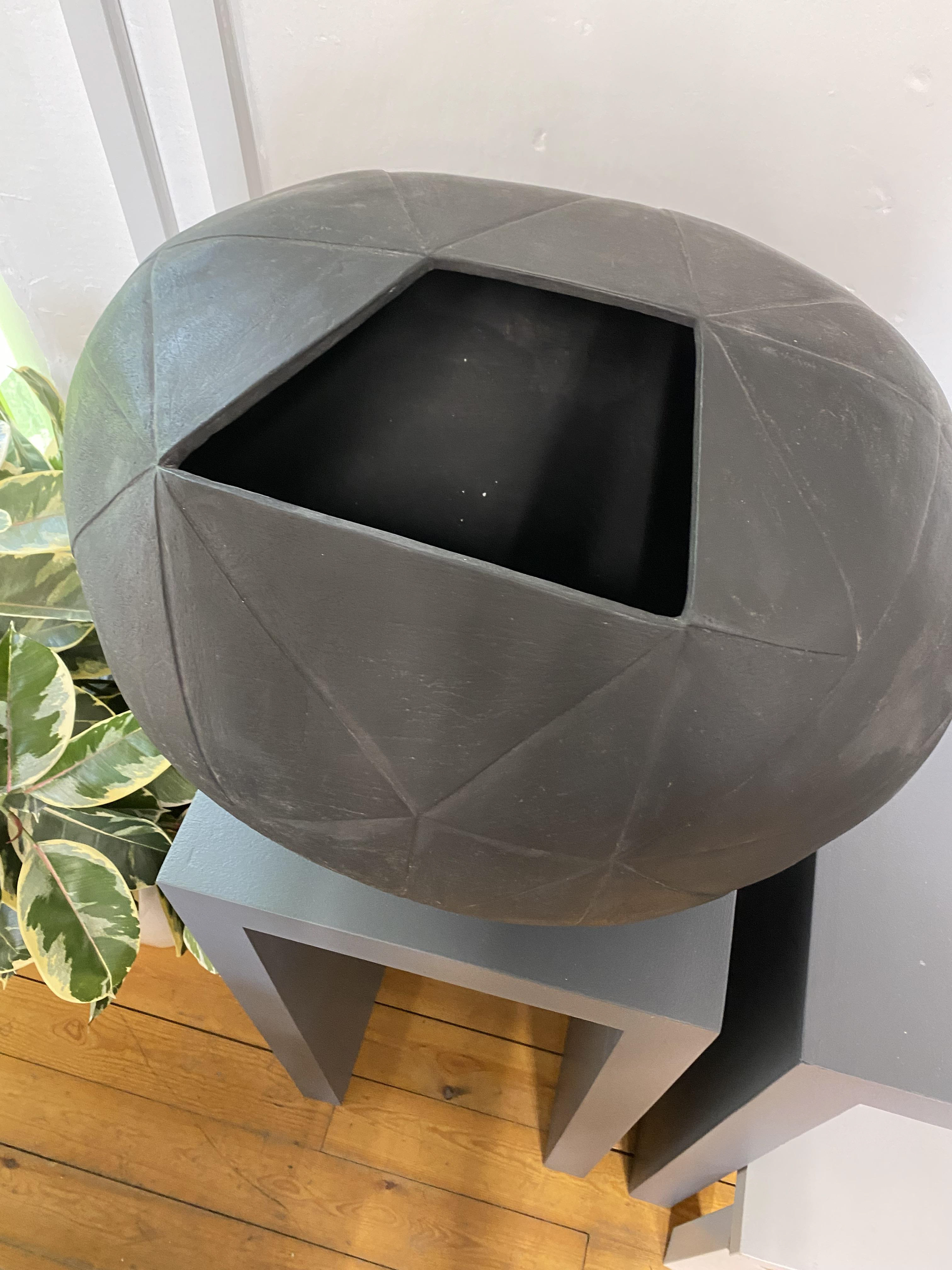
Drawing tasks given whilst at the park.

Same object from 5 different angles
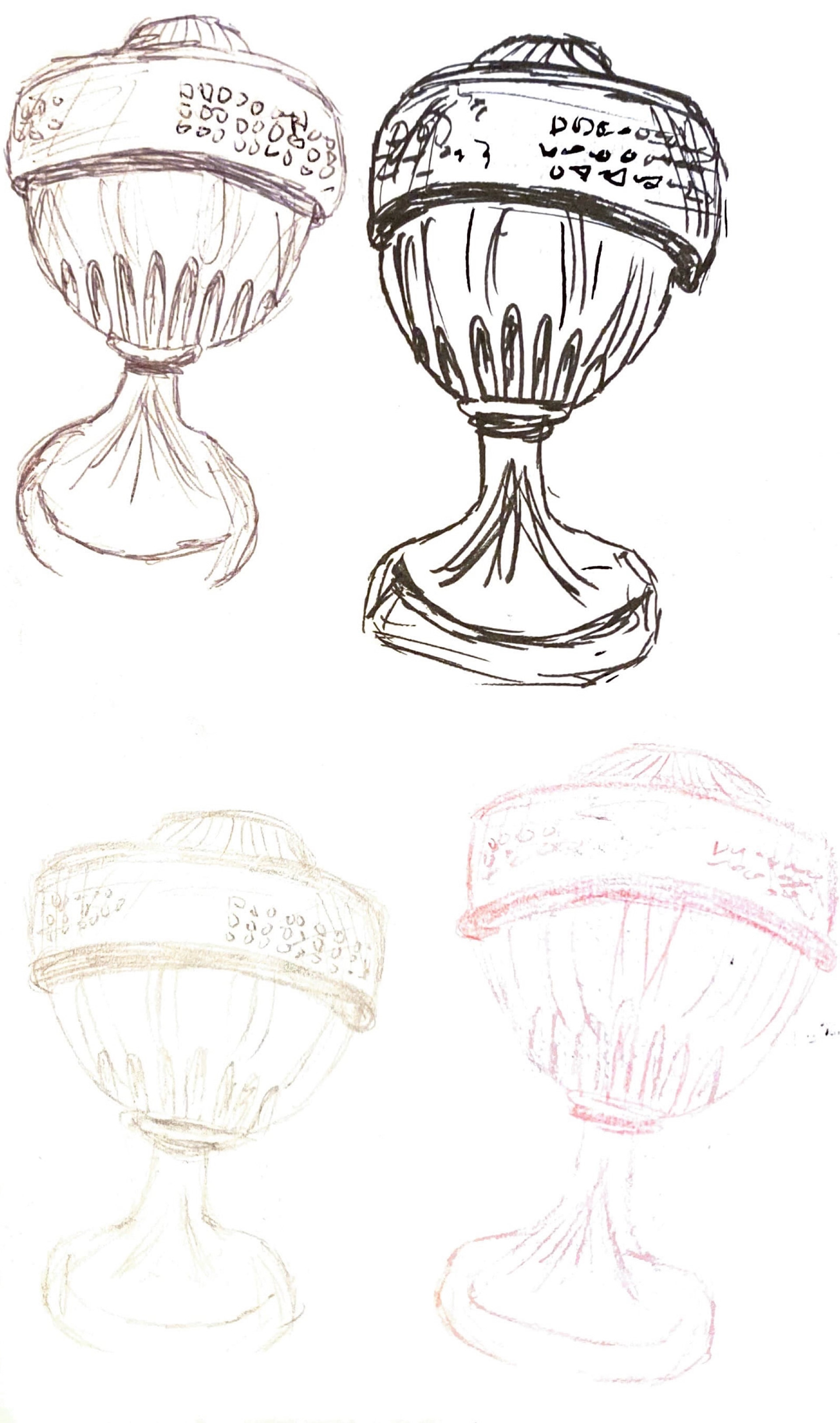
Same object using 5 different media
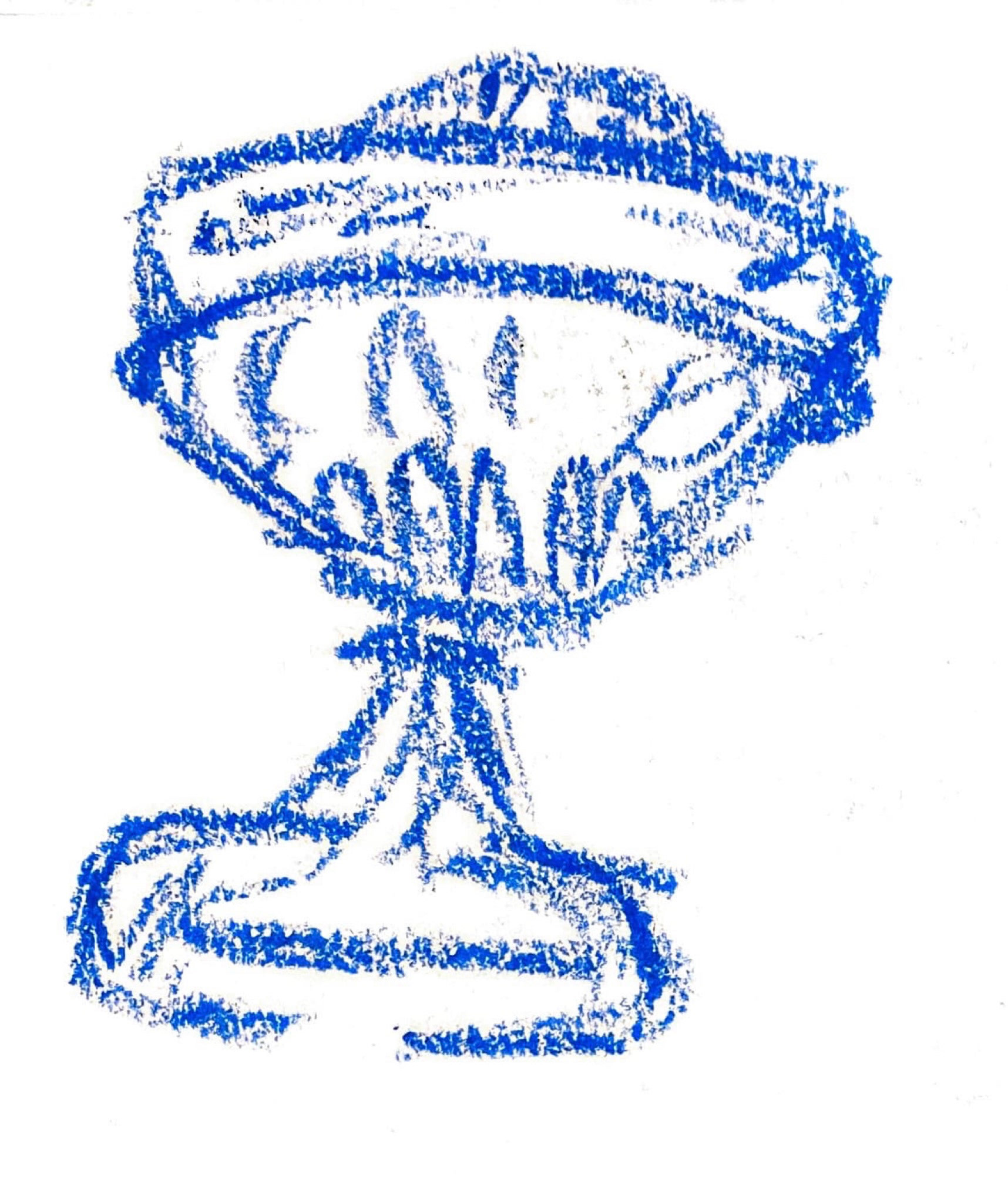
Same object using 5 different media

Same object using 3 different styles
Material Samples
Samples of texture and colour (week 1), fully cold worked piece (week 2), fused copper tiles (week 3) and results of blowing glass into copper moulds (week 4).
Hot blown glass into copper wire cages.
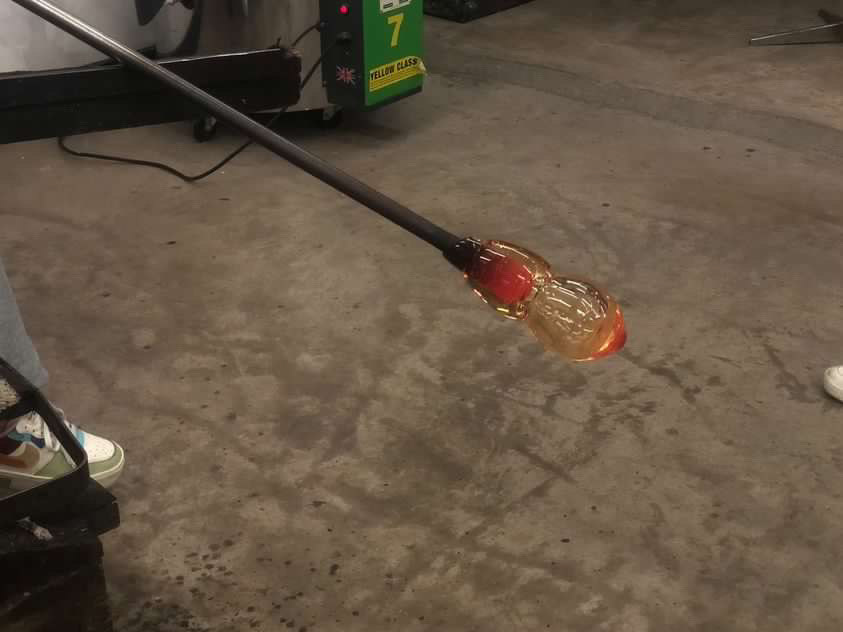
Early stages of blowing a bubble in molten glass.

Further stages of a blown bubble. I was happy with this but could see the difference of thickness closer to the neck of the pipe.
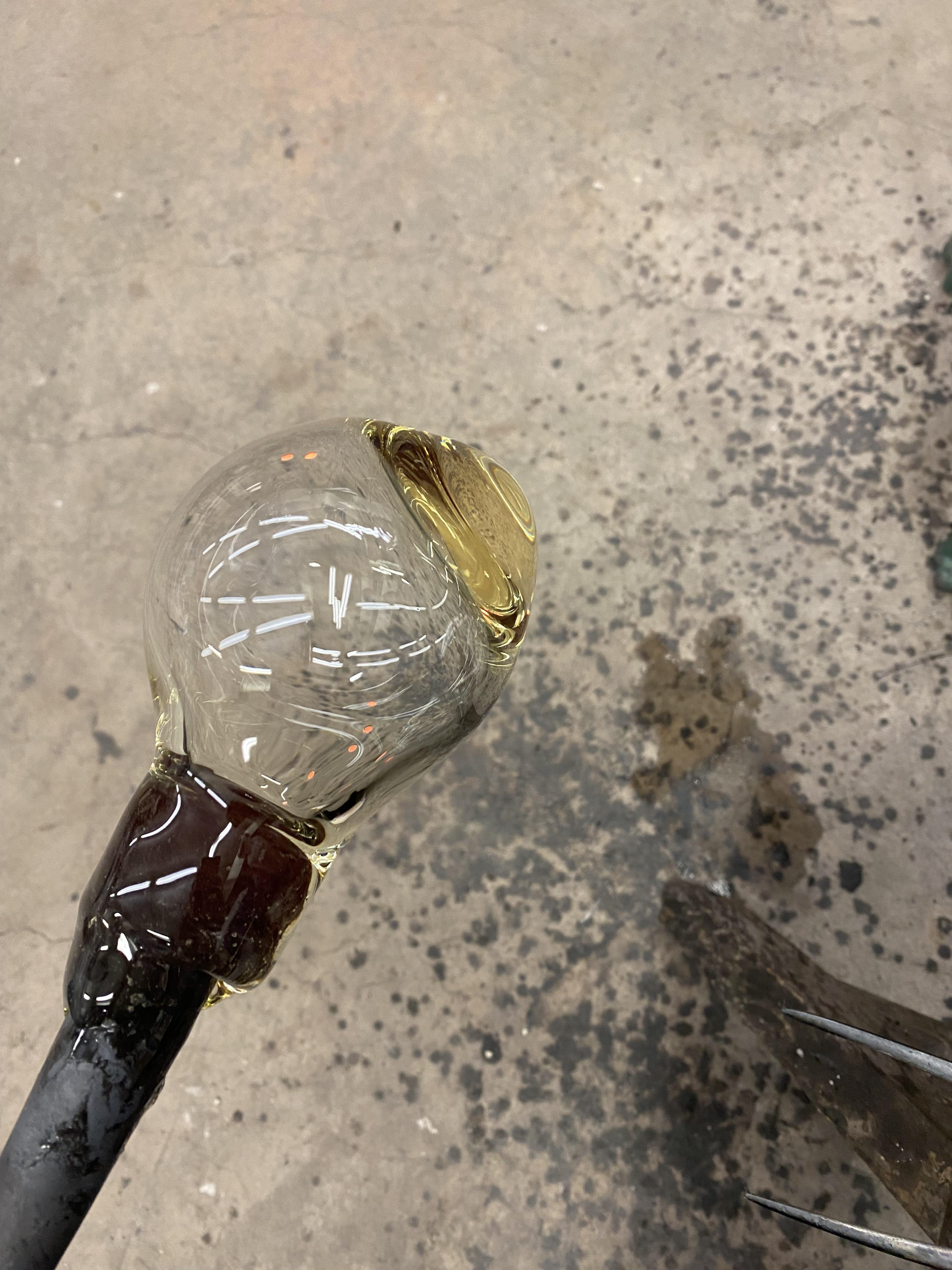
Another attempt at blowing a bubble. However it went wrong due to not turning the pole enough when blowing down the pipe. To get the air to travel to the thicker part of the glass you have to heat just that area up as it travels to the hottest part.
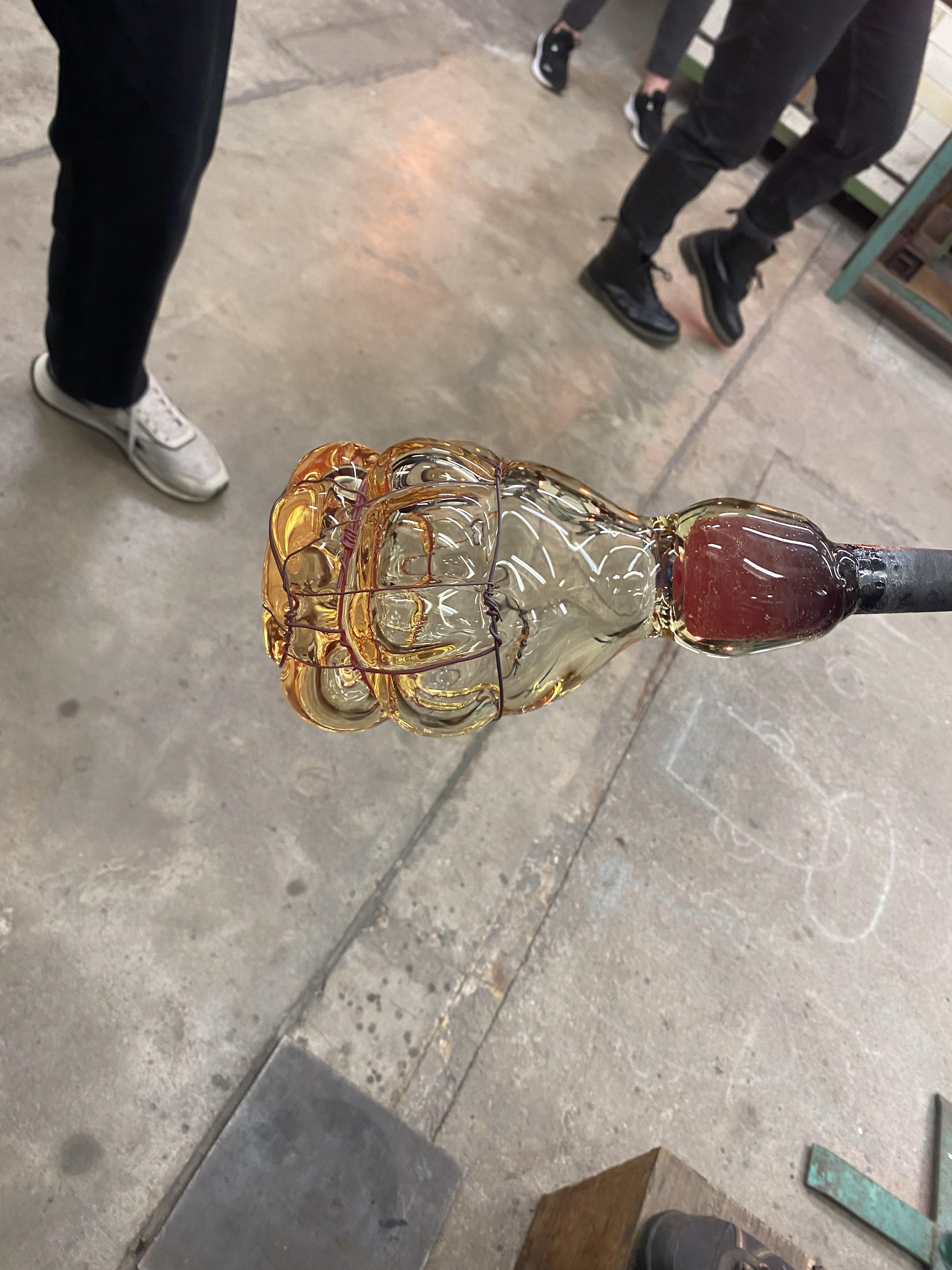
When I blew a glass bubble into a wire copper cage
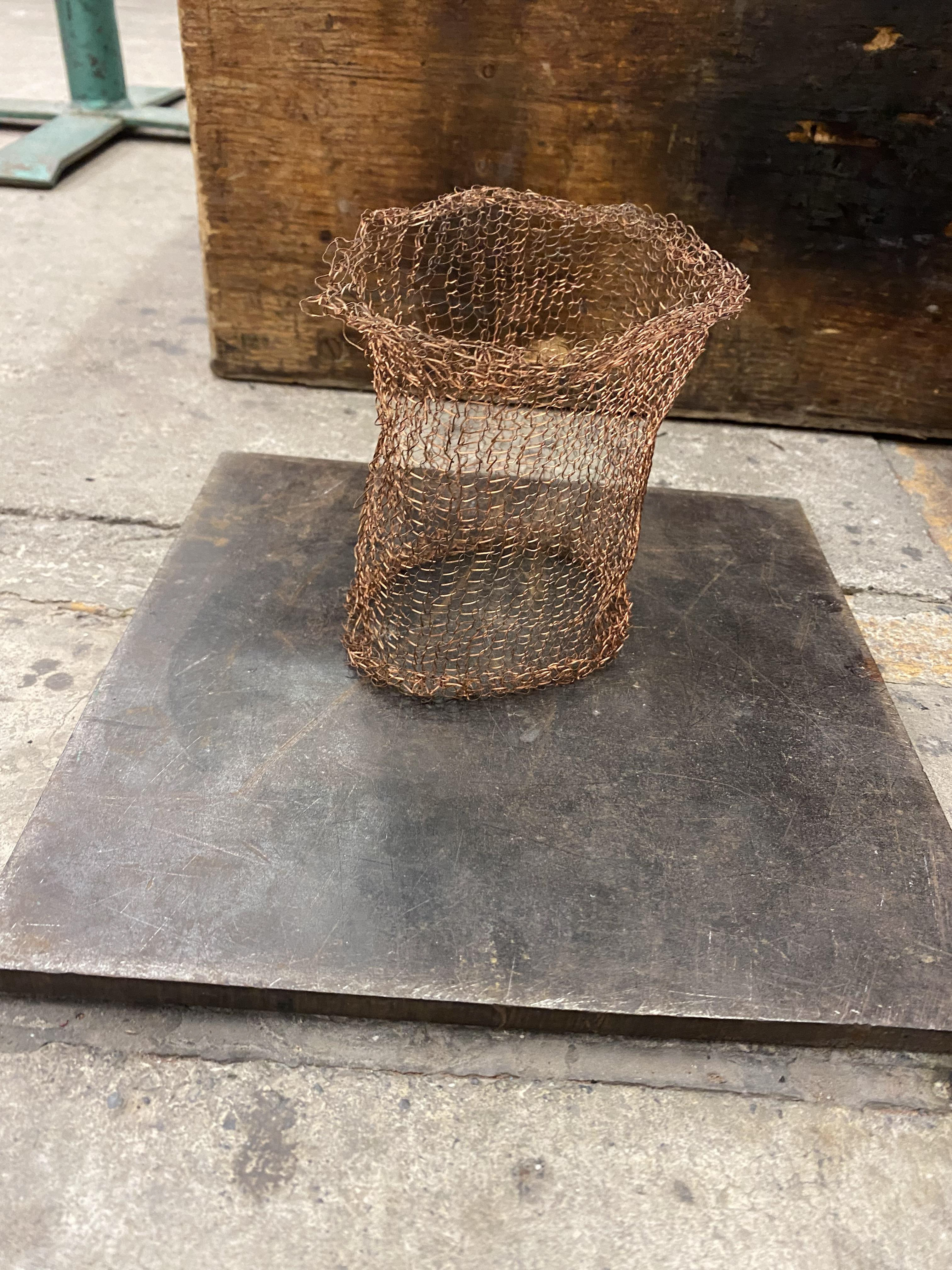
We explored different forms of copper such as using a copper mesh sponge which has been unraveled.

The copper cages i created using copper wire and pliers to bend and twist the wire to connect it.

Up close results of the glass blown into copper.
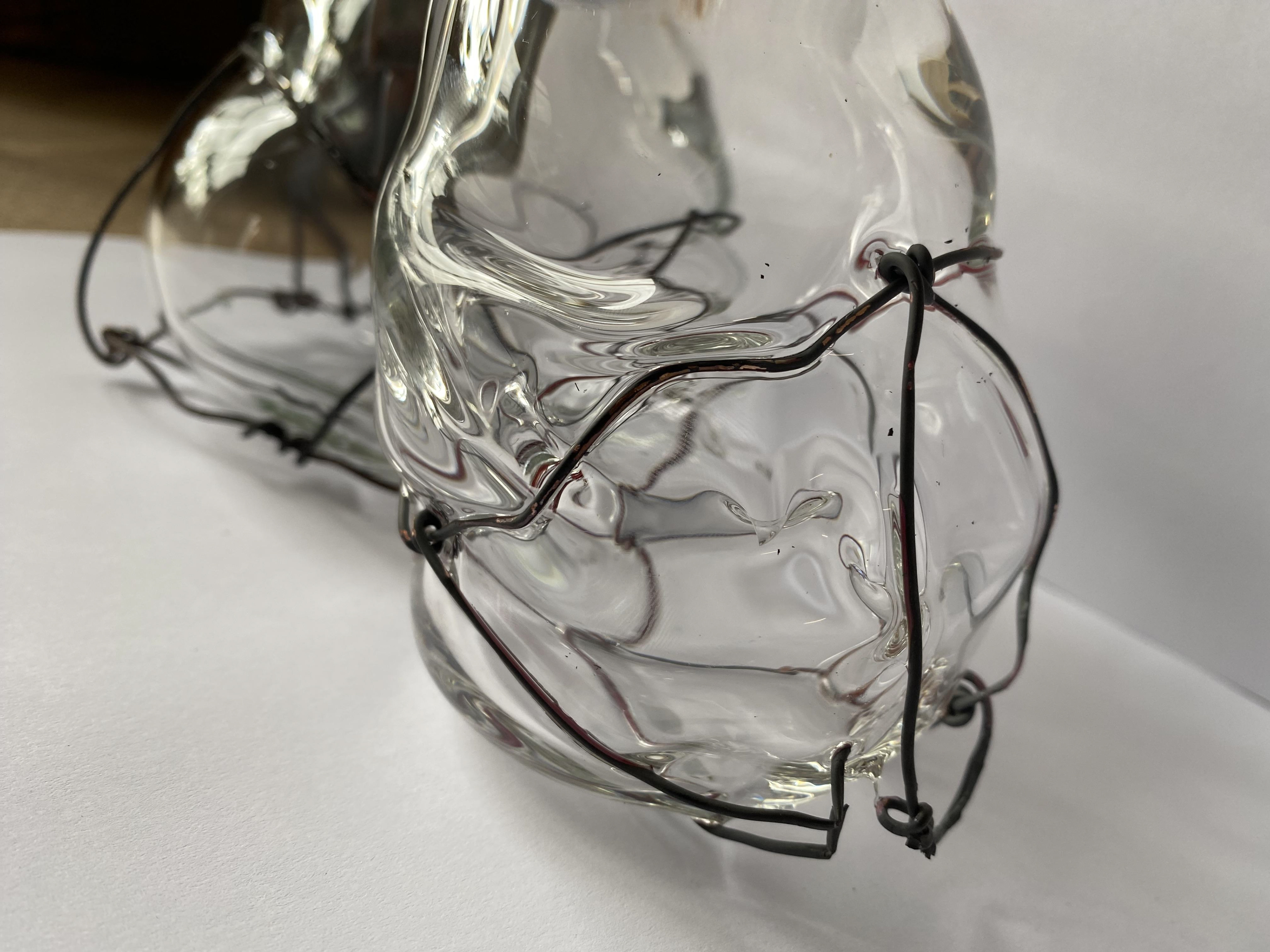
Up close results of the glass blown into copper. You can see the copper has oxidised.
The above images are from a technical workshop I took part in week 4 where we created a copper wire cage using twist, bend and pressing motions to form a 3D shape. From this we then wanted to blow a clear glass bubble into the cage. This would then attach the wire to the glass and from the heat of the glass it would oxidise the copper wire as you can see. I was happy with the results from this however if I was to do this again I would gather more glass to create a bigger bubble and try and get the glass to fit into all corner of the cage so that the wire was attached to the glass all over.

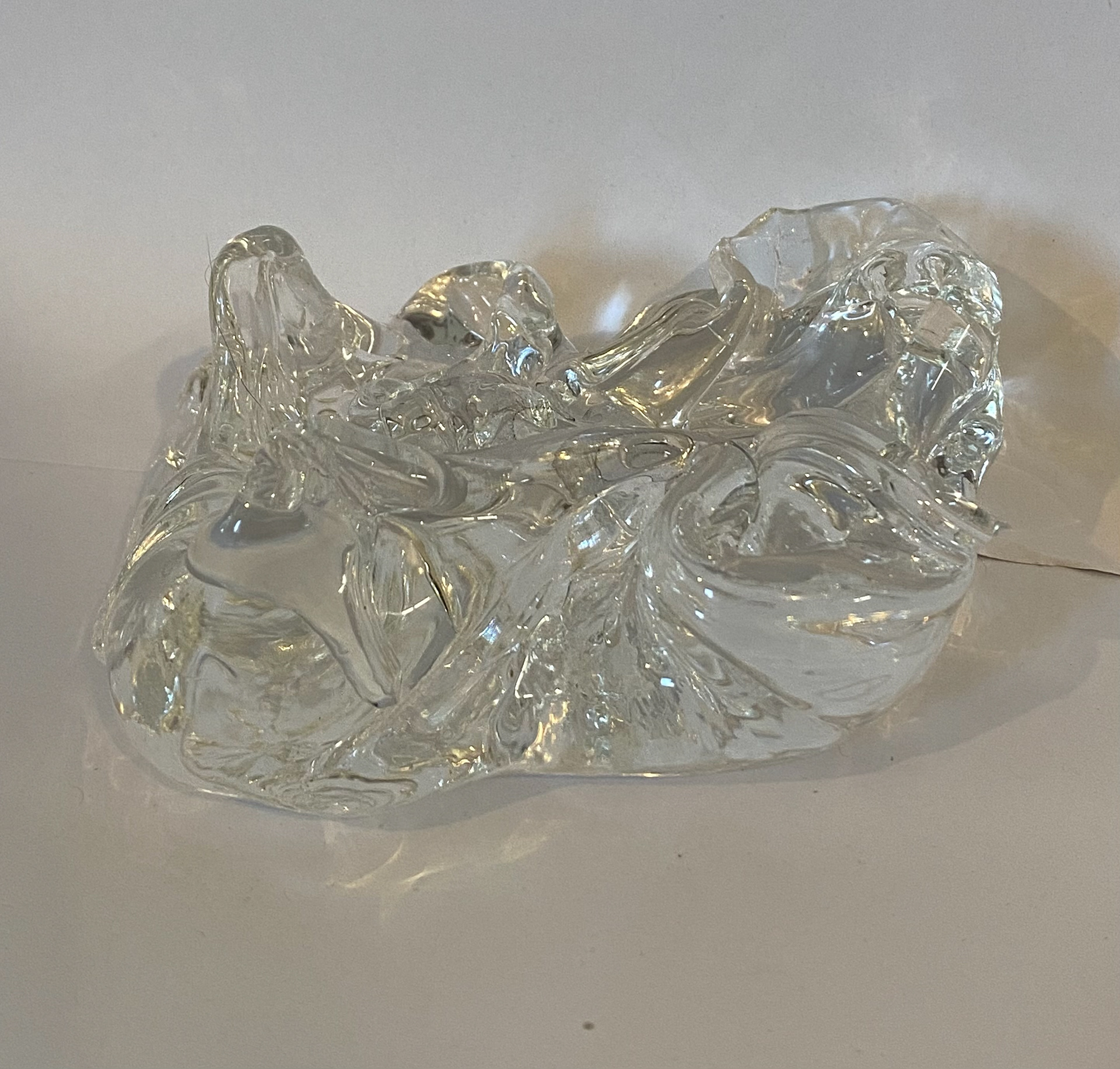
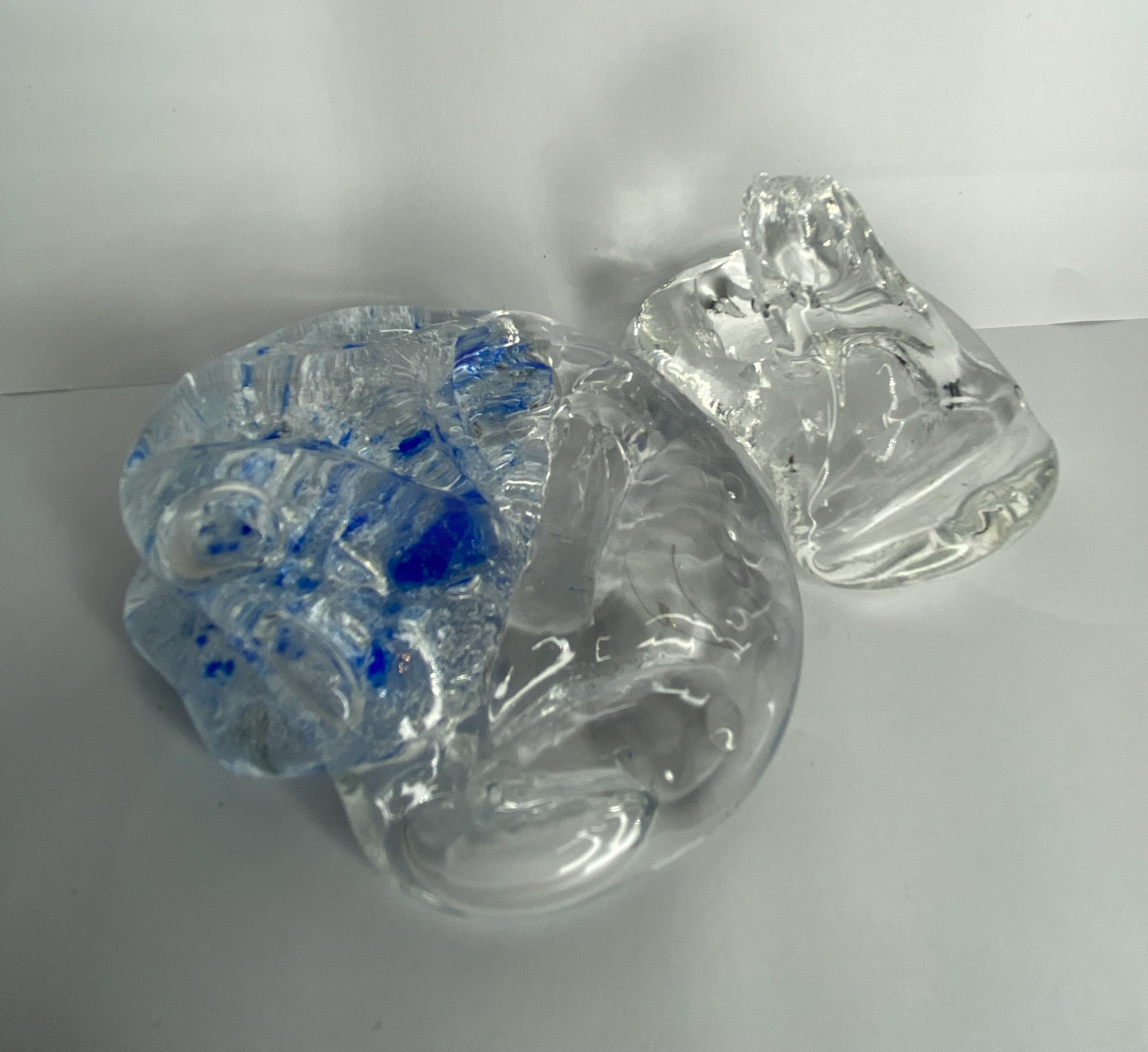
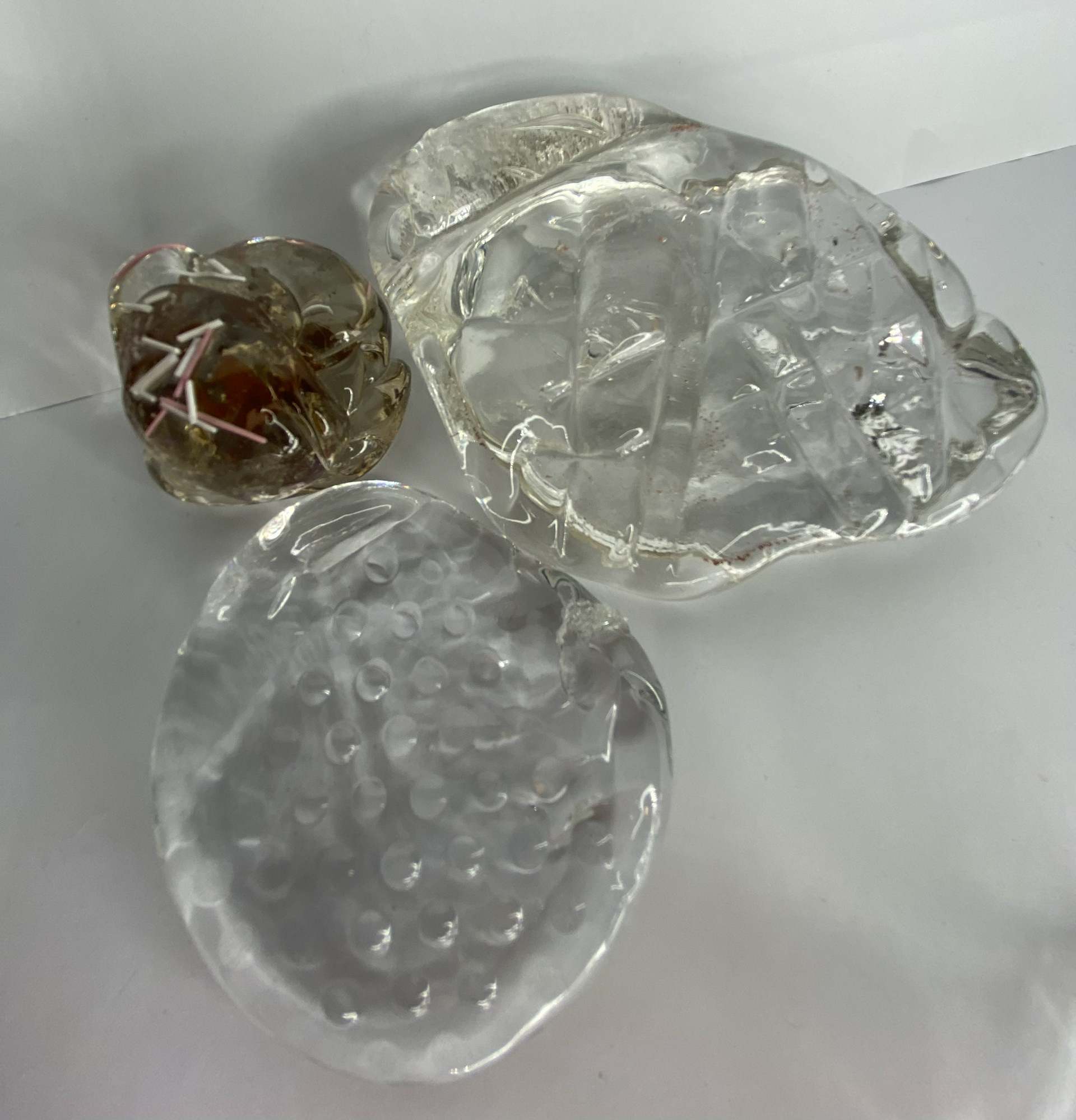
During week 1 in the technical workshops we experimented with texture and colour with glass from the Furnace. Using tools such as tweezers and various shaped iron objects we manipulated and changed the shape of the glass adding texture and impressions into it. As well as this we experimented using coloured glass powder and bicarbonate of soda. By doing this it allowed me to understand how glass behaves and opened the door for opportunities in which I could develop this further.
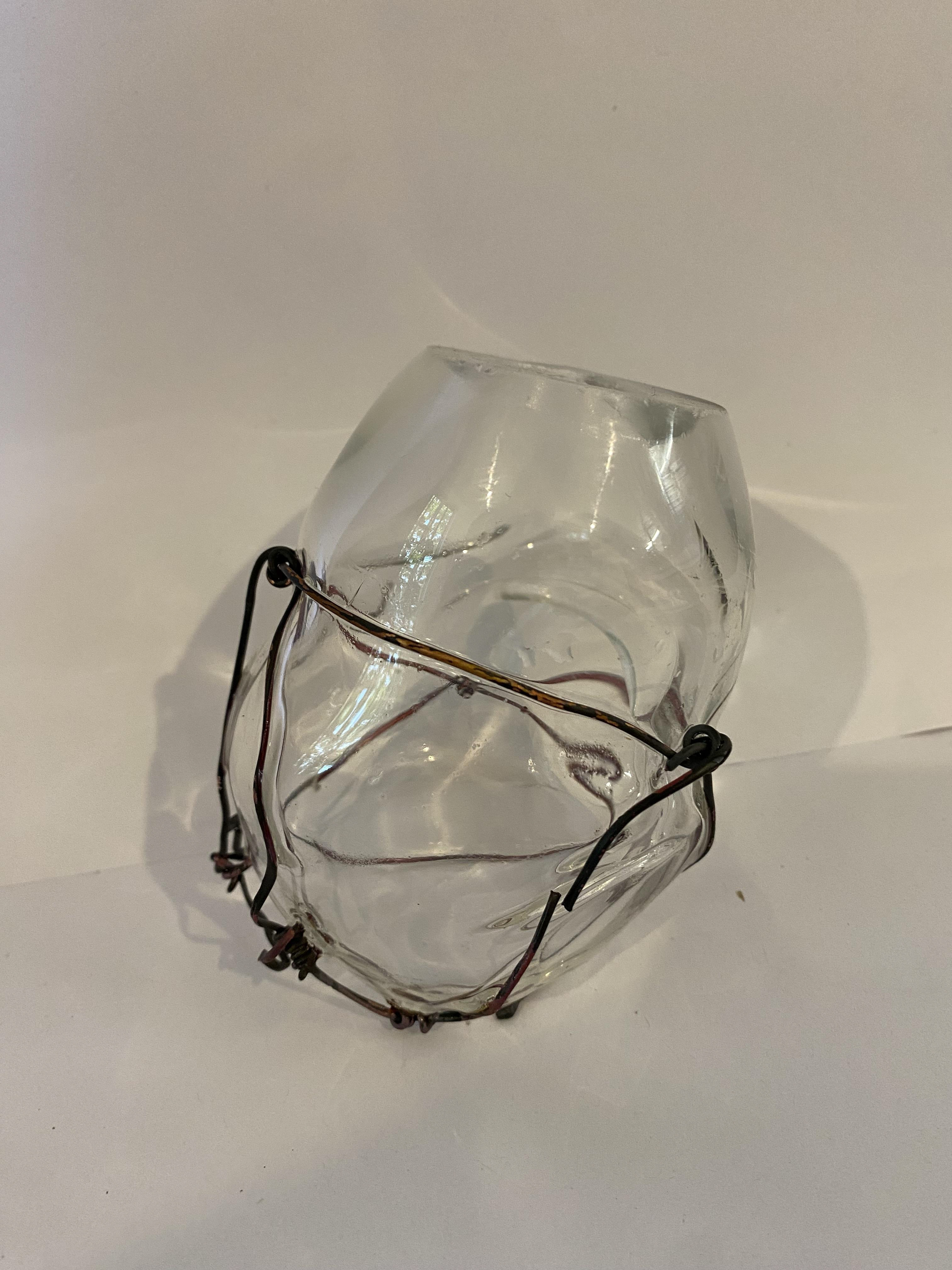
Full cold worked pieces
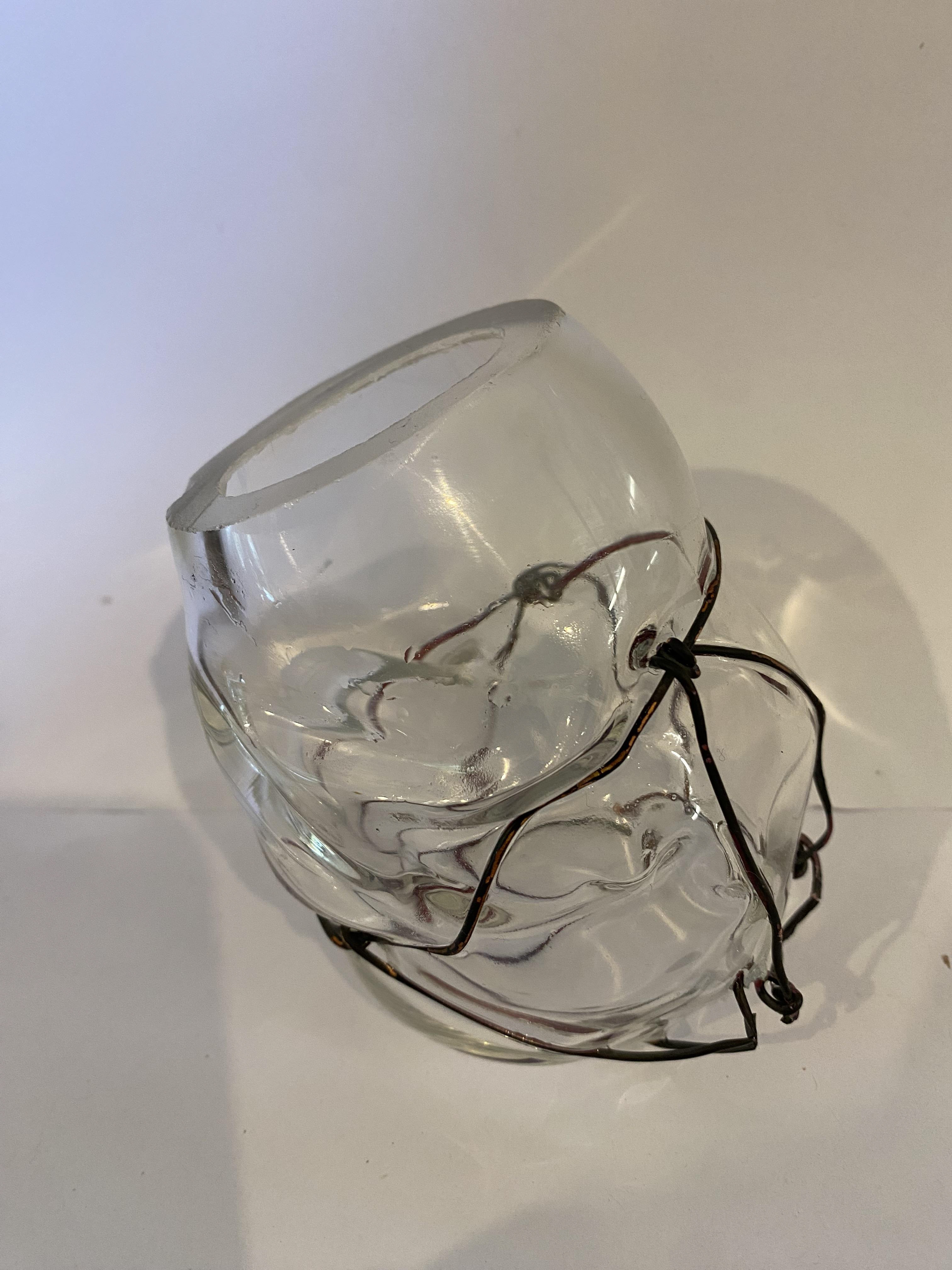
Full cold worked pieces
Video of myself blowing my bubble into the wire cage.
Being taught how to use wet newspaper to correctly shape the glass.
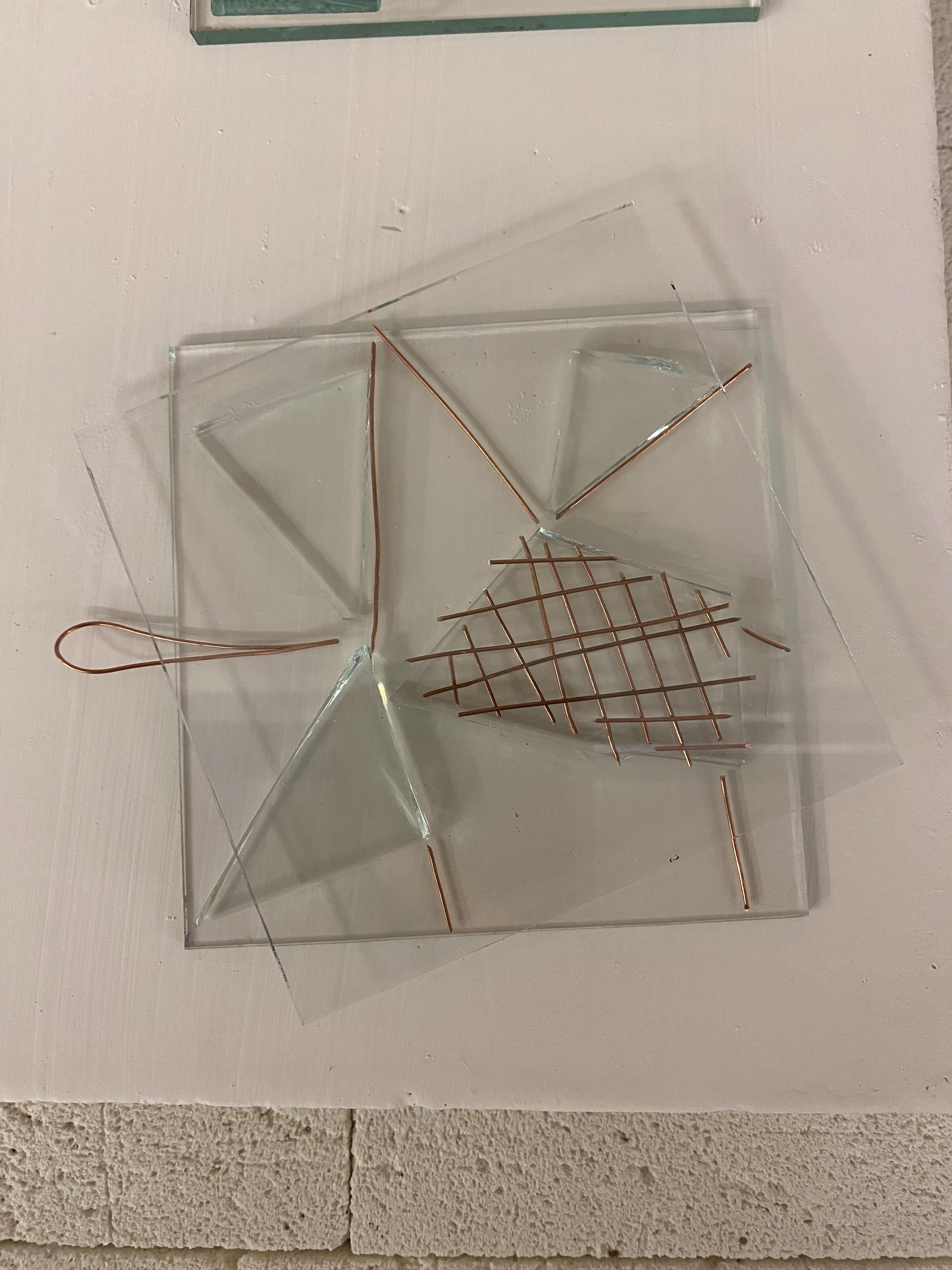
Sample piece using copper wire trapped in float glass

Adding foil and copper wire between glass
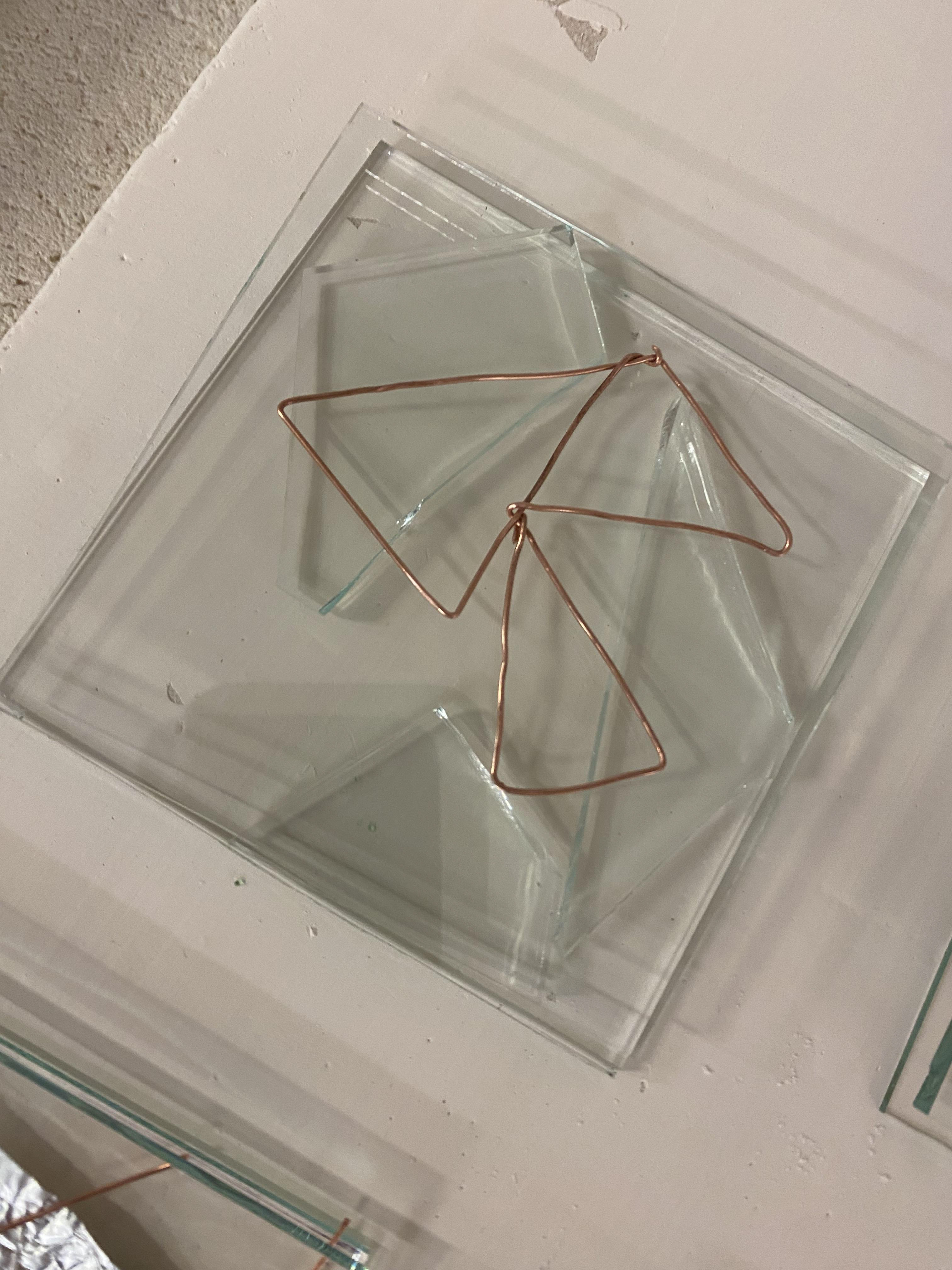
Using copper wire and glass shards to create texture

Results of glass tiles after being in the kiln on full fuse

Results after being in the kiln

A group of samples by myself and peers
During week 3 in the workshop we experimented with float glass, copper wire and foil. We trapped the materials between sheets of float glass and placed them into the kiln on a full fuse. This was interesting to see how aluminium foil reacted to the process of the kiln. I liked the dark metallic texture it created and would like to explore this further with different coloured glass to see hoe it would appear.
Ideas & Development
When first approaching this unit my initial ideas were influenced by our visit to Yorkshire Sculpture Park and coming across David Nash's sculpture 'Black Mould'. I liked the idea of working with wood as this has been a material I have wanted to work with more. I also liked the depth of how dark the wood has turned because of the controlled burning David Nash does to the wood in his pieces. I did some research into Lava as I want my work to represent the hot/burnt state that Volcanic eruptions can cause. Throughout this research I discovered artist Lynden Over who has created work based on a similar topic.
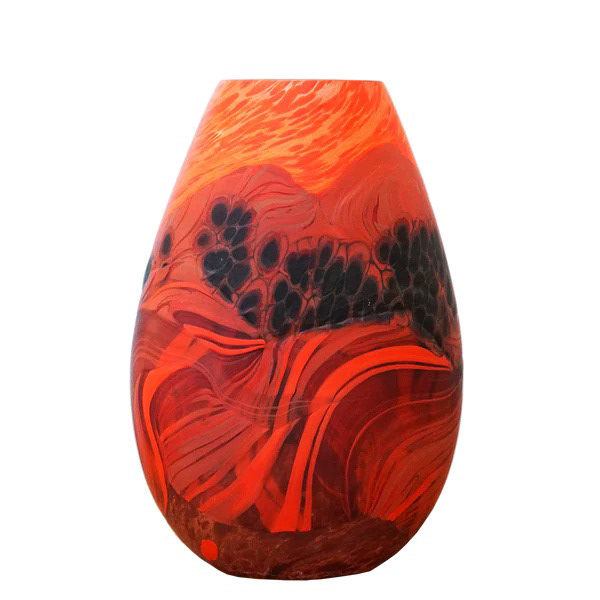
Lava glass by Lynden Over
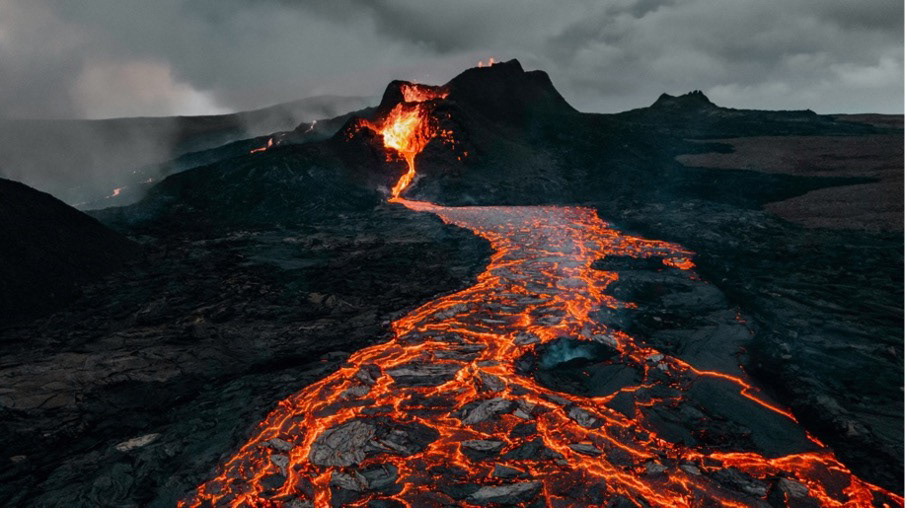
Volcanic eruptions
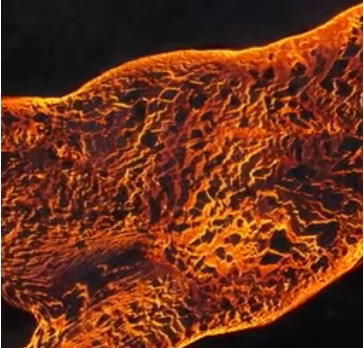
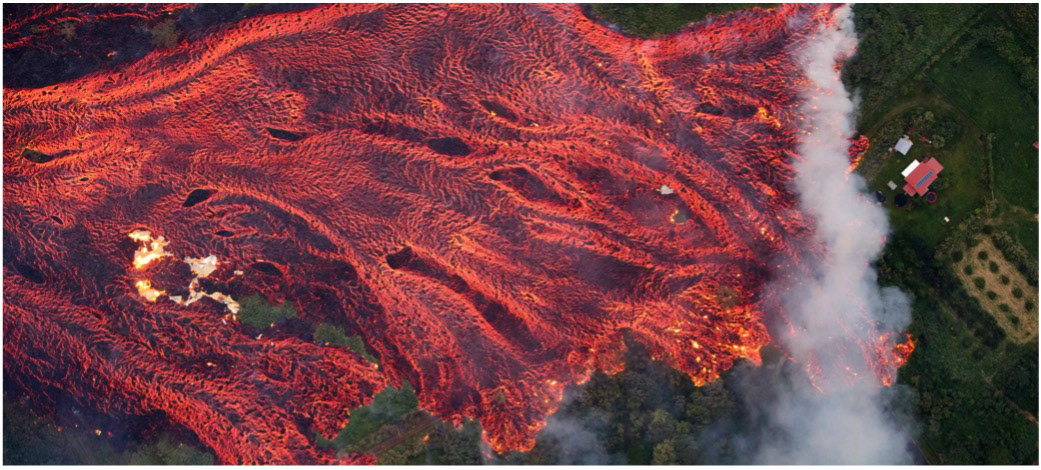


David Nash 'Black flame column'
The bold red glass along with dark burnt wood appealed to me. I was going to collect some logs and burn them myself and then play around with red glass presenting it on the wood in different ways. However when speaking to the glass technician, I found out that red glass is particularly difficult to work with and decided I wasn’t yet skilled enough to do this.

Sketches of wood/glass ideas

Further ideas/sketches

Sketches of fusing glass ideas
From there I looked back on what I had learnt in the technical workshops and decided to explore kiln glass further as I had only done a little bit of it. I bought some copper foil and wanted to experiment with that in different ways to see what would happen.
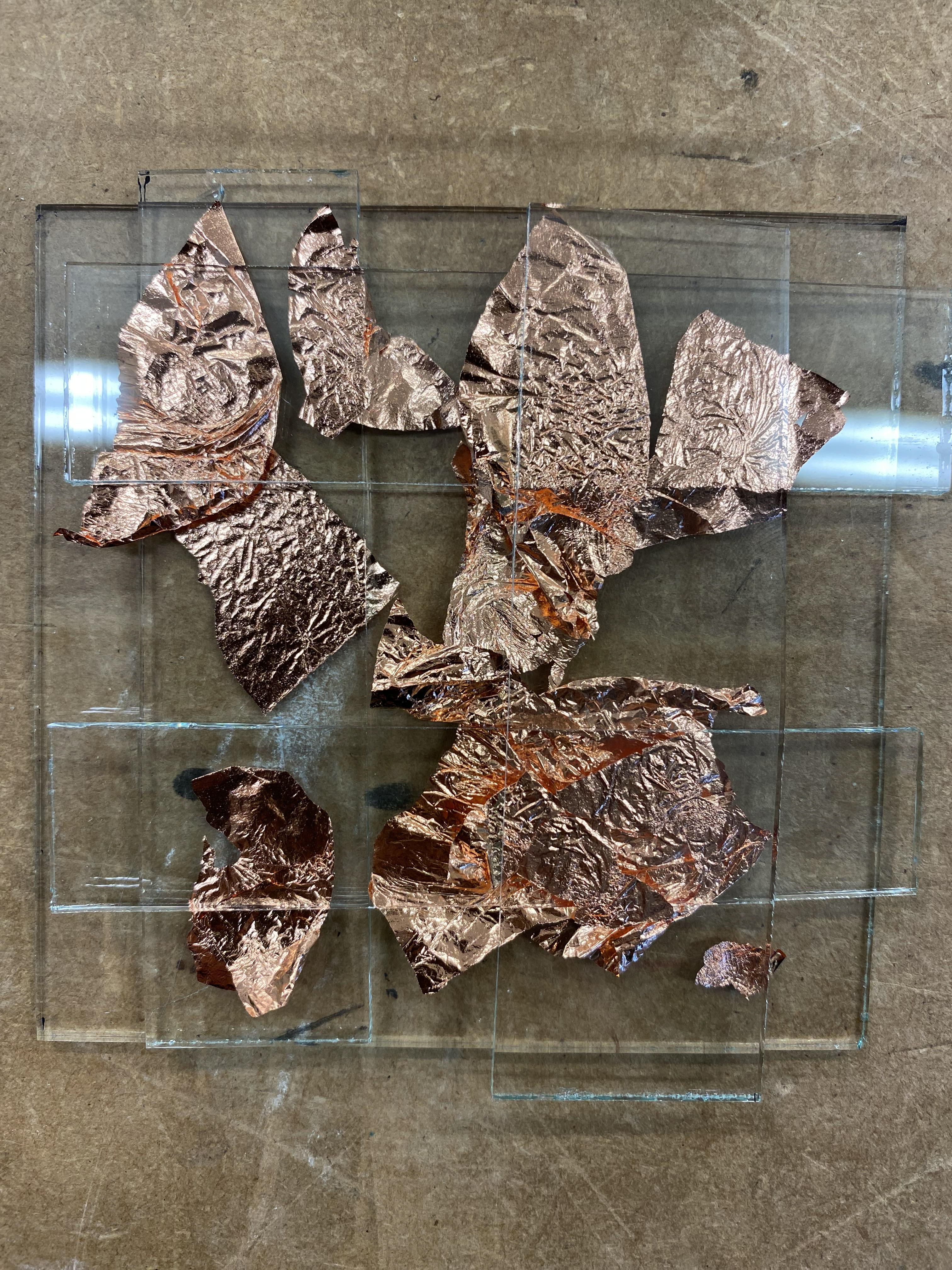
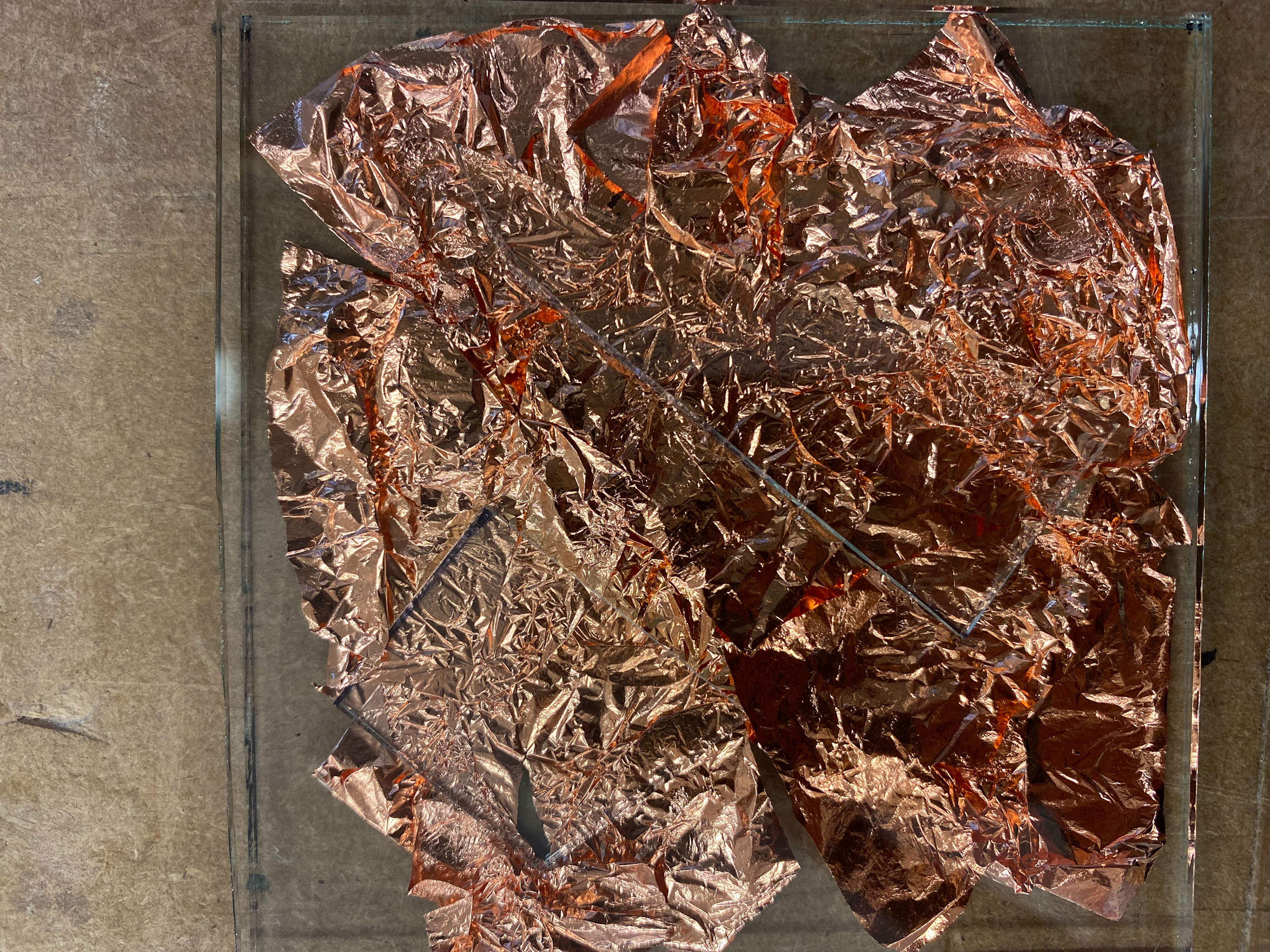
As you can see in the photos below, the copper turned black which isn't what I thought would happen. I knew the uncovered parts would burn however I believe this was because to much air got to the foil and it wasn't trapped enough between the glass.
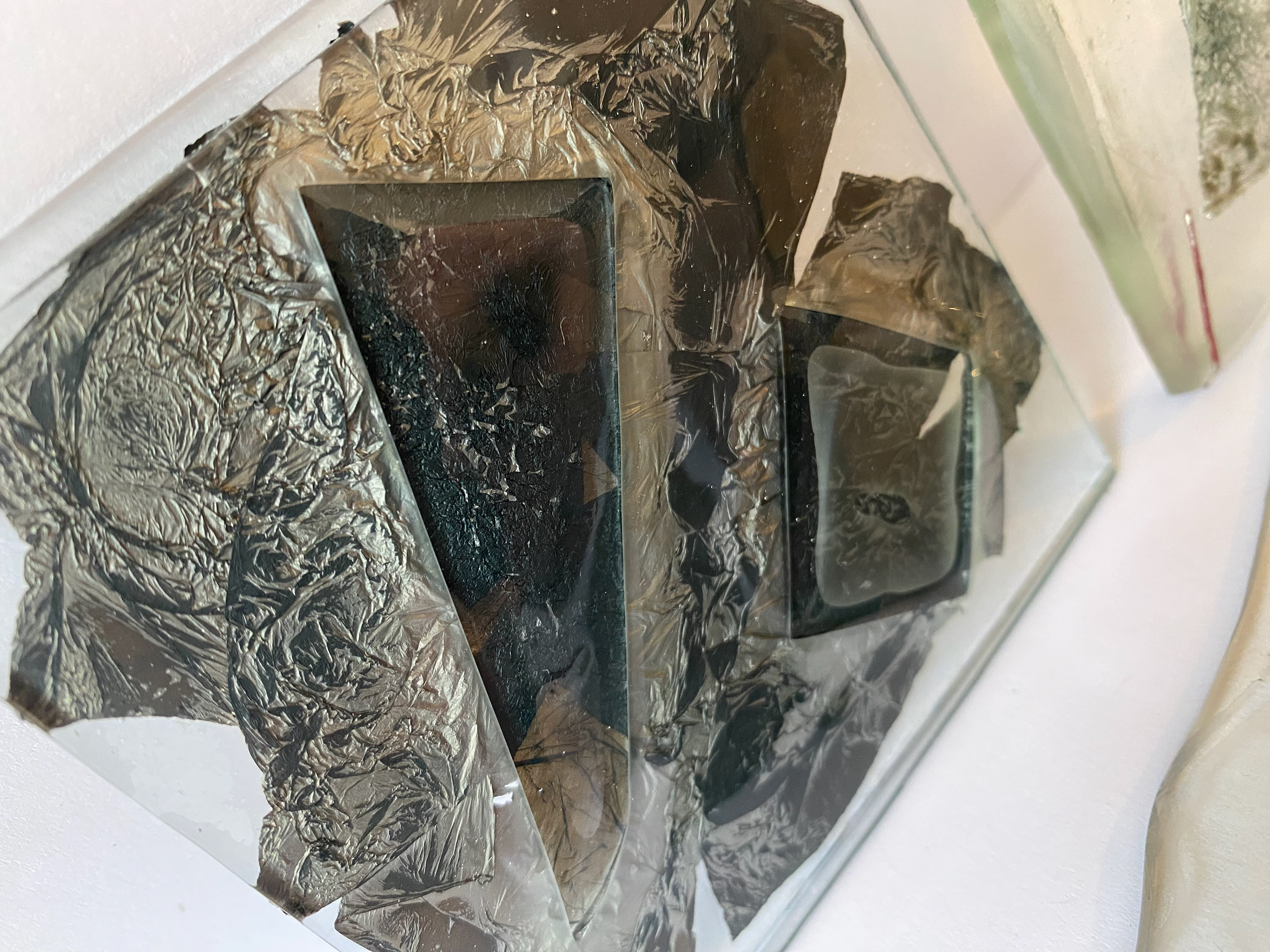



As I like bright coloured glass I decided to experiment further using float glass and kiln glass scraps. I knew these may not be compatible when heated together however I had never seen the results for myself so I went ahead with trying. I made a series of different arrangements including using some of the copper foil. All the photos below are of the pieces before going into the kiln on a half fuse.
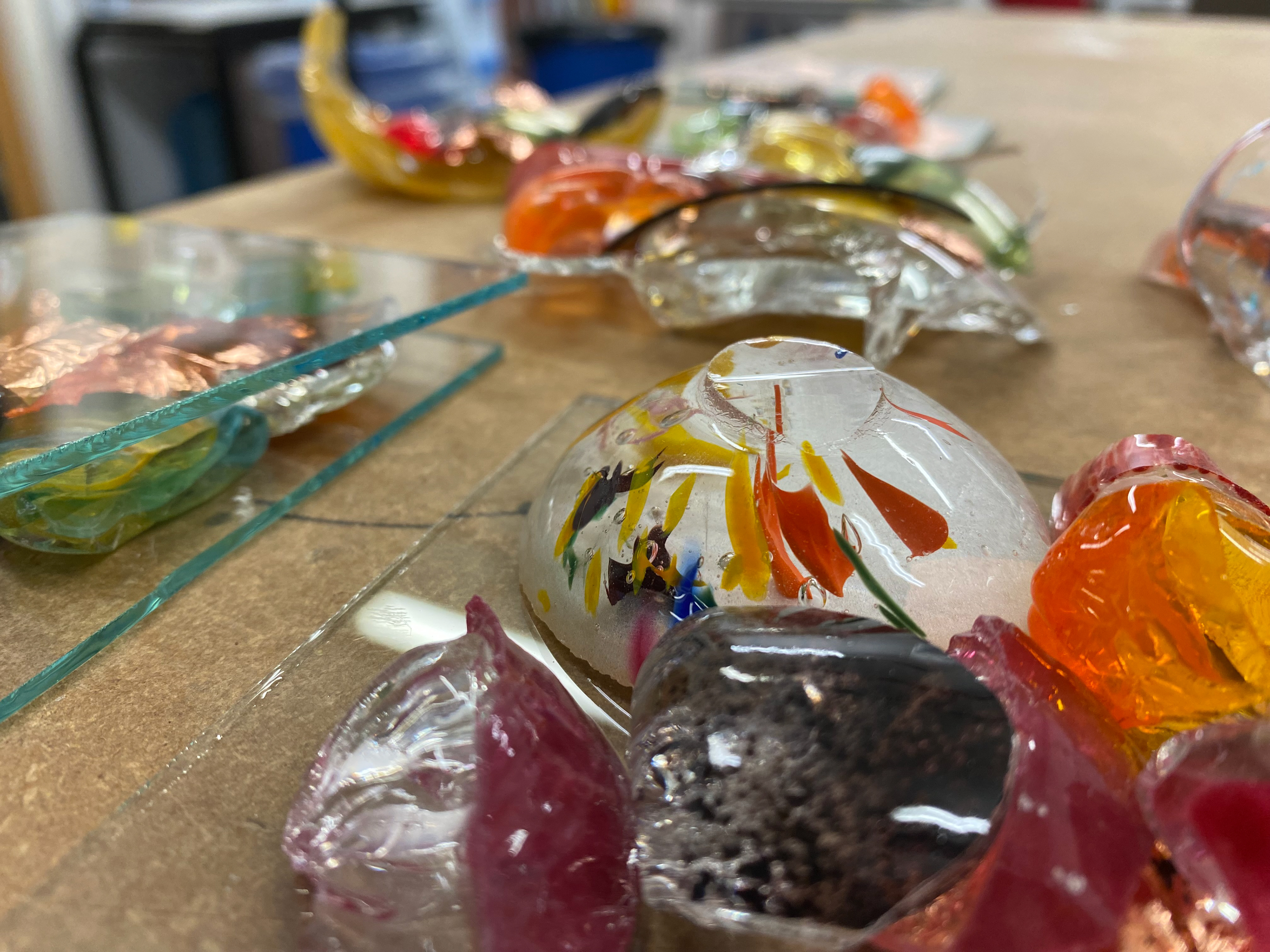
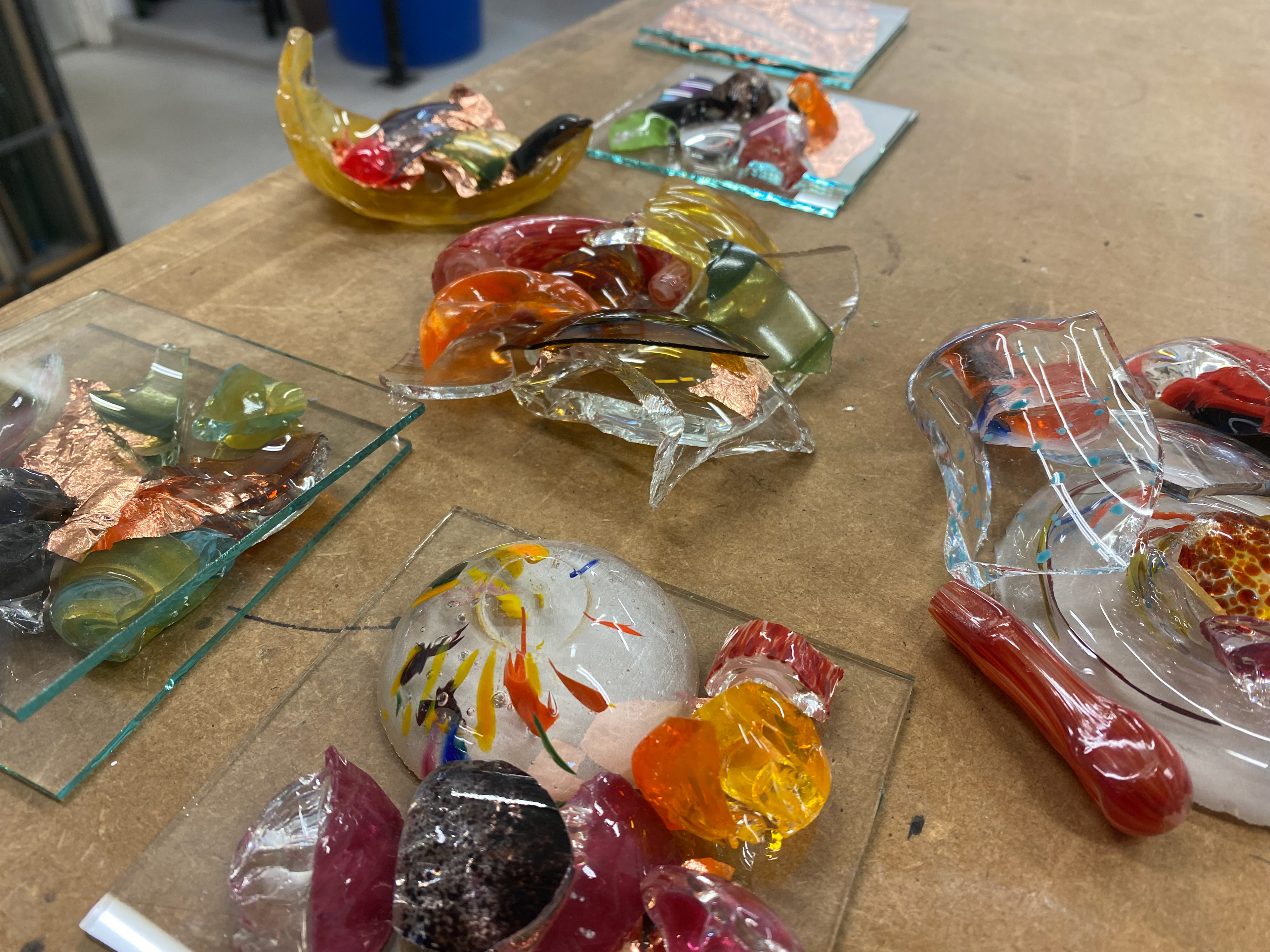
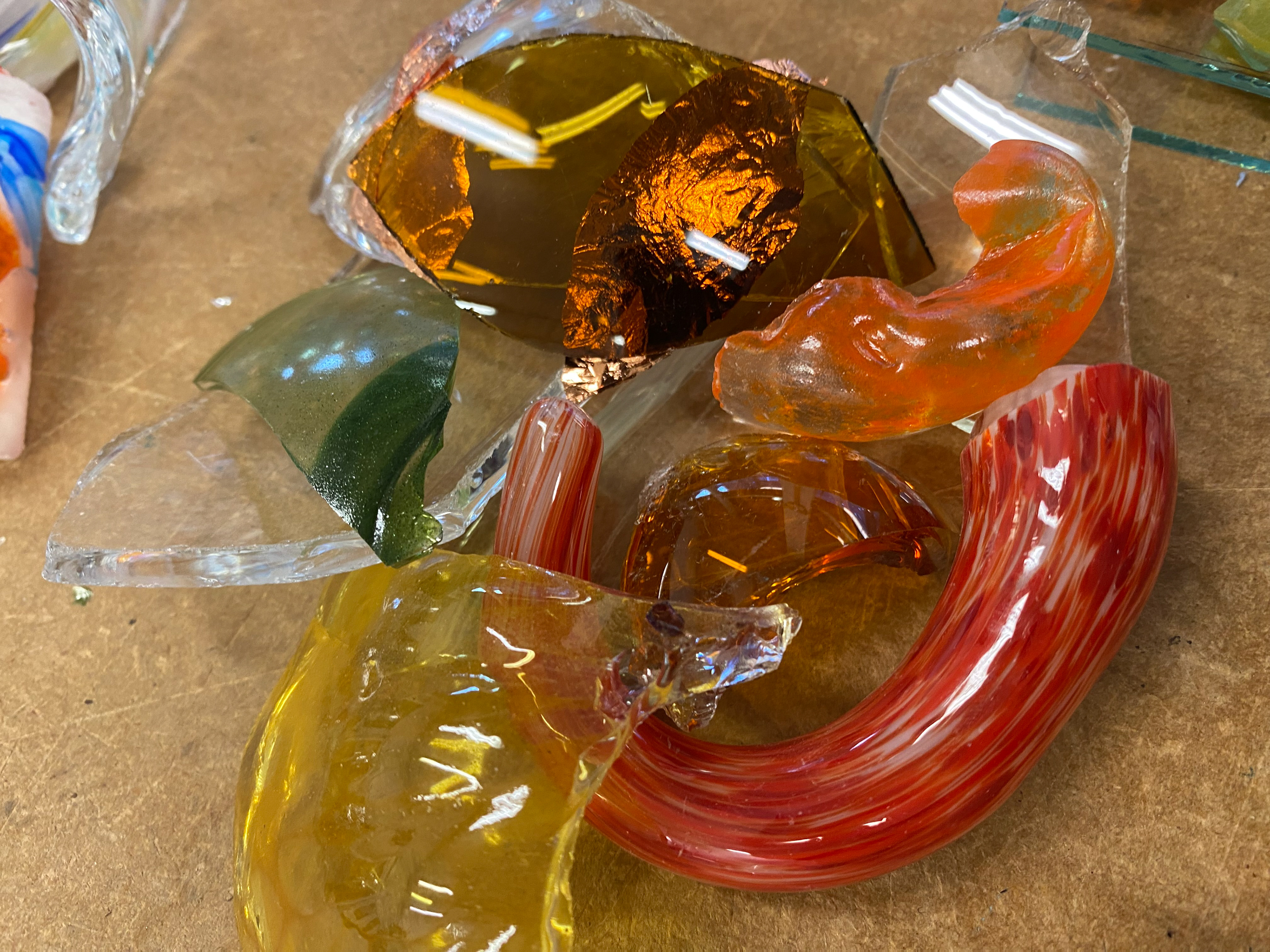
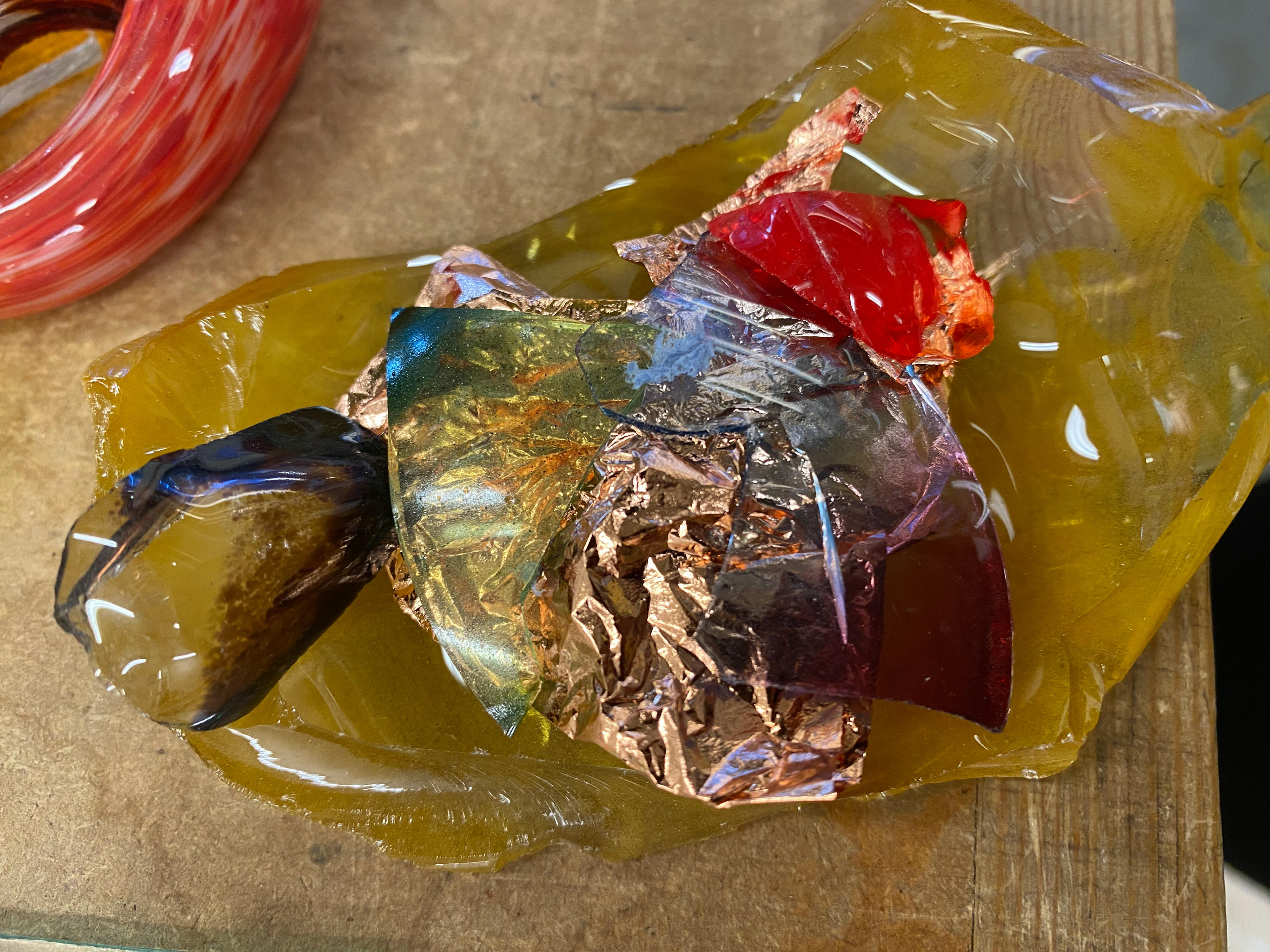
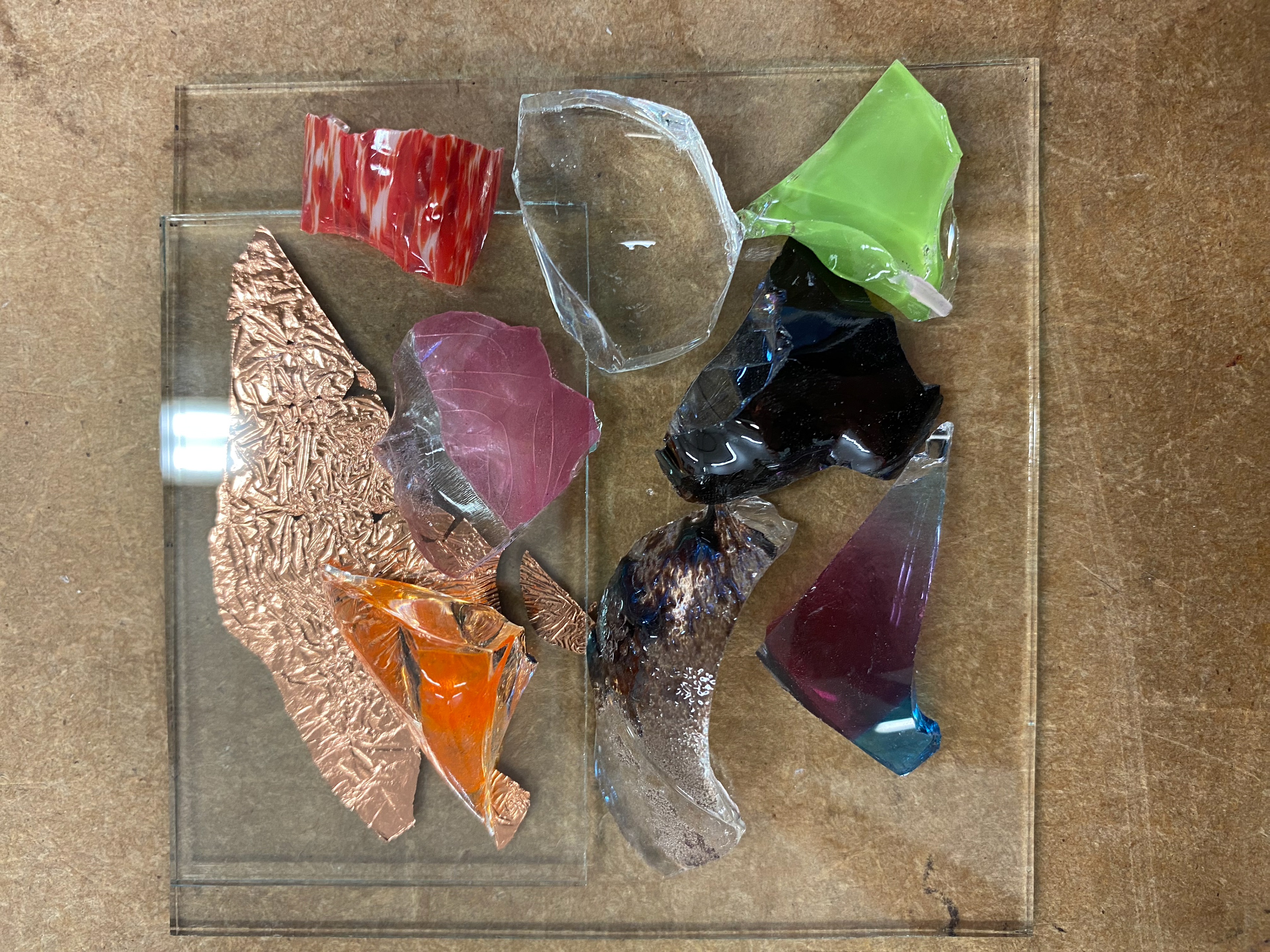
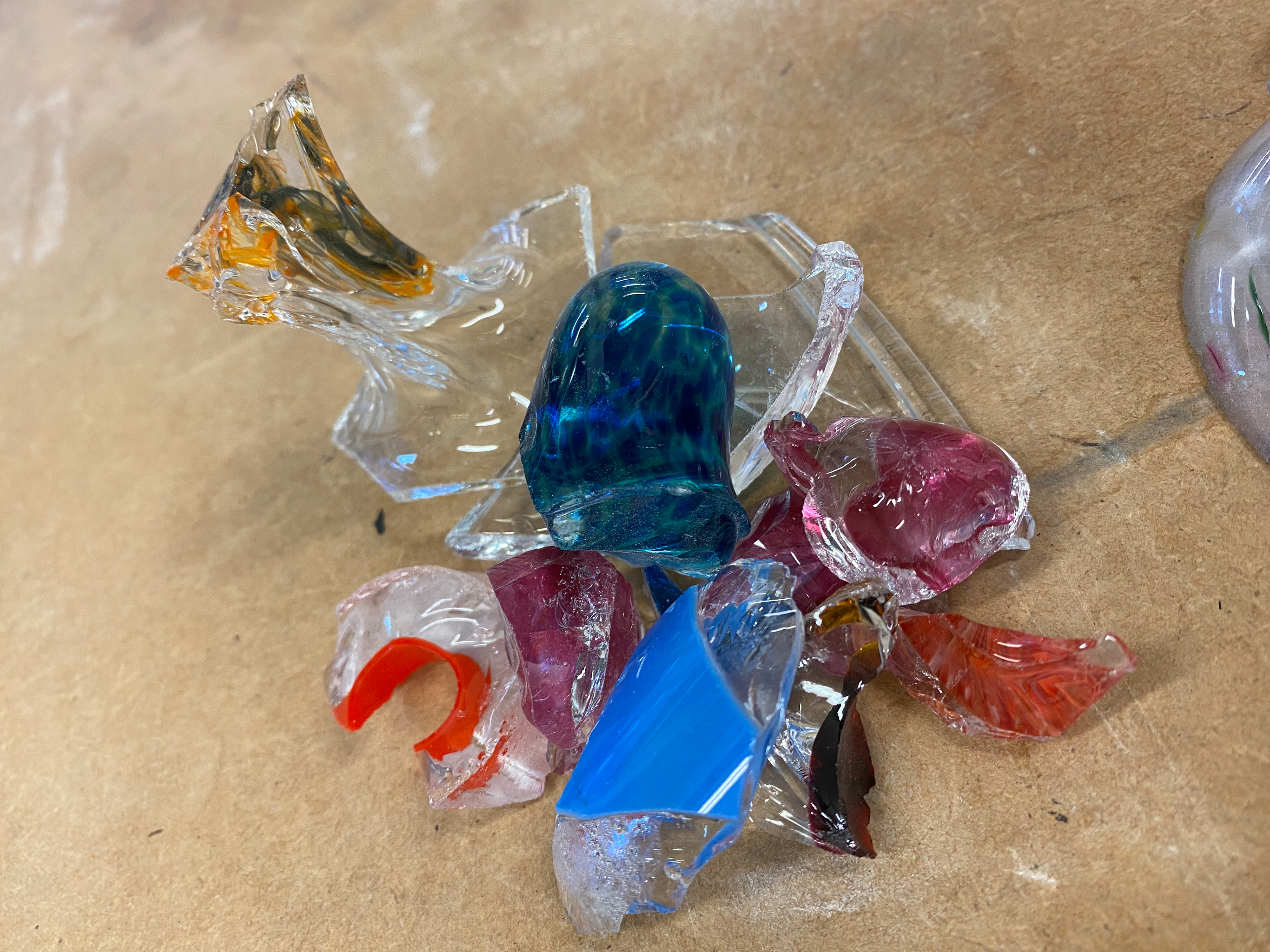



After the glass went through the kiln on a half fuse cycle, these were the results. The copper foil still turned black however some of the incompatible glass held together better than I thought. Where the different types of glass meet you can see some stress cracks and in one piece in particular it cracked through the whole piece.

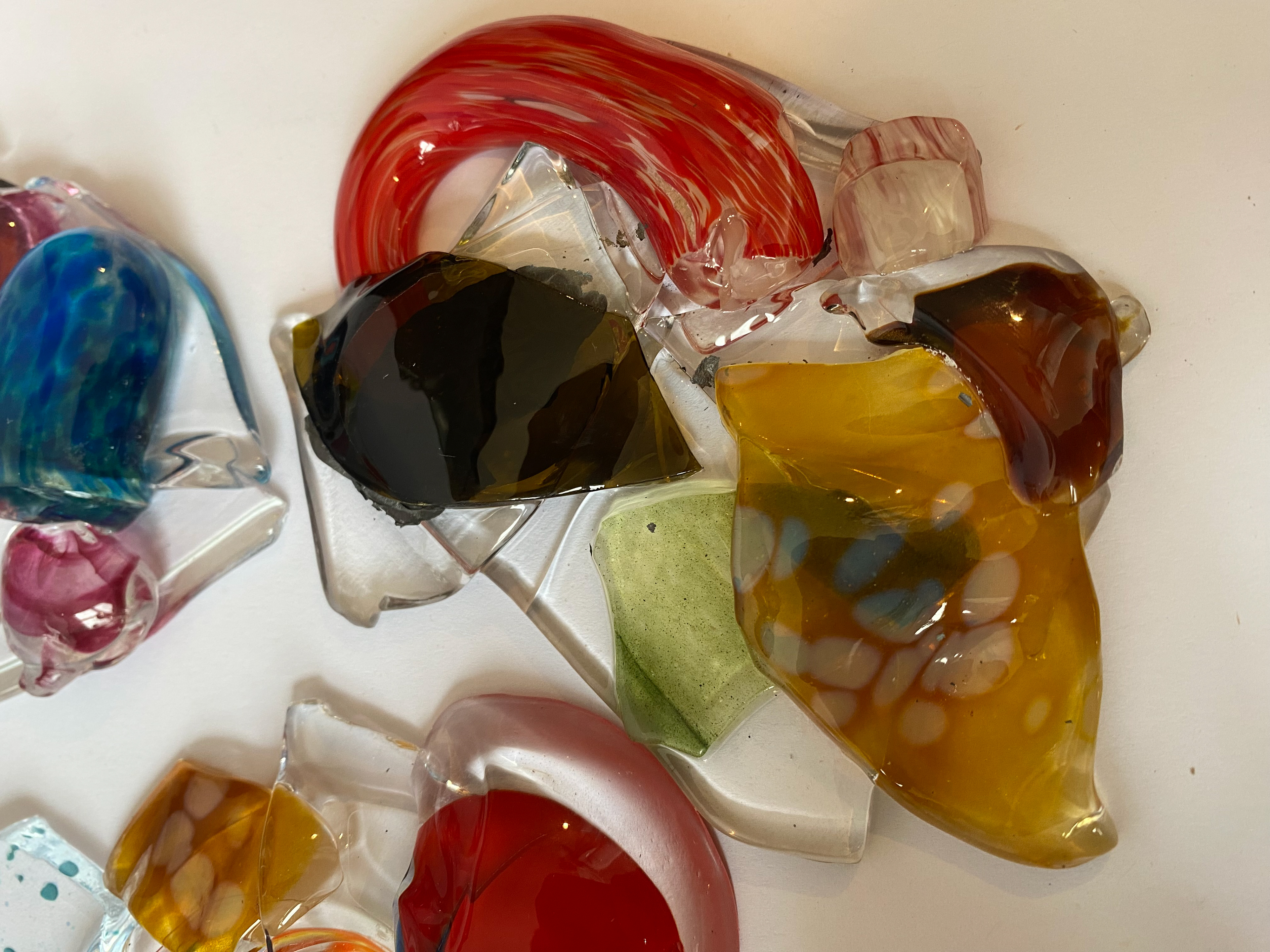

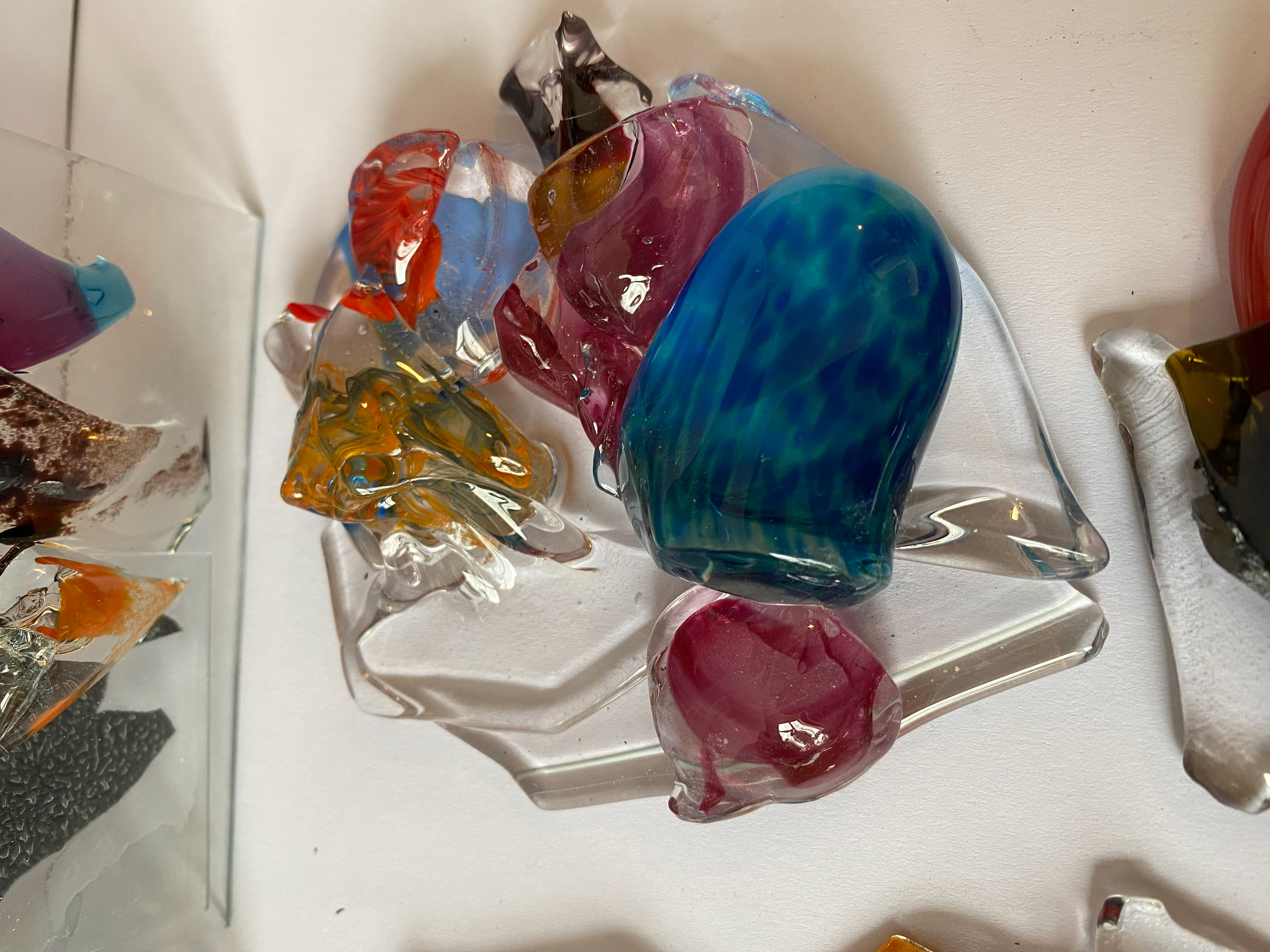
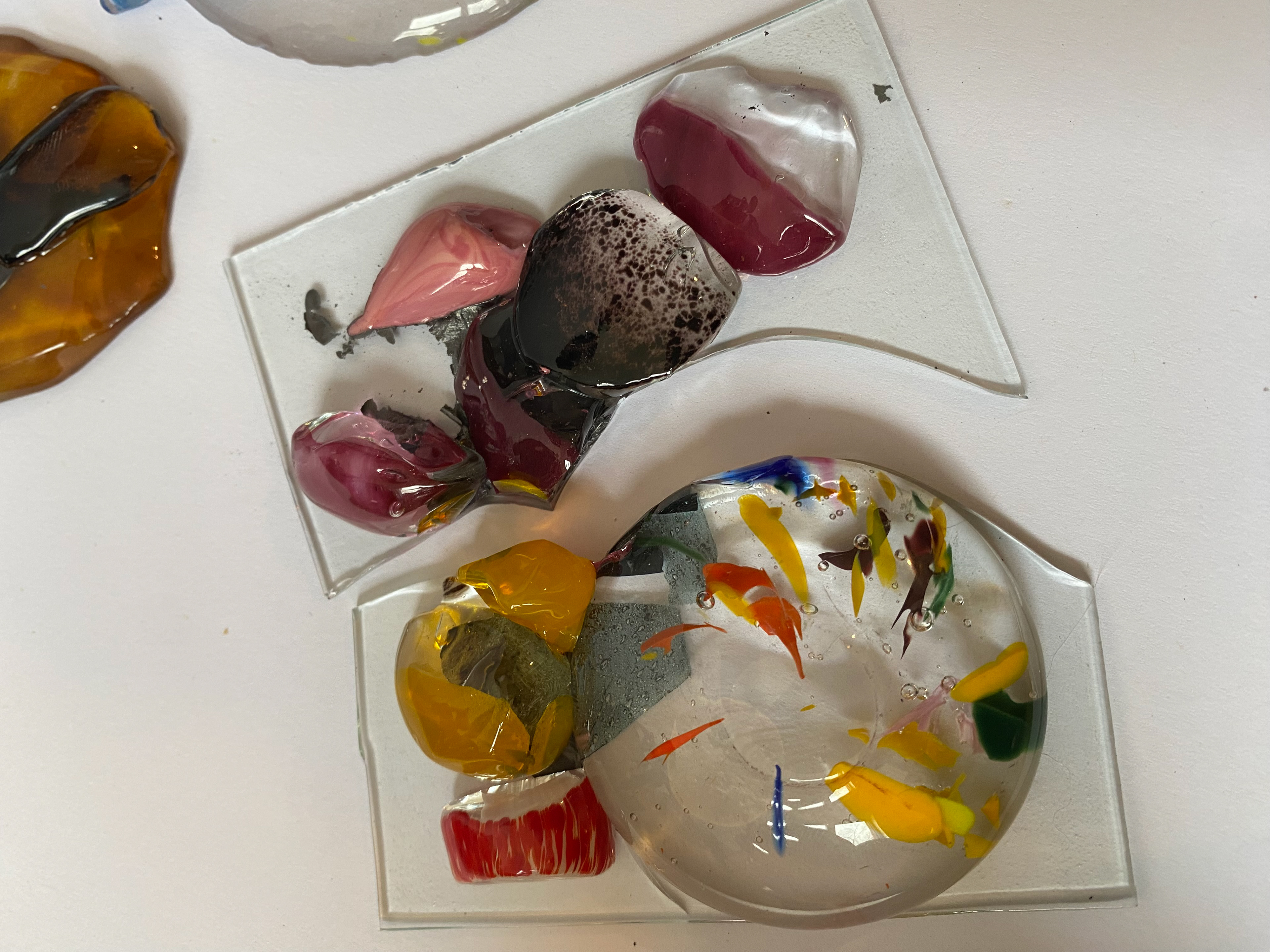
Where the piece cracked in half
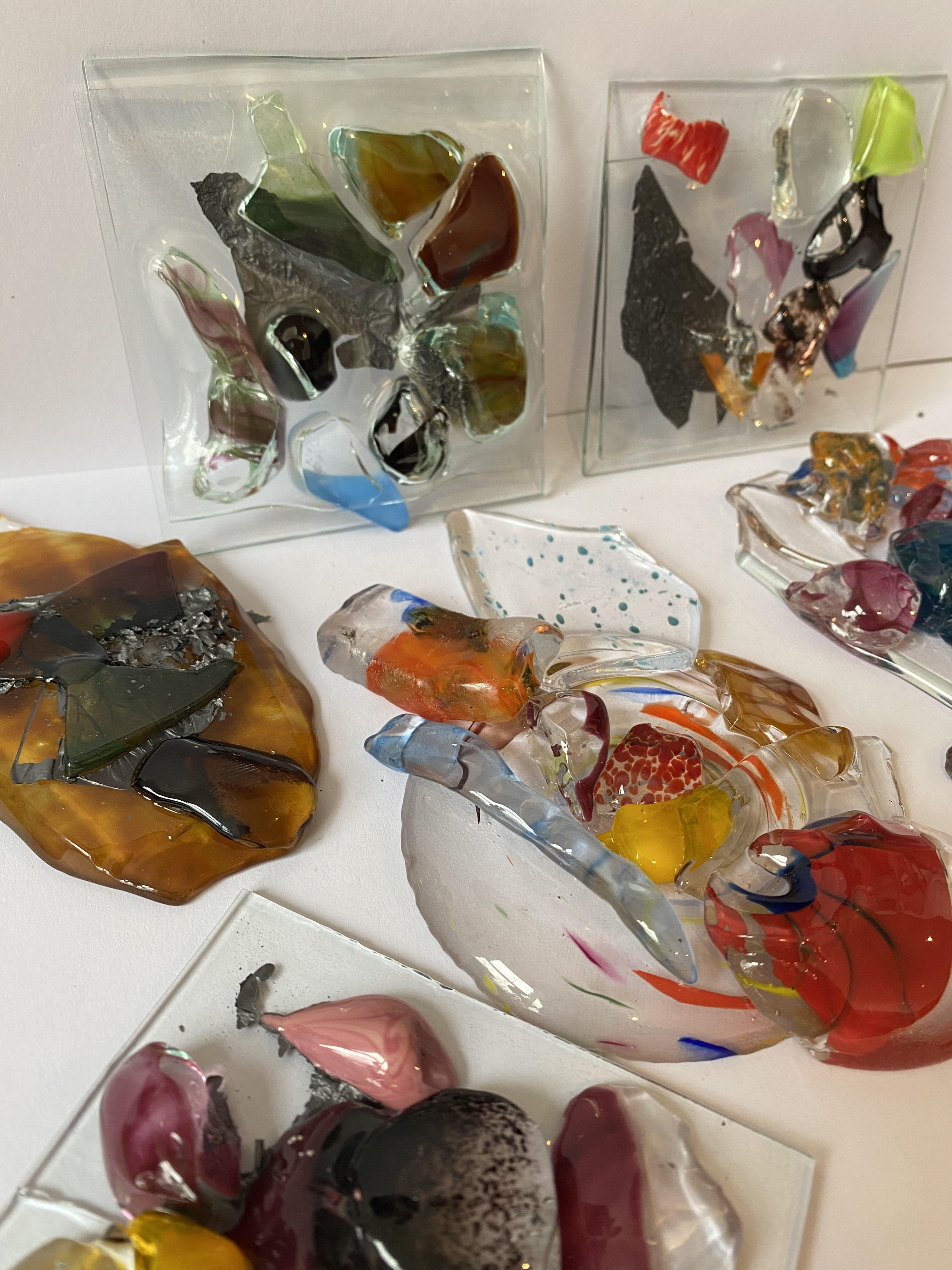
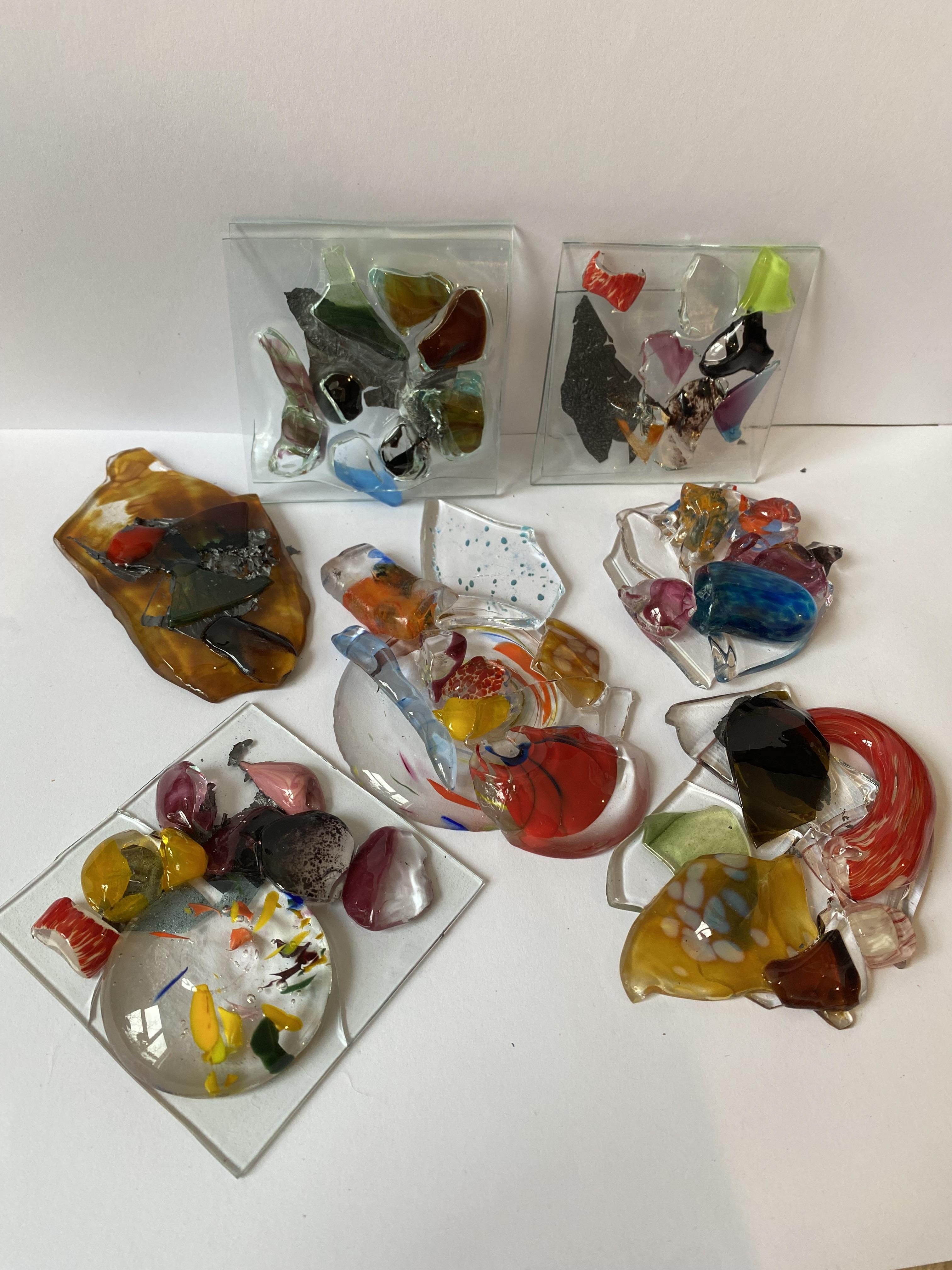
If I was to do this again I would choose to use either just float glass or just kiln glass rather than mixing both. I am happy i experimented with this though as I now know more about glass and how it behaves.
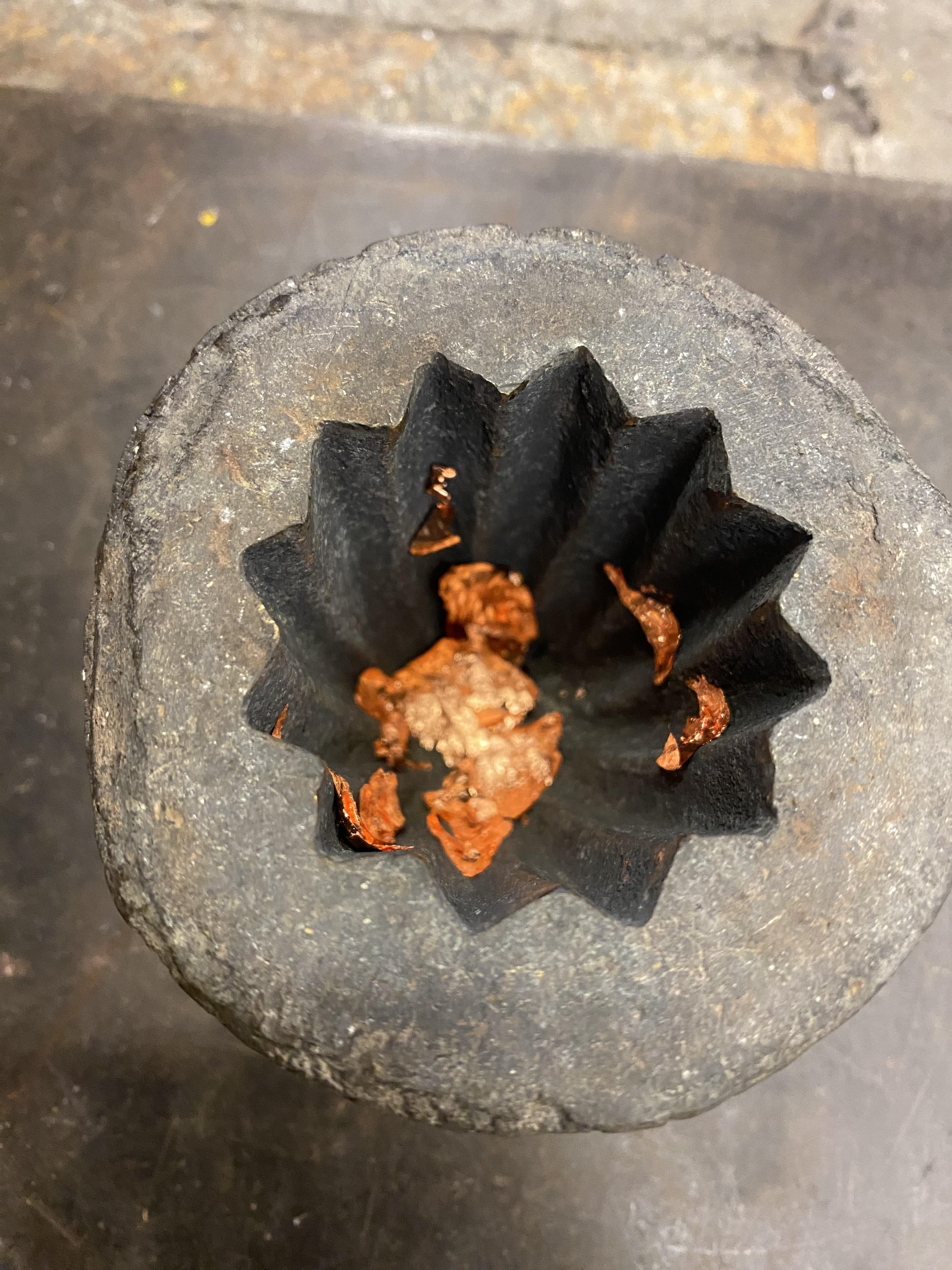

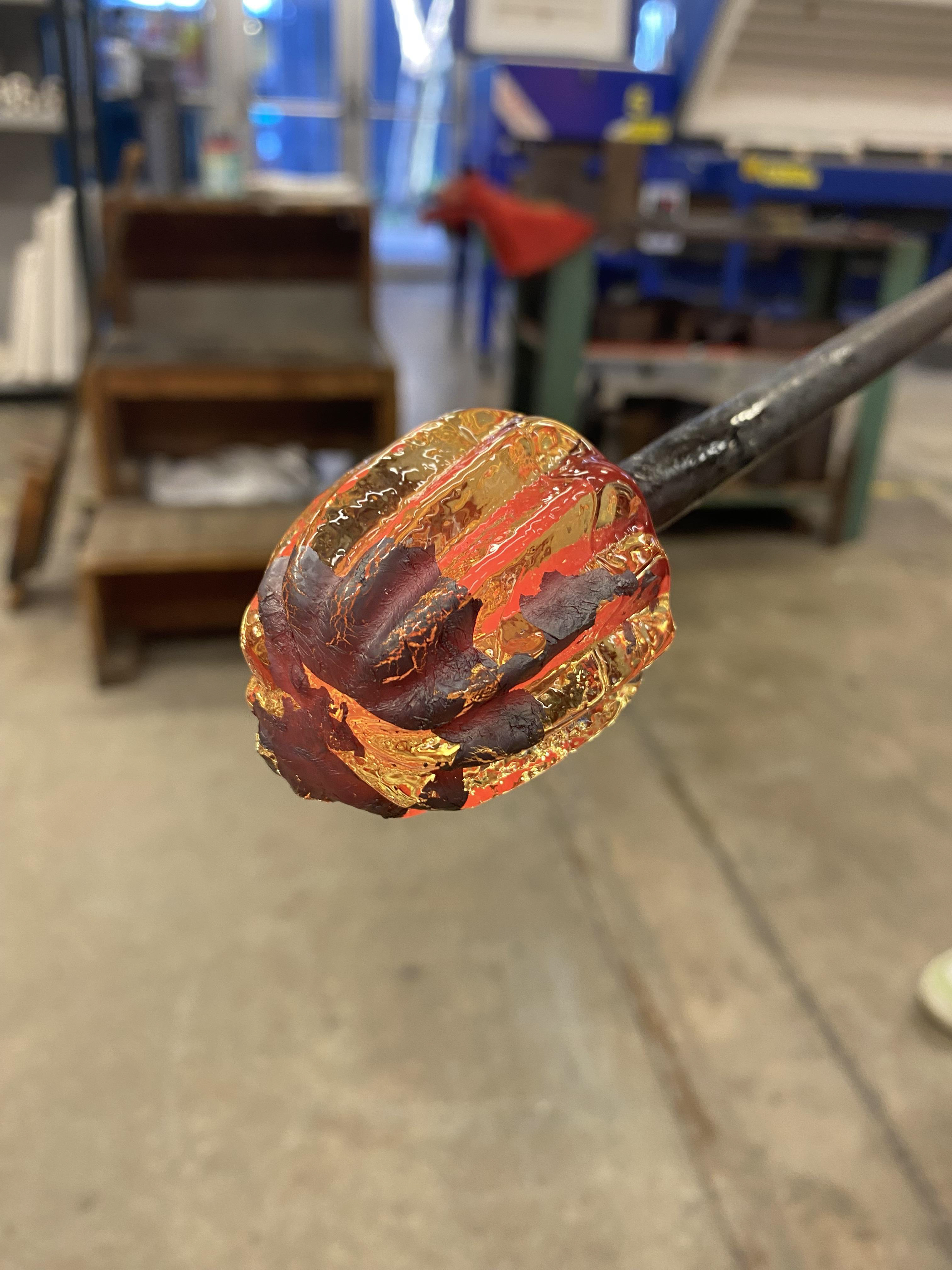
I also decided to take the use of copper foil into the hot shop and experiment. First of all I placed some foil into a iron mould. I then took a gather and and placed this into the mould so that the foil stuck to the glass. As you can see on the photos it looks as though the foil has burnt. I took a second gather to trap the foil. The results from this were good. Some of the foil burnt as you can see however some of it turned a lovely blue colour.
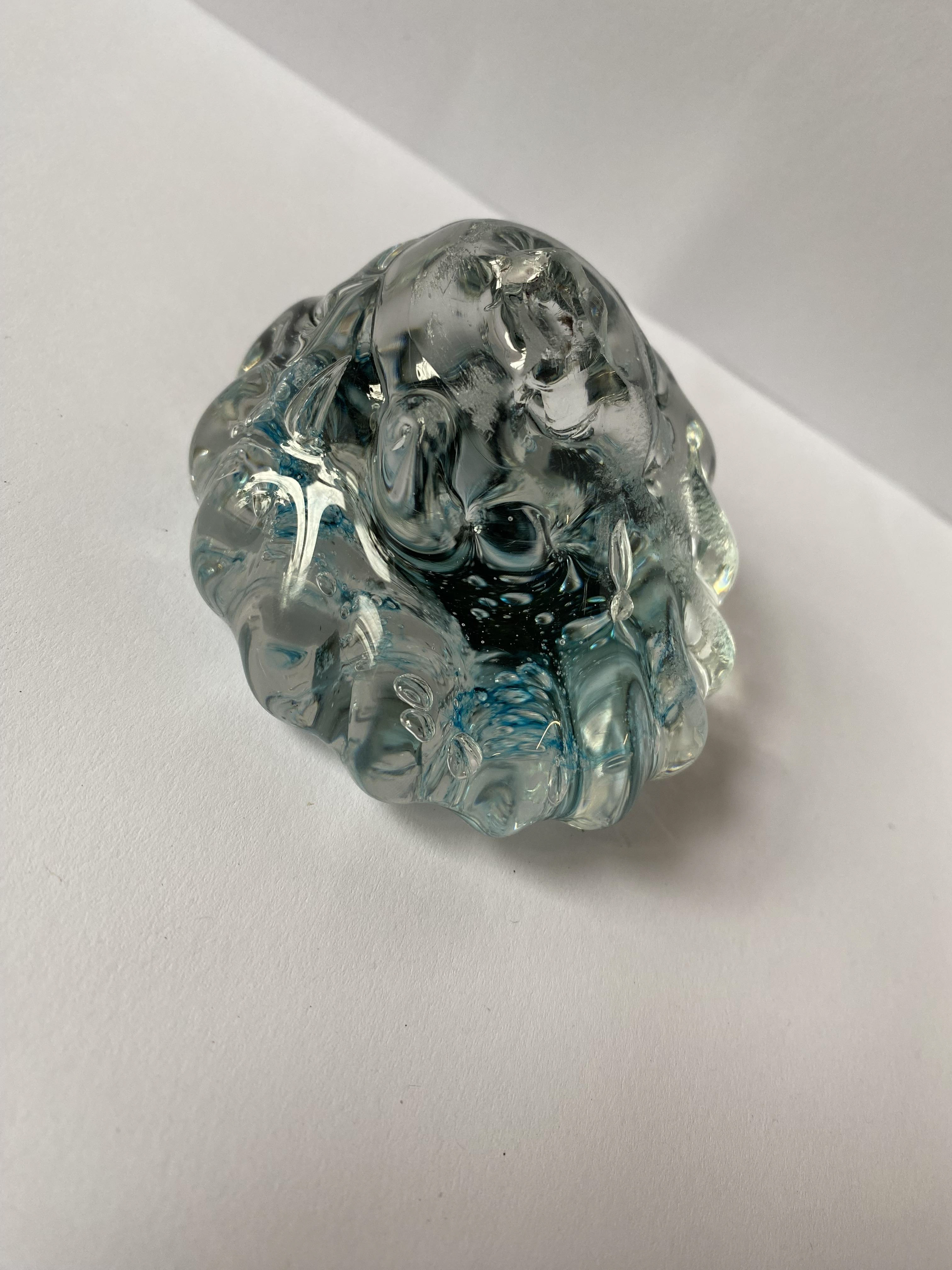


I then decided to take this one step further with blown glass. I started the process of creating a bubble and in between gathers I attached the foil to the glass to also trap it in between the layers. This caused a chemical reaction and little bubbles were formed as well as the foil/glass turning blue. I was really pleased with these results as they was unexpected. However to improve I would not blow the bubble as thin as I did so that it didn't collapse. I would also experiment this with adding colour the the glass to.
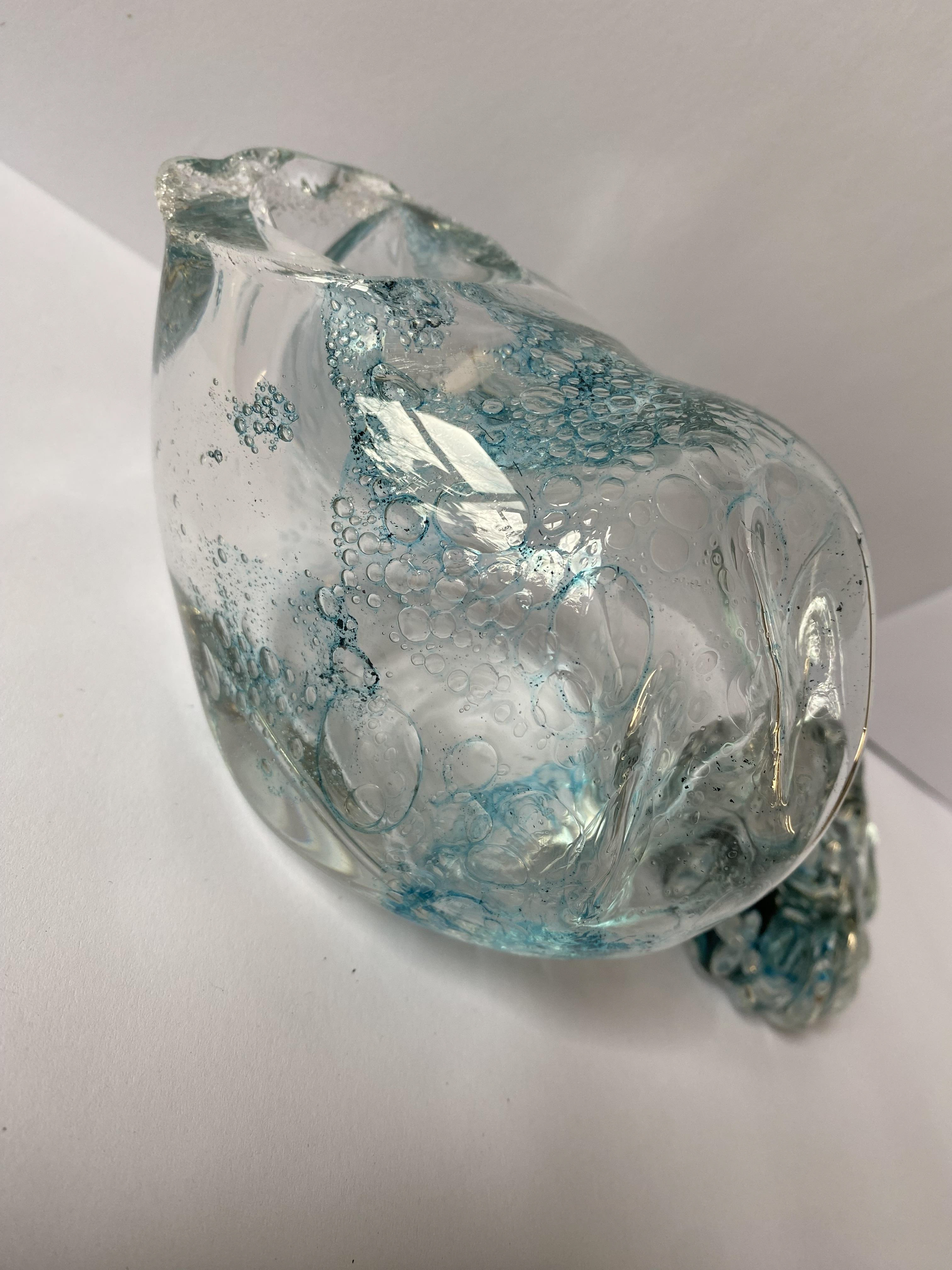
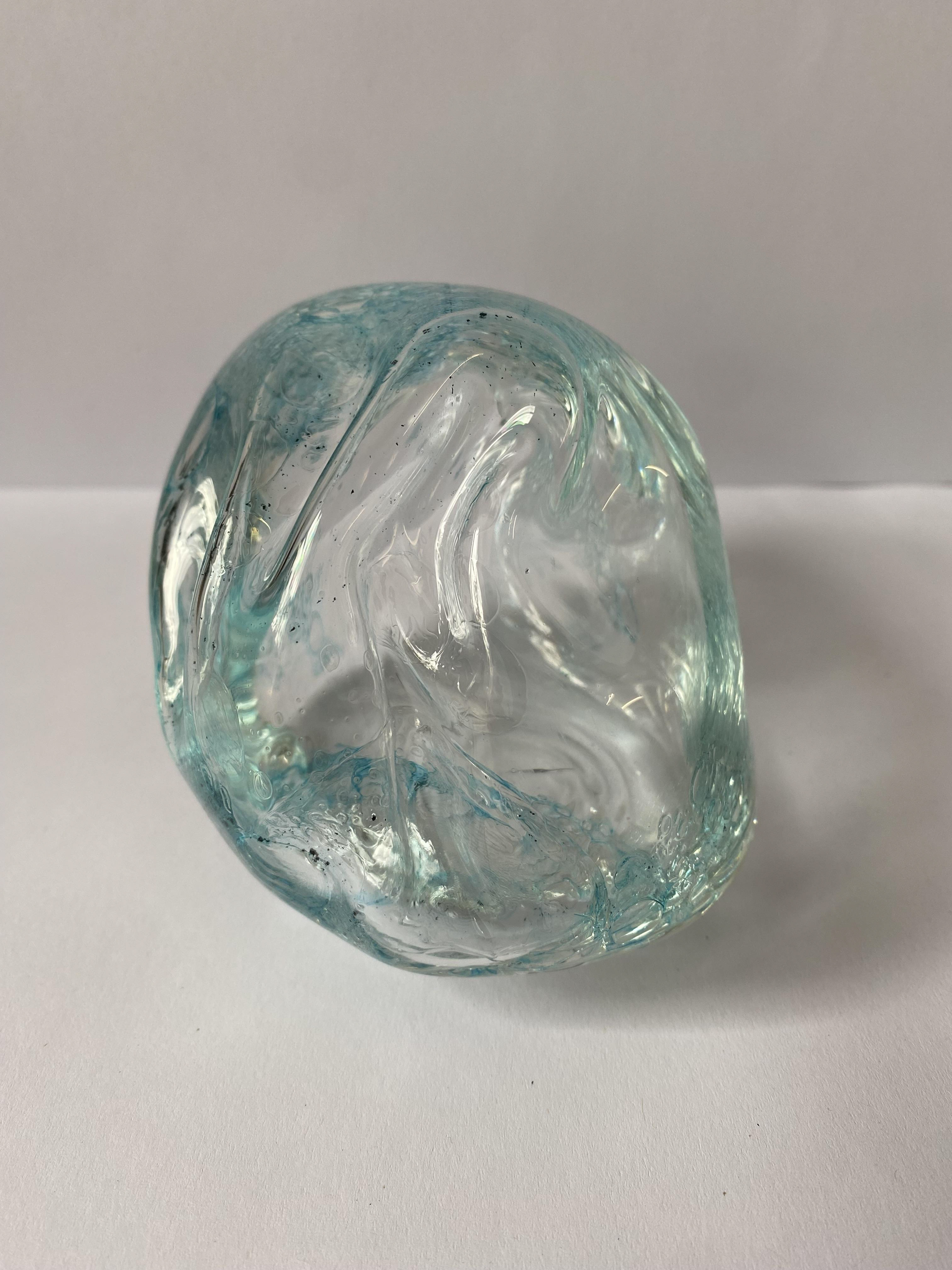
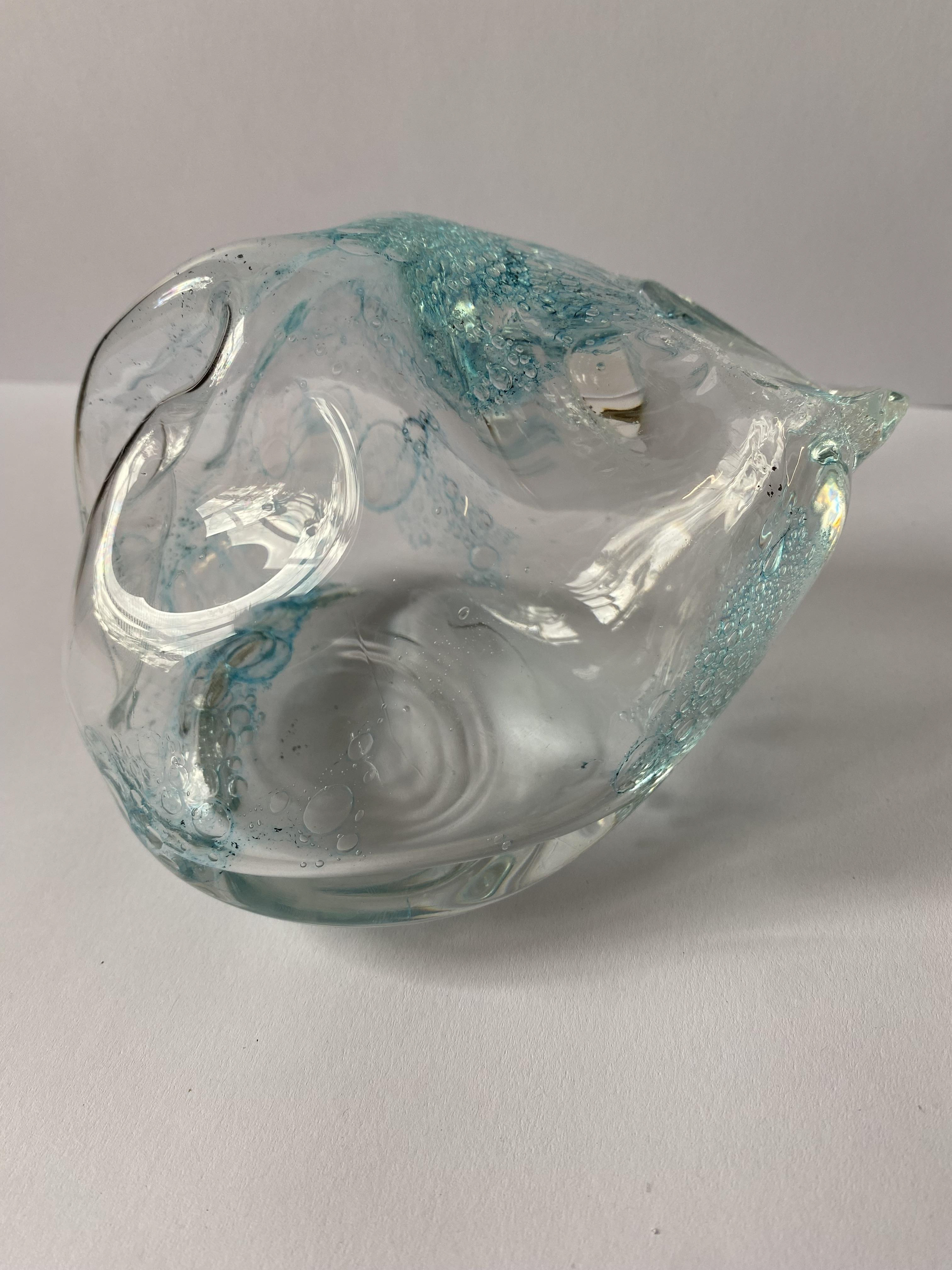
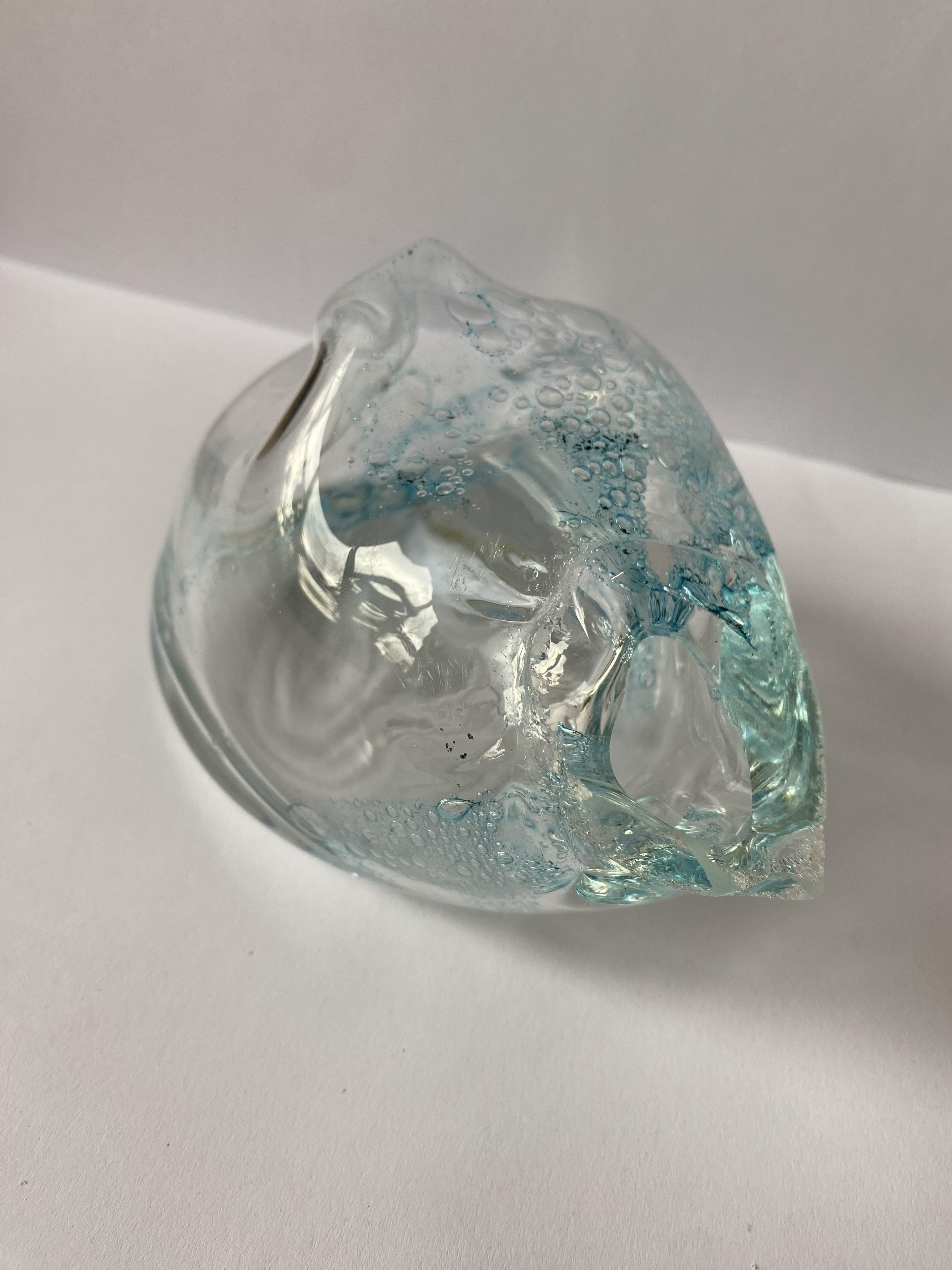
Reflection
I believe the practitioners I researched informed my practice as they give me ideas of materials to use and how they cane be used, such as wood/copper foil which got me intrigued about these materials, making me want to explore and experiment for myself. There are still approaches some of the artists have done which I did not get to fully explore myself such as Ian Chadwick's method of combining tiny pieces of glass on a full fuse as well as wanting to experiment with burnt wood like David Nash. Researching these artists have expanded my knowledge within craft, for example, I have learnt more about the properties of the materials and getting a feel for them which I believe is important at this stage. However I will be taking ideas from this unit and the practitioner's I have researched into my future in making and hopefully progress with this further.